Japan on a budget: 17 ways to get more for your yen

Mar 28, 2024 • 7 min read

These top tips to low-cost living can help you stretch your budget on a trip to Japan © Monzenmachi/Getty Images
Japan has a reputation as an expensive place to travel, but it’s an image that doesn’t hold up on the ground.
With a little strategy, a visit can be very reasonable – budget-friendly, even. Many of the country’s major sights, for example, cost nothing, and free festivals take place year-round.
With these top tips on finding the best-value places to stay, the right transportation tickets and places to eat that suit all tastes and wallets, you can make your yen go further on a visit to Japan .

A guide to daily costs in Japan
- Capsule hotel room: ¥4,000 (US$30)
- Basic room for two: ¥8,000 (US$60)
- Self-catering apartment: (including Airbnb) ¥6,000 (US$45)
- Coffee: ¥400 (US$3.50)
- Sandwich: ¥300 (US$2.20)
- Beer/pint at the bar: ¥600 (US$4.50)
- Dinner for two: ¥5,000 (US$38)
- Hour of karaoke for two: ¥2,000 (US$15)
1. Consider staying in a business hotel
These economical (and, to be honest, rather utilitarian) hotels offer the best prices for private rooms with en suite facilities.
It’s possible to find double rooms for as low as ¥8,000 (and single rooms for as low as ¥6,000), though these will be a little more expensive in cities like Tokyo , Kyoto and Osaka .
Look for places that include a free breakfast buffet – they can be substantial enough to keep you going for hours.
2. Book direct at a guesthouse or hostel
Japan has fantastic guesthouses and hostels all over; not only are they generally clean and well-maintained, but friendly English-speaking staff are usually on hand to offer near concierge-level service.
A double or single room is comparable to a business hotel (but usually has shared facilities); dorm beds cost around ¥3,000.
Some places do charge extra for towel rentals, so you can save a few yen by bringing your own. Note that rates are often slightly cheaper if you book directly rather than through a booking site.

3. Sleep in a capsule hotel in the cities
Capsule hotels, which offer small rooms with enough space for just a bed, provide a budget-friendly place to spend the night.
A capsule berth costs slightly more than a dorm bed in a hostel (¥4,000 per night), but you get more privacy.
You probably wouldn’t want to stay every night in a capsule, but they’re good for saving money in cities where hotels are pricier.
4. Go camping in the summer months
If you really want to do Japan on the cheap, you can rely on its network of well-maintained campsites in rural or resort areas; prices range from ¥500 to ¥1,000 per person or tent. Note that many sites are only open in the summer.
5. Swap a night in a hotel for an overnight bus ride
Long-distance buses, like those operated by Willer Express , are the cheapest way to get around, and longer routes have night buses, which saves a night on accommodation. There are also bus passes, which can make this an even cheaper option.

6. The Japan Rail Pass is a great travel bargain
Like the famous Eurail Pass, the JR Pass is one of the world’s great travel bargains and is the best way to see a lot of Japan on a budget.
It allows unlimited travel on Japan’s brilliant nationwide rail system, including the lightning-fast shinkansen (bullet train).
There are also more regionally specific train passes that are cheaper, so examine your itinerary carefully before deciding. Purchase a pass online or from a travel agent like JTB in your home country.
7. Ride local trains for less with the Seishun 18 Ticket
The Seishun 18 is another great deal, but with very specific conditions: for ¥12,050, you get five one-day tickets good for travel on any regular Japan Railways train (meaning not the shinkansen or any high-speed limited express trains) during a limited period of a few weeks.
The Seishun 18 Ticket is only available at certain times during the year – during school holidays (the ticket is designed for students, but there’s no age cap) – and can only be purchased from JR ticket windows in Japan.
If the timing works, and you’re a fan of slow travel, this is a unique, ultra-cheap way to get around in Japan .
8. Consider renting a car to go beyond the cities
Highway tolls and petrol in Japan are expensive; however, renting a car can be economical if you’re traveling as a group or family, or are plotting an itinerary that takes you away from major rail hubs.
9. Take domestic flights with low-cost airlines
Japan has several budget carriers, like Peach , Jetstar and Air Do , that offer bus-like pricing on some routes – just be sure to factor in the time – and cost – of going to/from the airport.

10. Japan’s shrines and temples are free to visit
The vast majority of Shintō shrines in Japan cost nothing to enter. Likewise, the grounds of many temples can be toured for free (often, you only have to pay to enter the halls or a walled garden).
11. Eat cheap food and meet locals at a traditional festival
Throughout the year , festivals take place at shrines and temples and through city streets. They’re free, an excellent way to see traditional culture come alive, and are well attended by cheap food vendors.
12. Opt for hikes and walking tours
Going on a hike or a trek is free and can be the most rewarding part of your trip: explore an up-and-coming city neighborhood , walk old pilgrimage trails or rural lanes, or get up into the mountains in one of Japan’s national parks .
Japan’s cities, especially Tokyo, have some fantastic buildings designed by many of the big names in Japanese architecture. With a little bit of planning, you could chart your own architecture tour. Ask at a tourist information center or your accommodation for suggestions.
13. Spend time relaxing in the city parks
Urban parks are generally free to enter (and some gardens are, too) and are popular with locals on weekends; pack a picnic and settle in for an afternoon of people-watching. If you time your visit right, you could be bathing in the beauty of Japan's cherry blossoms .
14. Shop for cheaper goods at a local market
Many seaside towns have fish markets, some rural spots have morning markets, and some cities still have their old-fashioned open-air markets. Visits here are a great way to connect with local culture and are often a source of cheap, fresh food.
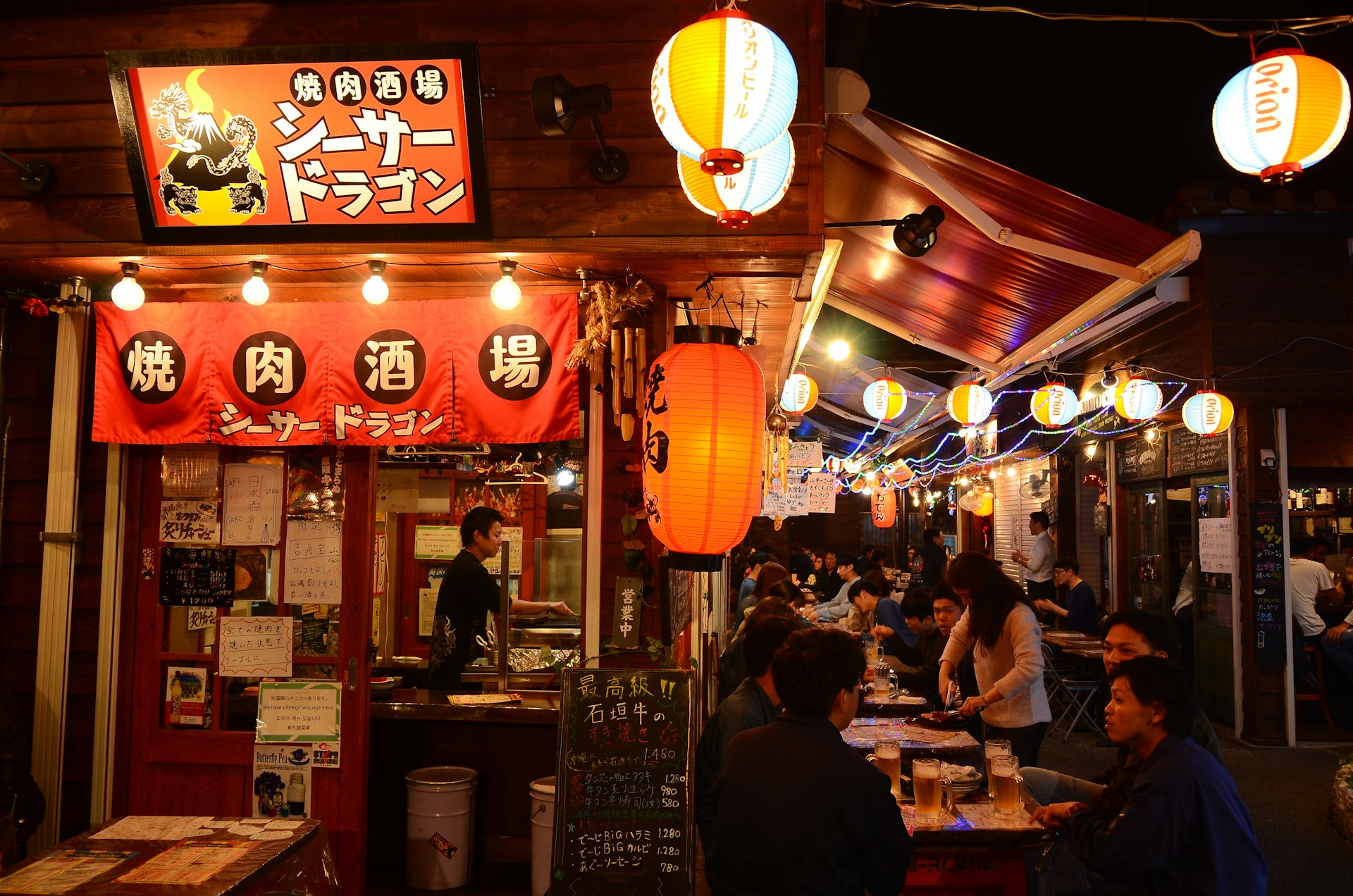
15. Choose the right dish in the right place to save money
You can get a good, filling meal in shokudō , Japan's answer to the greasy spoon, for under ¥1,000. A steaming bowl of tasty ramen can be picked up in many places for as little as ¥600.
Tachigui (stand-and-eat counter joints) sell soba (buckwheat noodles) and udon (thick white wheat noodles) for even less – starting as low as ¥350 per bowl.
Many upscale restaurants in Japan offer a smaller course at lunchtime for significantly less than they charge at dinner, so for a bargain deal have your larger meal then. In all restaurants in Japan, tea and water are complimentary, and tipping is not required.
16. Bentō are a budget alternative to a meal out
These "boxed meals," which include a variety of dishes, can be picked up for under ¥1,000 at supermarkets. Department store food halls sell gourmet ones for a little bit more; visit just before closing to buy them on markdown.
17. Get everything you need and more at the convenience store
Convenience stores are the best friend to all budget travelers. They stock sandwiches, rice balls, hot dishes and beer, all of which you can assemble into a very affordable (if not exactly healthy) meal. Accommodations always have kettles, so cup noodles are always an option.
Keep planning your trip to Japan:
Save this guide to the top things to do in Japan . Find out what to expect during every season from cherry blossoms to winter skiing . Before you book your trip, read these t op things to know before you go . Do you need a visa? Discover more here. Want to see Japan by train? Railway enthusiast John Walton shares his advice.
This article was first published May 2012 and updated March 2024
Explore related stories
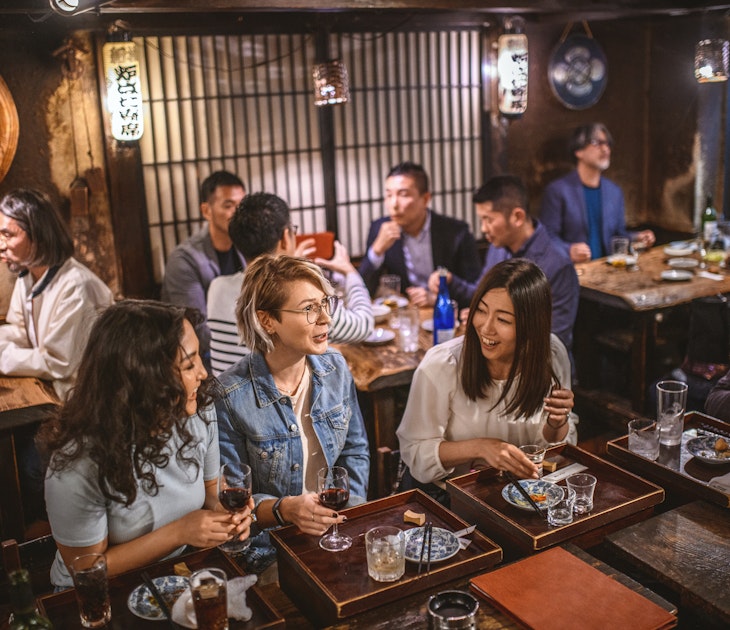
Budget Travel
Mar 23, 2024 • 7 min read
Tokyo is expensive but you don't need to max out your credit card to enjoy. Our insider tips and tricks will stretch your yen and save your bank account.
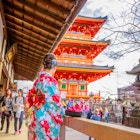
Dec 10, 2023 • 6 min read
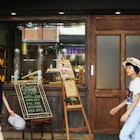
Oct 20, 2023 • 13 min read

Jan 29, 2020 • 9 min read

Jan 12, 2020 • 5 min read

Oct 28, 2019 • 19 min read

Apr 14, 2024 • 6 min read

Apr 3, 2024 • 17 min read

Apr 2, 2024 • 10 min read

Mar 31, 2024 • 7 min read

The Cost of Travel in Japan: My 2024 Budget Breakdown
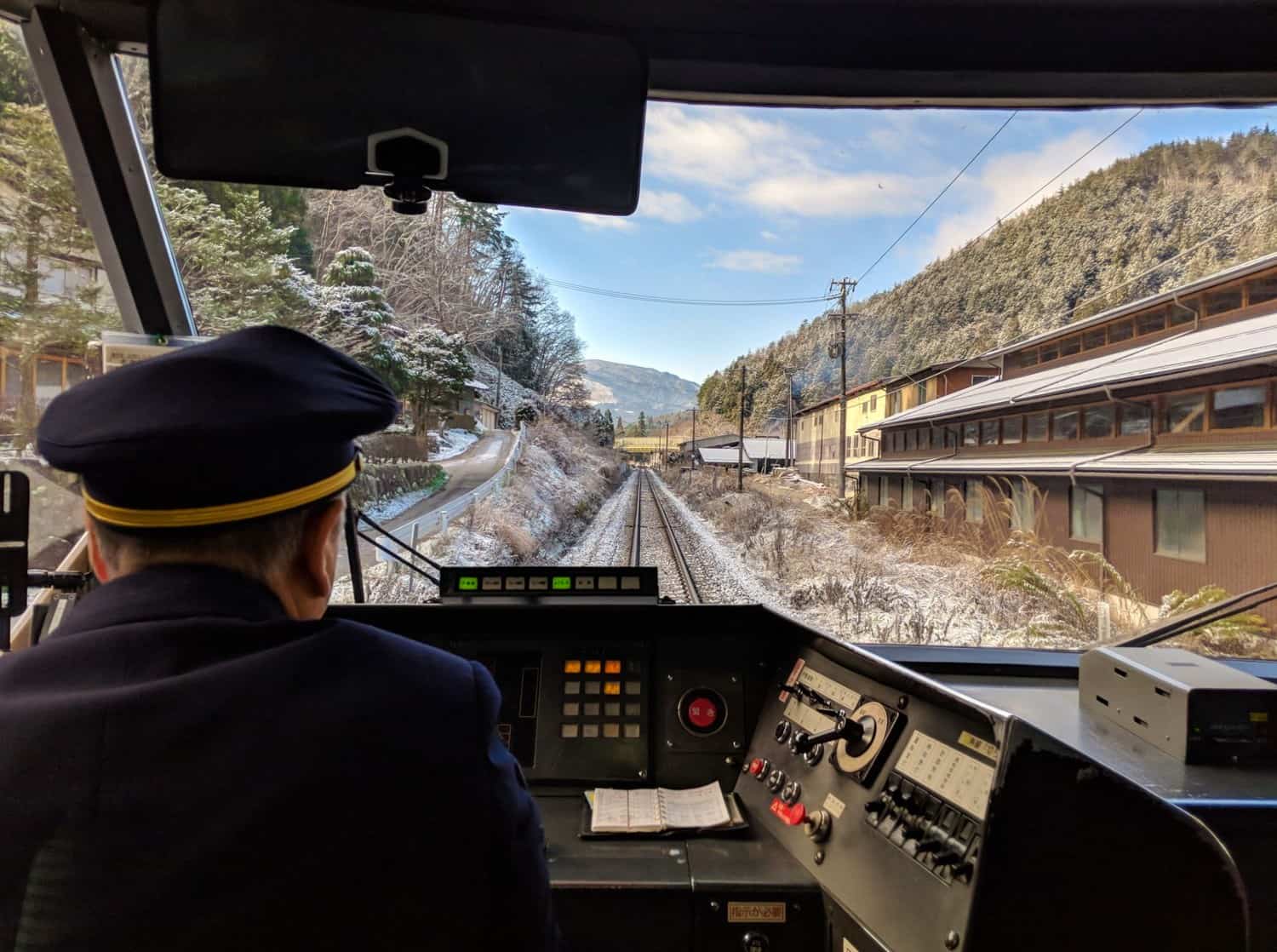
It took me six years to get to Japan.
I didn’t think I could afford it.
Every time I seriously looked into visiting, I would wince at the high cost of the train passes, read about how the hotels were super-expensive, and then fly to Vietnam instead. Or Taiwan. Or even Australia. Japan was simply too expensive for a budget traveller, so I decided to save it for when I was rich.
With that not happening any time soon, I decided to blow my money anyway, because I wanted to go and the gushing blog posts from travel writer friends had convinced me it would be worth the splurge.
Imagine my surprise, then, when I discovered that it really wasn’t that expensive.
I arrived in Japan fully expecting it to be the priciest country I’ve ever been to, but I discovered it’s more on a par with Western Europe or North America, and cheaper than Australia. It was way more affordable than Namibia , where my daily expenses came to $132, and way, way, way more affordable than the Democratic Republic of the Congo , where I averaged, um, $550 a day.
Anyway! This is about the cost of travel in Japan rather than my poor financial decisions, so let’s get started!
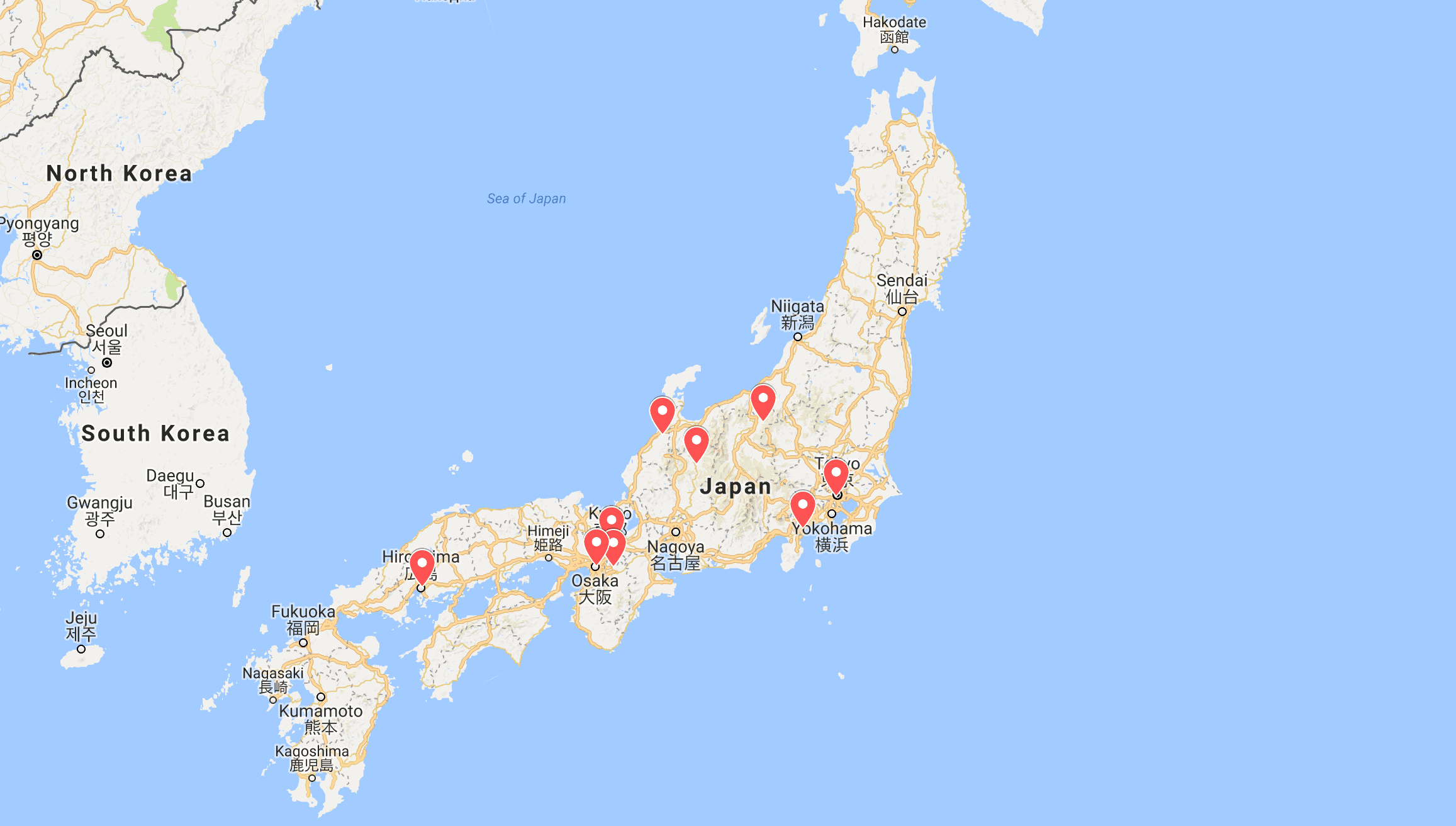
My 16-Day Japan Itinerary
Here’s a brief rundown of where I visited over my 16 days in the country — I think I managed to put together the perfect itinerary for first-time travellers to Japan .
Tokyo: 4 nights Hakone: 1 night Yudanaka: 1 night Kanazawa: 2 nights Takayama: 1 night Kyoto: 3 nights Hiroshima: 1 night Osaka: 3 nights
What’s Included in this Post
This budget breakdown covers how much I spent on accommodation, transportation, activities, food, and whichever miscellaneous items popped up while I was in country.
I’ve not included my flights into and out of Japan because this is going to vary significantly based on where you’ll be arriving from. In case you’re interested, though, I paid $320 for a return flight from Rome to Tokyo, which I scored through browsing my favourite site for flight bargains, Secret Flying .
The amounts in this guide are listed in Japanese Yen and U.S. dollars, simply because the vast majority of my readers are from the U.S. And finally, these are the three rules I always abide by on this site:
- I do not accept sponsored trips, so everything listed in this post is something I personally paid for with my own money
- I travel anonymously to ensure my experiences accurately reflect what yours will be. I don’t want special treatment!
- Every single word of this article was written by me, based on all of my own experiences. I strictly do not use AI to compose my guides.
Okay — let’s get started with my expenses.
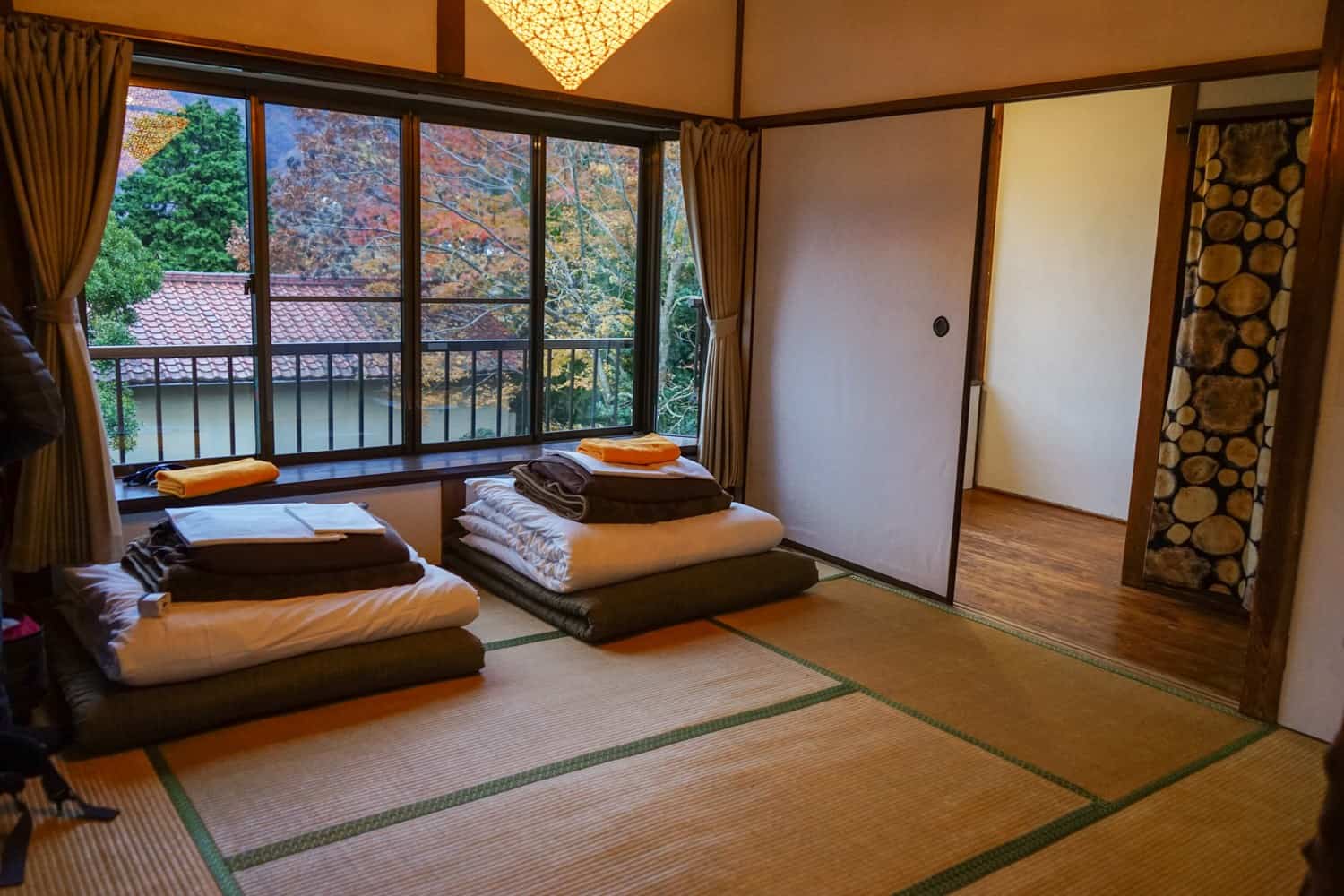
The Cheapest Accommodation Options in Japan
Like practically every country in the world, prices in Japan have increased post-pandemic.
In 2024, you’ll be paying a little more for everything than you would have done a few years ago — in fact, prices almost doubled between my first trip in 2017 and today! — however costs are still on a par with most Western countries. Travel in Japan shouldn’t be too devastating to your travel budget.
I’ll start on the lower end of the spectrum. If you’re willing to put in the time and effort, it’s possible to avoid paying for accommodation entirely.
Couchsurfing exists in Japan and allows you to stay with a local for free , usually sleeping on their sofa and enjoying a local’s insight into life in their country. Yeah, it’s not the most comfortable of living situations, but if your budget’s tight, it’s worth sending out a few requests to hosts to see if anything comes of it. You can browse through the 300,000+ Japanese hosts on the Couchsurfing site — just be sure to read the references of anybody you choose to stay with.
Housesitting is a more upmarket option, aimed at mid-range and luxury travellers. Housesitting involves taking care of somebody’s house for free while they’re away, often (but not always) looking after their pets, too. It’s best for long-term travellers or retirees, as you can’t pick and choose dates and destinations, so you’ll need to have a lot of flexibility as to where you go and at what time of year. If you do have that freedom, though, it’s a wonderful way to cut down your travel expenses, soak up some home comforts, and live like a local for a while. Trusted Housesitters is the main site for getting started with housesitting, as they have the highest number of listings.
Finally, when it comes to free accommodation, you could take a look at WorldPackers in Japan , where you’ll be able to volunteer for locals in exchange for food and board. There are some seriously cool options available on the site right now, from helping harvest honey for a bee farm in the countryside to lending a hand in the garden of a Buddhist temple. Readers of this site get a $10 discount for WorldPackers with the promo code neverendingfootsteps .
If you’re not looking to travel for free and just want a clean and comfortable room to sleep in, there are plenty of great budget options, too.
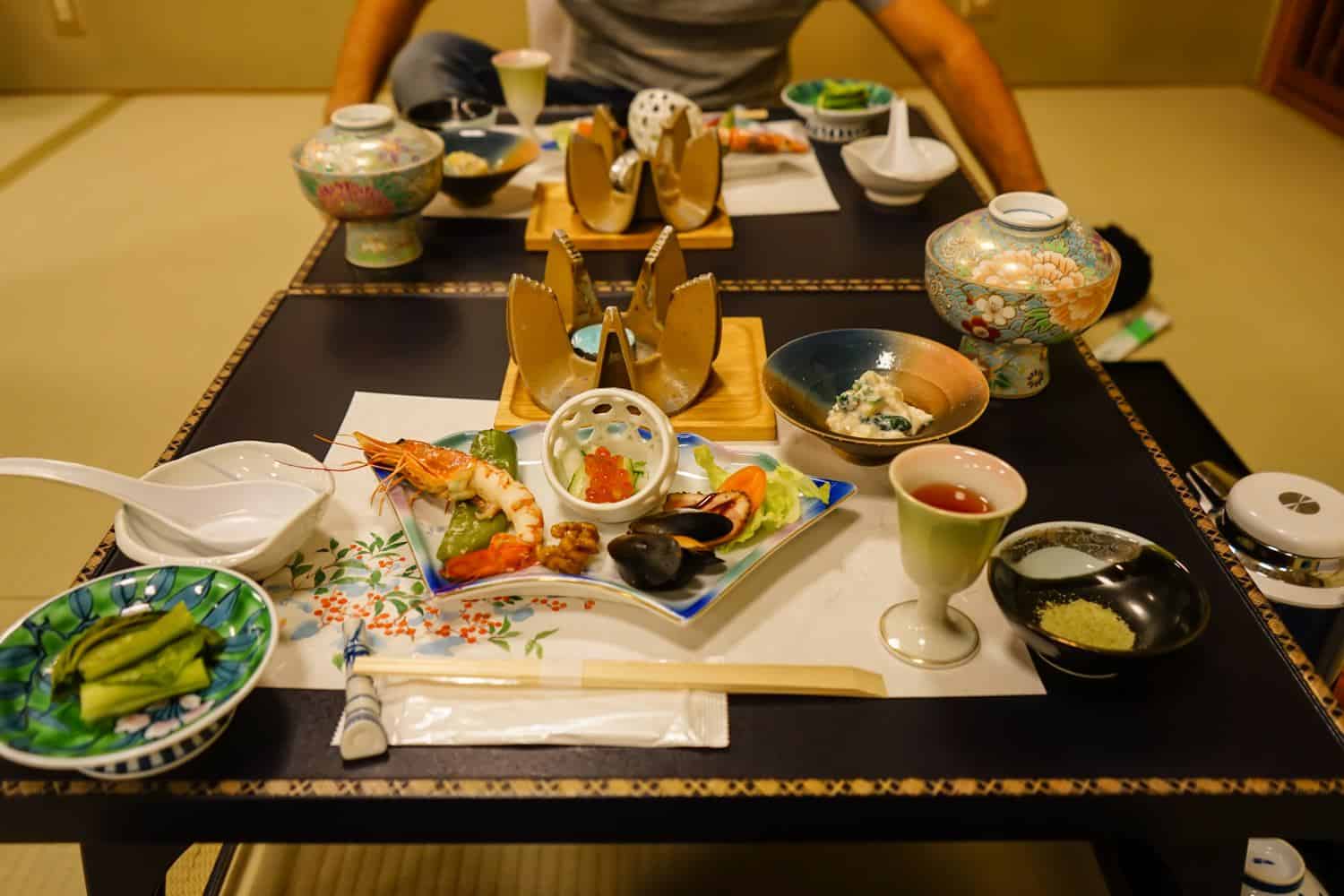
And then we have hostels . In Japan, you’ll come across hostels all over the country, finding them on tiny islands, large cities, and even within the national parks. They’re one of your best options for saving money.
Hostels in Japan are on a par with the rest of major cities in East Asia, and you can expect to spend $25 a night for a dorm bed for a well-reviewed hostel, with the price increasing slightly to around $45 a night for the absolute best of the best.
When it comes to private rooms in hostels, you’ll be looking at $50 a night for a clean, basic room in a good location, so if you’re travelling with friends or with your partner, you may find it cheaper to grab some privacy over settling for two beds in a dorm room. $90 a night will get you an exceptionally well-reviewed private room in a hostel.
I use HostelWorld to find the cheapest hostels, as they tend to have the greatest number of listings at the lowest prices.
And then there are hotels, which I’m going to jump into next.
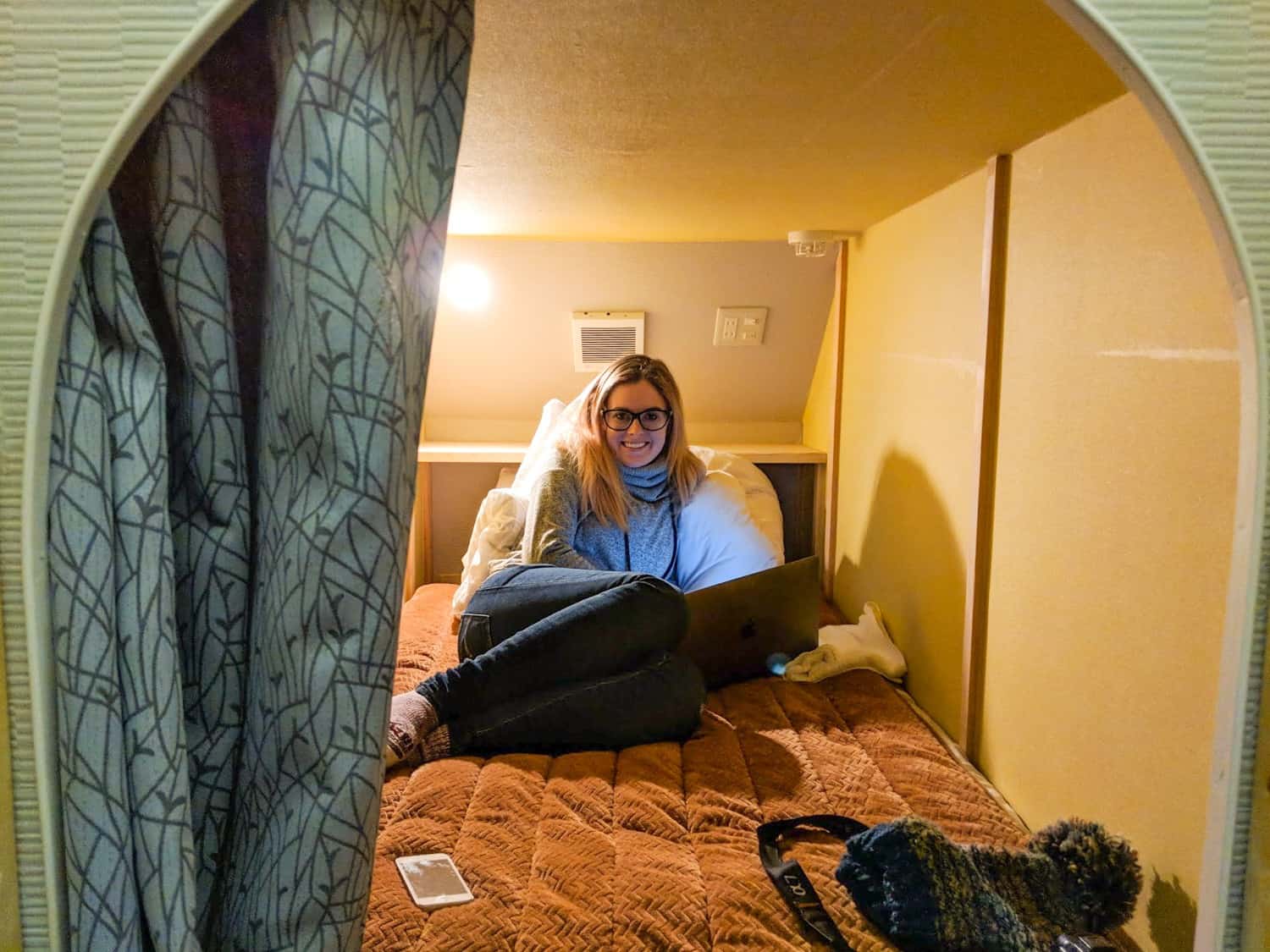
The Cost of Accommodation in Japan
There are so many different types of accommodation in Japan! I attempted to experience as many as possible while I was in the country.
I stayed in a capsule hotel, prioritised hunting down a ryokan, slept on a tatami mat floor, stayed in family-run guesthouses, and checked out some pretty cool hostels. While I did attempt to save money by staying in some cheaper places, I was also happy to splurge on extremely well-rated rooms, too.
As always with these budget breakdowns, I like to share the prices of where I personally stayed, along with a description of the property and whether I’d recommend choosing it, too — hopefully this helps make your trip planning easier!
I visited Japan with my partner, Dave, and we travelled on a mid-range budget; searching out good value accommodation that was highly-rated and in a central location. We prioritised locally-run properties that weren’t too flashy or fancy; for us, a cosy vibe, unique furnishings, and welcoming staff are far more important than the generic decor of a hotel chain.
(Oh and just a quick note: hotels do charge different prices across a range of dates, depending on how busy a certain travel period is going to be. Because of this, it’s hard to be super accurate in the costs that I list. To get to the quoted prices below, though, I looked at the rates across the next six months and took the average: it could be slightly cheaper or more expensive, depending on when you’re visiting.)
Tokyo: $135 a night Odds are, you’re probably going to kick off your Japan adventures in Tokyo, and if so, it only makes sense to really throw yourself into the local experience. That’s why we decided to stay at this lovely onsen-ryokan in Shinjuku. (Whenever readers ask me which neighbourhood to choose in Tokyo, I always recommend Shinjuku or Shibuya.) The reason why I loved this specific property, though, is because it’s a ryokan (traditional Japanese Inn) that also has an onsen (hot pool). It’s a great way to jump immediately into all things Japanese.
And it was wonderful; my favourite hotel in the country. The rooms were small and cosy and felt super-traditional and calming. The views over Tokyo at night from the window were incredible. And the rooftop onsen? With free popsicles afterwards? So good. It’s located in a quieter neighbourhood, but still only a 10-minute walk to the subway. I really recommend this one!
Hakone: $80 a night In Hakone, we opted for a private room in a lovely guesthouse , with a tatami mat floor to sleep on and a private onsen on-site. The photo of the tatami mat room above is of our room here. It ended up being another one of our favourite stays in Japan! The staff were lovely and there was a restaurant/bar that served up fantastic pizzas. It had a cosy and chilled-out atmosphere, with great food and wine, and lots of blankets to snuggle up with as we ate. It was also worth staying here just to experience the private onsen — we got to go in as a couple!
Yudanaka: $105 per night In Yudanaka, we opted for a stay in a wonderful little ryokan ; this one was even more traditional than the one in Tokyo! Often, ryokans can be super-expensive in Japan — as much as $500 a night for the experience — so I was thrilled to have stumbled across a more budget option in Yudanaka. It was run by an adorable Japanese couple and their house came with a private onsen, return transport to see the snow monkeys , and one of the most extravagant meals of my life. A kaiseki is a multi-course (like, 20 courses) meal that will see you eating roughly a week’s worth of food in a single night, sampling fresh, local-to-the-region Japanese cuisine. It was phenomenal, and I loved having no idea what anything was. It even included homemade plum wine, which was so good! I highly recommend the experience (although strongly advise you not to add breakfast to your booking — we were still so full that we couldn’t eat any of it!)
Kanazawa: $65 per night Kanazawa is home to some seriously cool accommodation! We had a hard time choosing where to stay because every property looked so cosy and inviting. In the end, we settled on this minimalist, modern set-up — it was great value for money relative to most other places we stayed in Japan, especially when you consider it’s only been open a year. It’s in a great location, right outside Omicho Market, where you’ll sample the best sushi of your life. Also within walking distance is Kanazawa Castle and Kenroku-en Garden, so you’re really staying in the heart of it all. I recommend signing up for the traditional Japanese breakfast, as you’ll likely not have had anything else like it before! There’s also an onsen and laundry facilities (always appreciated mid-trip!), and the staff were so sweet and kind.
Takayama: $76 per night In Takayama, we stayed in a small, locally-run guesthouse in the centre of town. It felt like particularly good value for Japan, as it was one of the few places we stayed that you could describe as spacious! It even had a kitchen and washing machine. The beds were comfortable and the hotel was within walking distance of everywhere, including the train station. It was quiet, the staff were lovely, and overall, it made for a comfortable stay!
Kyoto: $84 a night In Kyoto, we stayed in a cosy hotel in the heart of town — we loved this place so much in 2017 that when we returned to Japan this year, we knew we’d have to stay there again! The property was in a fantastic location for exploring Kyoto and the bathrooms were nicer than anywhere else we stayed. It’s one of the top-rated guesthouses in the city — while also being one of the cheapest — so when you take that into consideration, I’m convinced you won’t find anywhere better to stay in Kyoto.
Hiroshima: $40 per bed In Hiroshima, we opted for a capsule-style hostel because I didn’t want to leave the country without trying one — you can see a photo of the “capsule” at the top of this section. Fortunately, we found ourselves in a room with only two other people staying there, so our capsule room with 20-odd beds was light on snorers. The owner of this place was ridiculously lovely and it was within walking distance of all of the monuments and activities. Really great bathrooms, a fun common area, and a cheap price: surprisingly, I would have stayed another night!
Osaka: $108 a night I rounded off my time in Japan with a little bit of a treat, opting for this four-star hotel that offered a ton of freebies. It’s all about the onsen here — it’s open all day and is simply beautiful. After you’ve finished your daily bathe, there’s free ice cream to eat, free comics to read, massage chairs to relax in, and even free ramen to slurp on. Yes, really! It was in a great location for Osaka — just a couple of blocks from the nearest metro station. The decor was calming and traditional; the perfect way to say goodbye to Japan.
In total, I spent an average of $97 per day on accommodation over my 16 days in Japan.
The Cost of Transportation in Japan
Okay, so let’s talk about transportation now. And specifically transportation post-2024.
It used to be the case that practically every visitor to Japan would invest in a JR pass (a train pass that grants you unlimited rides over a certain time period). After all, the best way to explore this country is by train, and by buying said rail pass, you’d be saving a significant amount of money on your trip — especially if you were taking a similar route to my one. A JR Pass pre-October 2023 would have saved me a whopping $175 over buying individual train tickets.
Seems like a no brainer, right?
In October 2023, the Japan Rail Pass skyrocketed in price. No exaggeration here: prices increased by an incredible 70% .
What a baffling decision.
What that means is that it’s not such a clear-cut decision anymore. The Japan Rail Pass still holds some benefits: If you’re a first-time visitor to Japan and don’t feel too confident about buying multiple single-journey train tickets, the pass will make it a lot easier: you just show it at any station and get on a train. You won’t need to worry about any extra charges and will have the flexibility to take train-based day trips whenever you want.
For most travellers, however, the value proposition is simply no longer there. For example, my recent 16-day itinerary (Tokyo – Hakone – Tokyo – Nagano – Kanazawa – Takayama – Kyoto – Nara – Kyoto – Hiroshima – Osaka) cost me 50,000 Yen ( $350 ) with single tickets. However, a 14 day rail pass is priced at 80,000 Yen ( $530 )!
Alas, the Japan Rail Pass is no longer something I recommend — unless you’re going to be taking enormous, lengthy rail journeys (like across the whole country) in a short period of time. Alternatively, if you do want that added sense of security and ease by not having to juggle a dozen train ticket bookings, you may find the extra price worth it.
So with all that being said: you’re most likely going to be using the JR West website to book your single train tickets online. This covers the entirety of Japan that’s west of Tokyo (all of the places I visited were west) and allows you to book your train tickets all in one place — and then you can reserve a seat on said train one month before its departure date. Honestly, it’s pretty easy to use, book, and reserve — and being able to do it all online means you can get everything sorted before you step foot in the country.
Let’s take a look at the some of the prices that a typical train journey in Japan costs — in this case I’ll use my itinerary mentioned above to plot out the costs:
Tokyo – Hakone: 2,500 Yen ( $17 ) Hakone – Tokyo: 2,500 Yen ( $17 ) Tokyo – Nagano: 7,500 Yen ( $50 ) Nagano – Kanazawa: 8,500 Yen ( $57 ) Kanazawa – Takayama: 5,000 Yen ( $33 ) Takayama – Kyoto: 9,000 Yen ( $60 ) Kyoto – Nara: 700 Yen ( $5 ) Nara – Kyoto: 700 Yen ( $5 ) Kyoto – Hiroshima: 10,500 Yen ( $70 ) Hiroshima – Osaka: 10,000 Yen ( $67 )
So if you were to replicate my Japan route exactly, you would end up spending $381 on rail tickets. It sounds like a lot of money but I do want to stress that the trains in Japan are some of the best in the world. They’re spotless, comfortable, modern, and lightning-fast. You will feel like you’re travelling in luxury.
If you’re not down to spend hundreds of dollars on trains, then the buses are going to be your best option. They’re cheaper, slower, less comfortable, often run overnight, and are complicated to book. The best sites I’ve found for booking long-distance buses is Willer Express and Japan Bus Online — but even they don’t run buses for several of the routes I took on my trip.
I thought it would be a good idea to share the cost of buses for the trip I took, so that you can compare them to the train and see how much money you could save.
Tokyo – Hakone: 2,250 Yen ( $15 ) Hakone – Tokyo: 1,800 Yen ( $12 ) Tokyo – Nagano: 2,200 Yen ( $15 ) Nagano – Kanazawa: No bus for this route Kanazawa – Takayama: 3,300 Yen ( $22 ) Takayama – Kyoto: 3,800 Yen ( $25 ) Kyoto – Nara: No bus for this route Nara – Kyoto: No bus for this route Kyoto – Hiroshima: 4,300 Yen ( $29 ) Hiroshima – Osaka: 4,000 Yen ( $27 )
As you can, see prices are generally around half what they are for the trains. You’d be looking at paying $212 in total for taking the bus, with three trains replacing the routes where I couldn’t find any existing buses.
We’ve covered the main ways to get in between the destinations, so now it’s time to take a look at how much you could spend on transportation within the cities.
Fortunately, this was where I found Japan to be really affordable. I love to explore cities on foot and I found many of the places I visited to be surprisingly walkable. In total, I spent $6 on the metro in Tokyo, $7 on the metro in Osaka, and $2 on the metro in Kyoto! Everywhere else, I just walked.
A reasonably big expense was our Hakone Free Pass (spoiler: not free), although this was more of a combined transportation and activity cost. At a cost of 6,100 Yen, or $41 , It provides you with unlimited transport around Hakone (where you’ll find Mount Fuji), and discounted entrance to all the attractions in town. If you’re going to Hakone, this will save you money because it covers everything you’ll definitely do there.
The Cost of Food in Japan
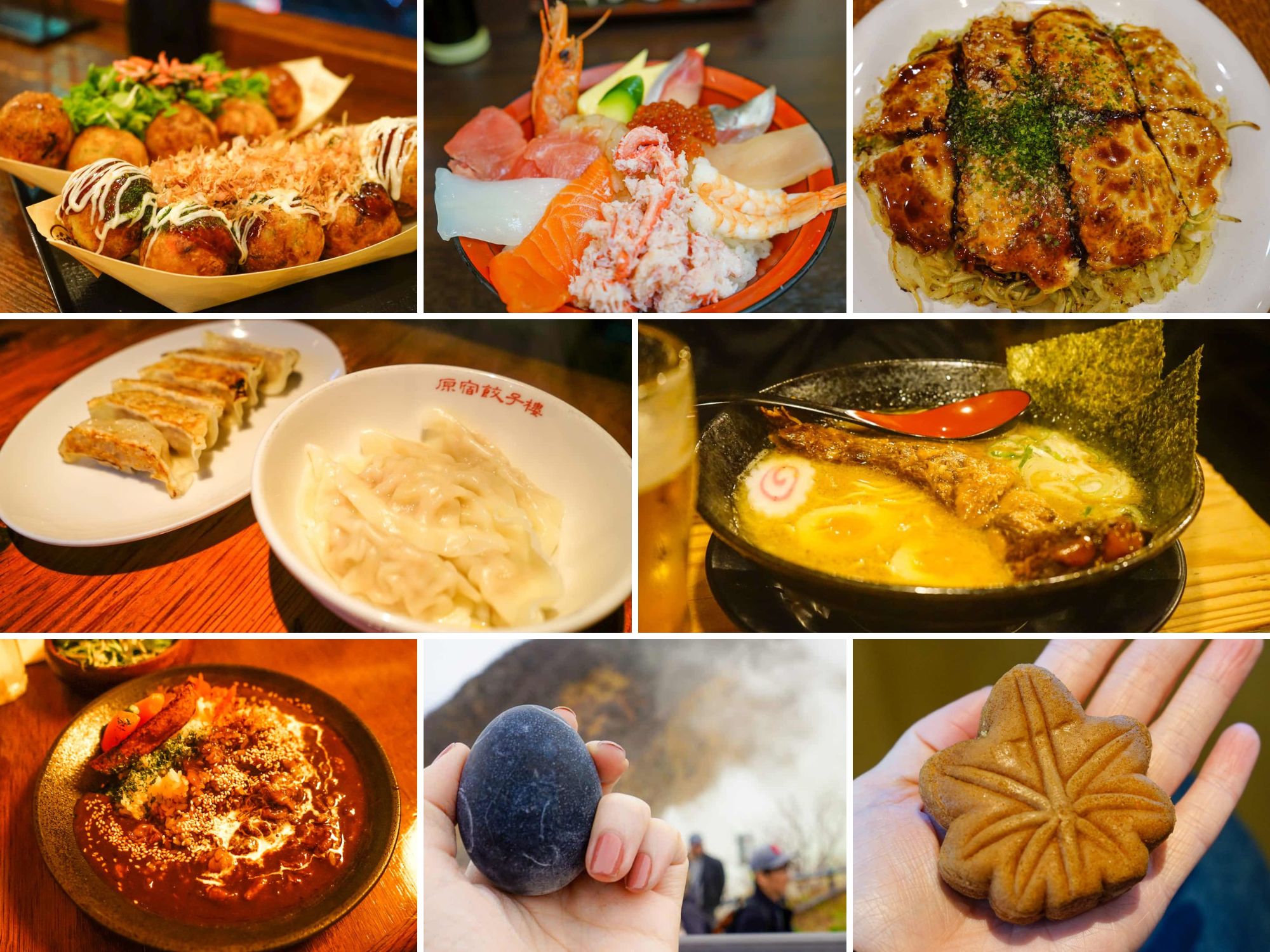
If you love Japanese food but have yet to travel to its homeland, you have such a treat in store for you. The food in this country is phenomenal; packed full of flavour and surprisingly inexpensive. It’s true: eating out is the easiest way for you to cut costs in Japan.
In fact, the vast majority of my meals in this country came to less than ¥1000 ($6.50) .
I’ll start first by breaking down the typical costs that you can expect to spend on the most well-known of Japanese dishes. Then, I’ll cover what you’ll be likely to eat for breakfast, lunch, and dinner, along with the costs associated with each of these meals. Finally, I’ll round out the section off by sharing some of my favourite food experiences in the country and describe which options are worth a splurge and which ones you can happily skip.
You can’t think of Japan without picturing sushi, so that feels like the most logical place to start. If you eat fish, this is going to be such a revelation for you! The sushi and sashimi in Japan is better than any I’ve had in the world and it was here that I finally understood how raw fish could ever be described as buttery.
To combine your sushi/sashimi-eating with a cultural experience, head to Tsukiji Outer Market in Tokyo or Omicho Market in Kanazawa. For a bowl filled with a selection of sashimi, like in my photo above, you’ll pay between ¥1,800 and ¥4,000 , depending on the size and quality of the fish. That’s the equivalent of $12-$25 .
Slurping on a steaming bowl of ramen is my personal definition of a true travel joy, so I opted for this cheap and cheerful dish most evenings as a way to save money. Note: the ramen in Japan is incredible , so don’t interpret my frugality as a hardship. Once you’ve tried the ramen here, I’d be surprised if you didn’t immediately start planning a return visit.
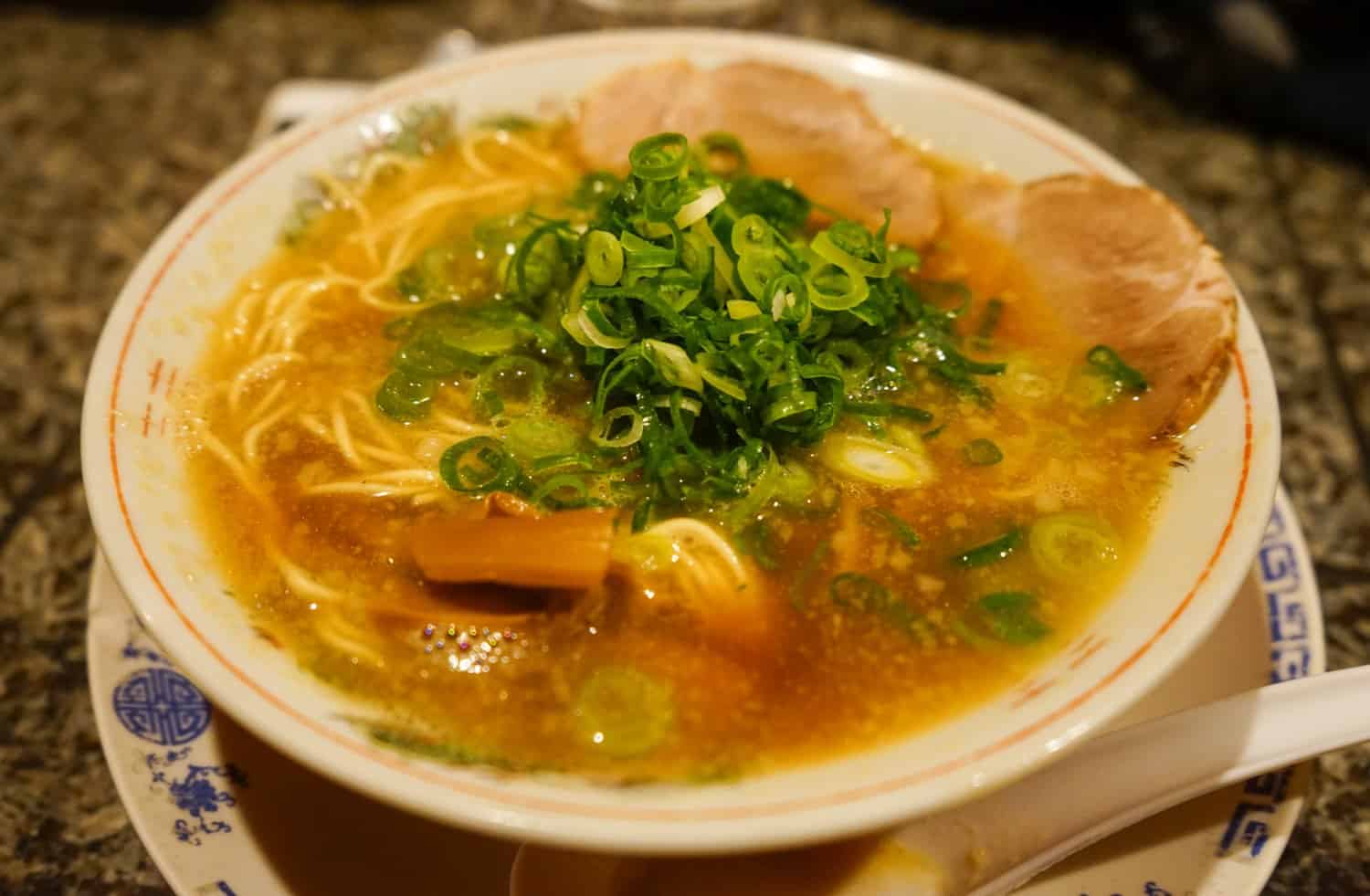
One of my favourite aspects of ordering ramen in Japan is how you’re given the option to customise the dish to your own tastes. It’s not uncommon to be handed a small slip of paper where you’ll get to mark down all of your preferences. Do you want your broth to be rich or light? Your noodles to be firm or soft? Added spiciness or none at all? Extra spring onion? A hard- or soft-boiled egg? Most options come out to ¥1000 ($6.50) for a bowl of pork ramen.
Speaking of cheap and delicious food options, I highly recommend sampling a couple of versions of okonomiyaki while you’re in town. This savoury pancake dish is so delicious, extremely filling, and inexpensive at just ¥1000 ($6.50) – ¥1500 ($10) . The cities of Osaka and Hiroshima each offer up their very own version of okonomiyaki and strong opinions are held by many over which is best! If you’ll be heading to both destinations, make sure you try one of each and let me know which is your favourite.
A dish that I tried for the first time while I was in Japan was Japanese curry and what a wonderful experience that turned out to be! In comparison to Indian curries, I found the Japanese version to be richer, sweeter, and less creamy, with plenty of umami vibes. Once more, you can expect to pay ¥1000 ($6.50) for a plate of katsu (pork cutlet) curry.
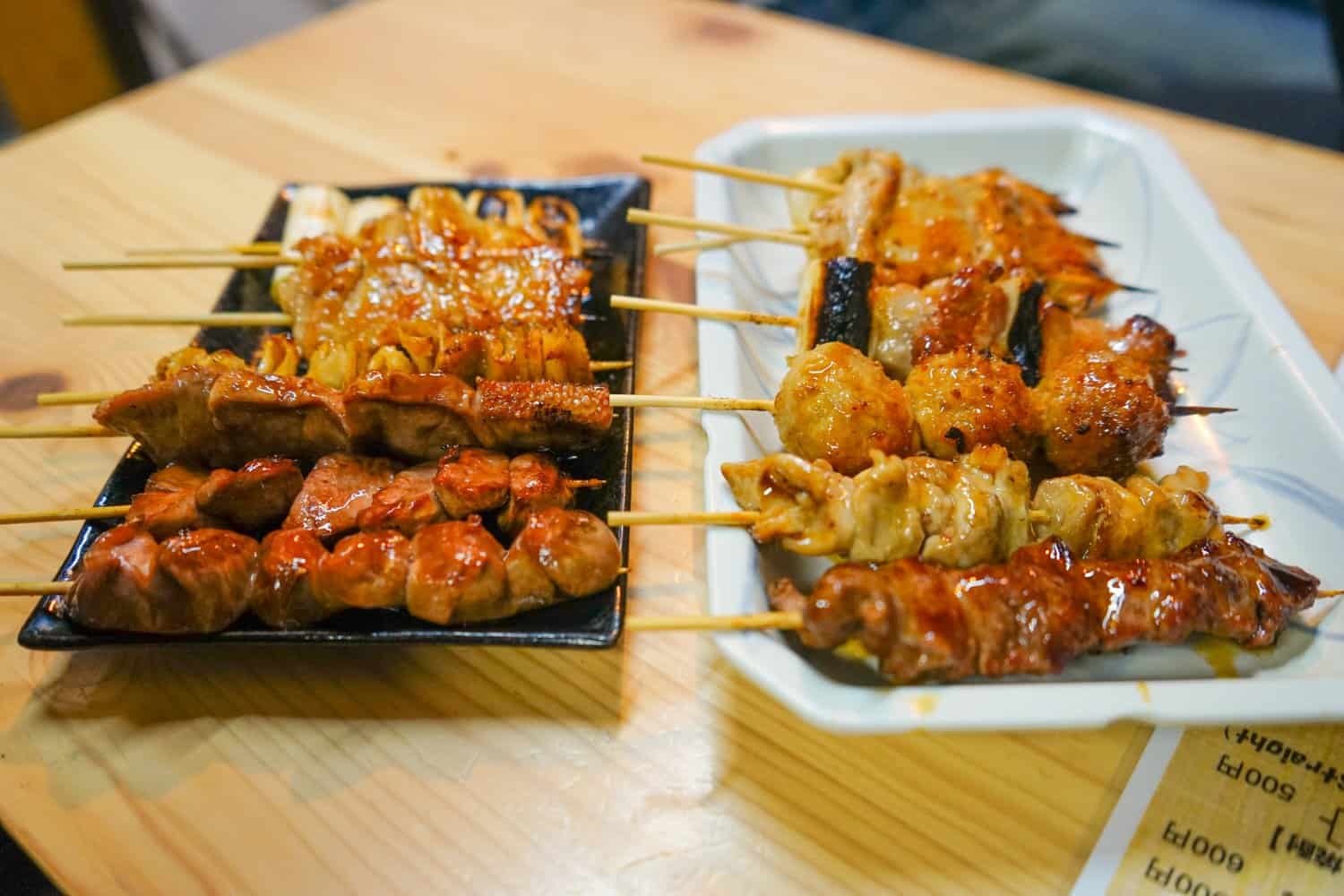
One of the most delightful aspects of my Japanese eating experiences was sampling all of the different snacks in the country.
Street snacks like takoyaki were ¥500 ($4.50) . We splurged on our kaiseki experience at our guesthouse in Yudanaka and paid ¥4000 ($36) for our food extravaganza. It’s a budget option compared to many other kaisekis, which can easily come to $100 for the experience, but still our most expensive meal. Another splurge was on sushi in Kanazawa, which I paid ¥2000 ($18) for.
Whether you’re on a budget or ready to splurge, it’s essentially impossible to eat badly in Japan. If you’re on a really tight budget, you can even get surprisingly decent food from 7-Eleven !
My total cost of food in Japan averaged out to $23.20 per day.
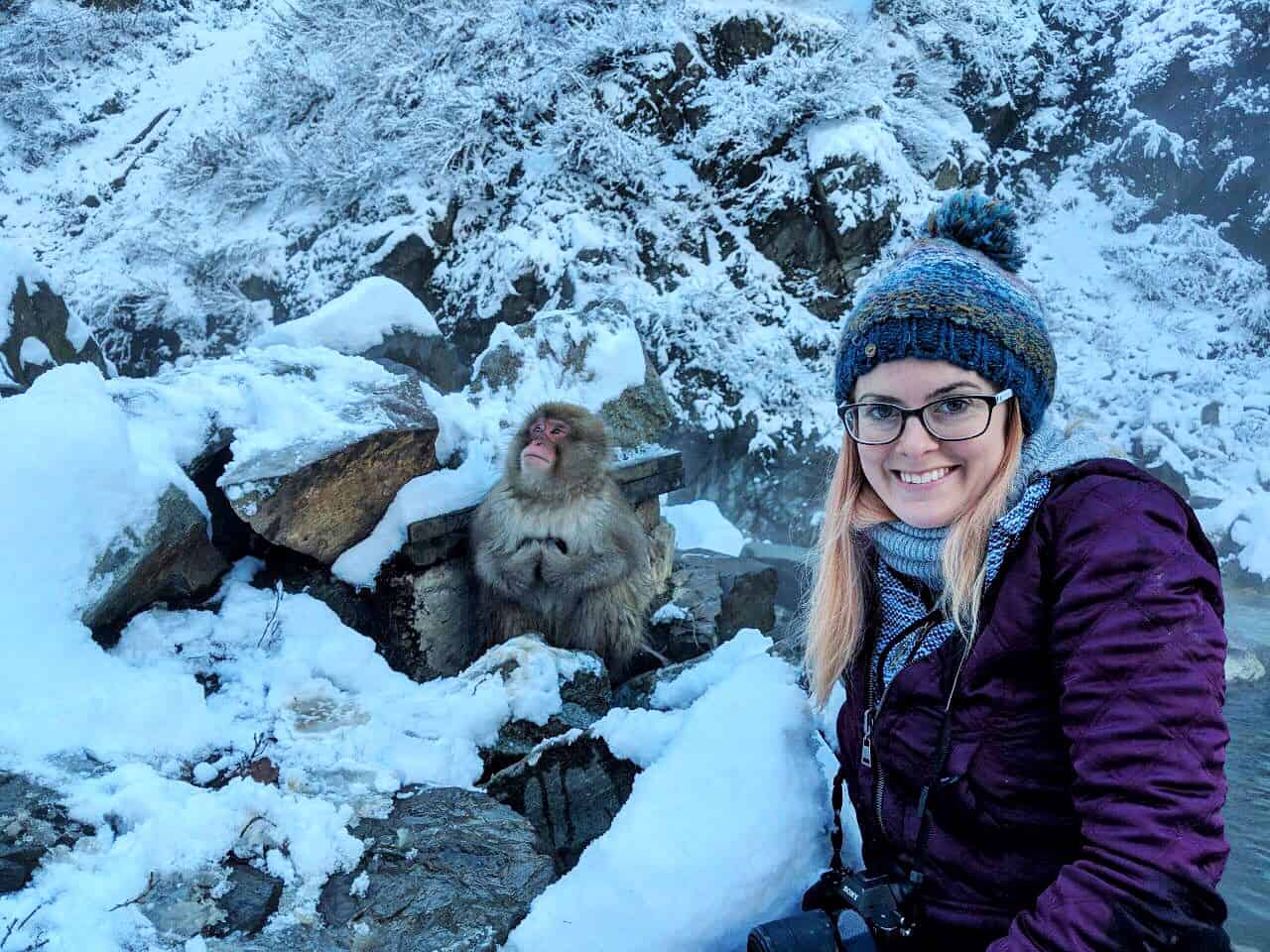
The Cost of Activities and Entrance Fees in Japan
Activities and entrance fees in Japan were very reasonably priced, and I never found myself outraged over the cost of anything. You’ll typically pay less than $5 to enter most temples, museums, and gardens.
Here’s how I spread my cash around:
Entrance fee for the hedgehog cafe in Tokyo: $13/1400¥ Entrance to the Snow Monkey Park : $7/800¥ Entrance to Kenroku-en gardens in Kanazawa: $3/310¥ Entry to the Golden Pavilion in Kyoto: $3/300¥ Entry to Ryoan-ji zen garden in Kyoto: $5/500¥ Ticket for the Hiroshima Peace Memorial: $2/200¥
My total cost of activities in Japan averaged out to $2 a day.
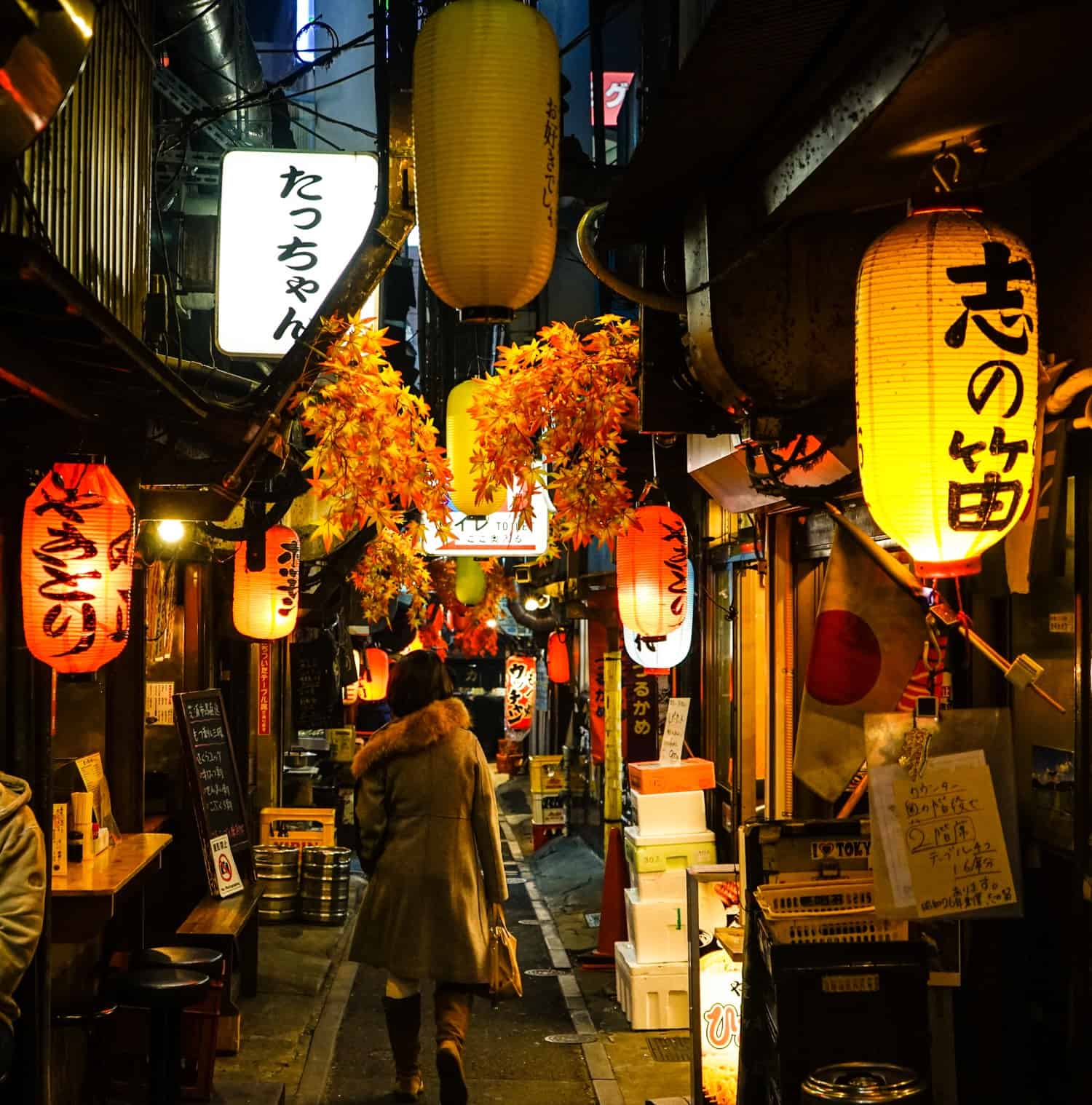
Miscellaneous Expenses in Japan
A local SIM card: $14
I mentioned above that I was able to buy a local SIM card when I purchased my rail pass. If you aren’t going to be using a rail pass in Japan, I recommend taking a look at Airalo instead. Airalo is a company that sells local e-SIM cards for travellers. What that means is that you can buy a virtual SIM card online before you arrive in Japan, and then as soon as you land in the country, can switch on your data and start using it.
It’s worked flawlessly for me and I’ll never go back to physical SIM cards. It’s just so easy! You’ll pay $6 for 1 GB of data or $14 for 3 GB for Japan and can also top-up through the Airalo app.
If you’re going down the Airalo route, just make sure your phone is e-SIM compatible first (all recent iPhones and many Androids are).
Insight Guides guidebook to Japan: $10
My sister bought me this guidebook as a gift before I left for Japan and at first I was like, Insight Guides? Meh. I wish she’d got me the Lonely Planet instead. Then when I opened it up and started reading, I swiftly discovered that Insight Guides are my new favourite guidebook company. It was so, so useful!
What I love about Insight is that their books focus heavily on the history and culture of Japan, with big, beautiful pictures, tons of information about local customs, food, and how to travel responsibly and respectfully. I recommend picking up a copy before your trip to Japan, but not taking it to the country with you — they’re big and heavy, so this is one for inspiration, planning, and education.
Luggage storage at Snow Monkey Park near Yudanaka: ¥500 ($4.50)
We had our backpacks with us when we visited the snow monkeys, so utilised the on-site storage facility while we hiked up the mountain in the snow. You can also hire snow shoes and winter gear if you’re unprepared for the climb, but I was fine in my totally impractical sneakers.
Travel insurance for 16 days in Japan: $60
If you’ve read any other posts on Never Ending Footsteps, you’ll know that I’m a great believer in travelling with travel insurance. I’ve seen far too many Go Fund Me campaigns from destitute backpackers that are unexpectedly stranded in a foreign country after a scooter accident/being attacked/breaking a leg with no way of getting home or paying for their healthcare. These costs can quickly land you with a six-figure bill to pay at the end of it.
In short, if you can’t afford travel insurance, you can’t afford to travel.
Travel insurance will cover you if your flight is cancelled and you need to book a new one, if your luggage gets lost and you need to replace your belongings, if you suddenly get struck down by appendicitis and have to be hospitalised, or discover a family member has died and you need to get home immediately. If you fall seriously ill, your insurance will cover the costs to fly you home to receive medical treatment.
I use SafetyWing as my travel insurance provider, and recommend them for trips to the Japan. Firstly, they’re one of the few companies out there who will actually cover you if you contract COVID-19. On top of that, they provide worldwide coverage, don’t require you to have a return ticket, and even allow you to buy coverage after you’ve left home. If you’re on a long-term trip, you can pay monthly instead of up-front, and can cancel at any time. Finally, they’re more affordable than the competition, and have a clear, easy-to-understand pricing structure, which is always appreciated.
With SafetyWing, you’ll pay $1.50 a day for travel insurance.
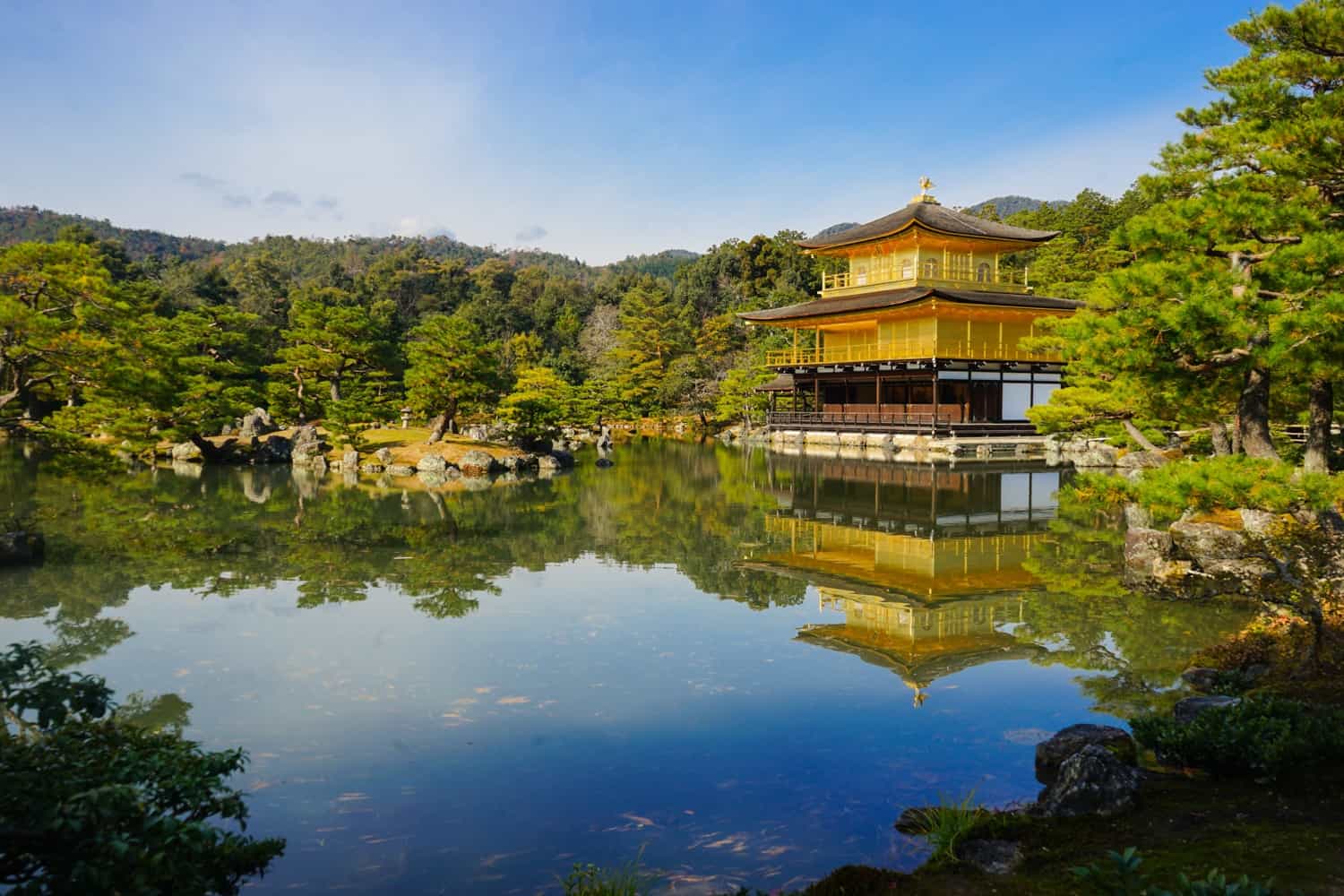
How I Track My Expenses While I Travel
Every time I share my expenses, you guys always want to know how on earth I manage to keep track of so many details from my travels!
Because Never Ending Footsteps is my company, the vast majority of my travel expenses are business expenses. I therefore studiously record everything I spend everywhere I go. I take photos of every receipt I receive and use Xero accounting software to record these expenses. In cases where I can’t get a receipt, I’ll take a photo of the price list and my ticket or food, or something as evidence.
Once a week, I then sit down and spend an hour or so uploading my receipts to Xero and making note of every penny I spent in each country I visit. It makes writing these posts super easy!
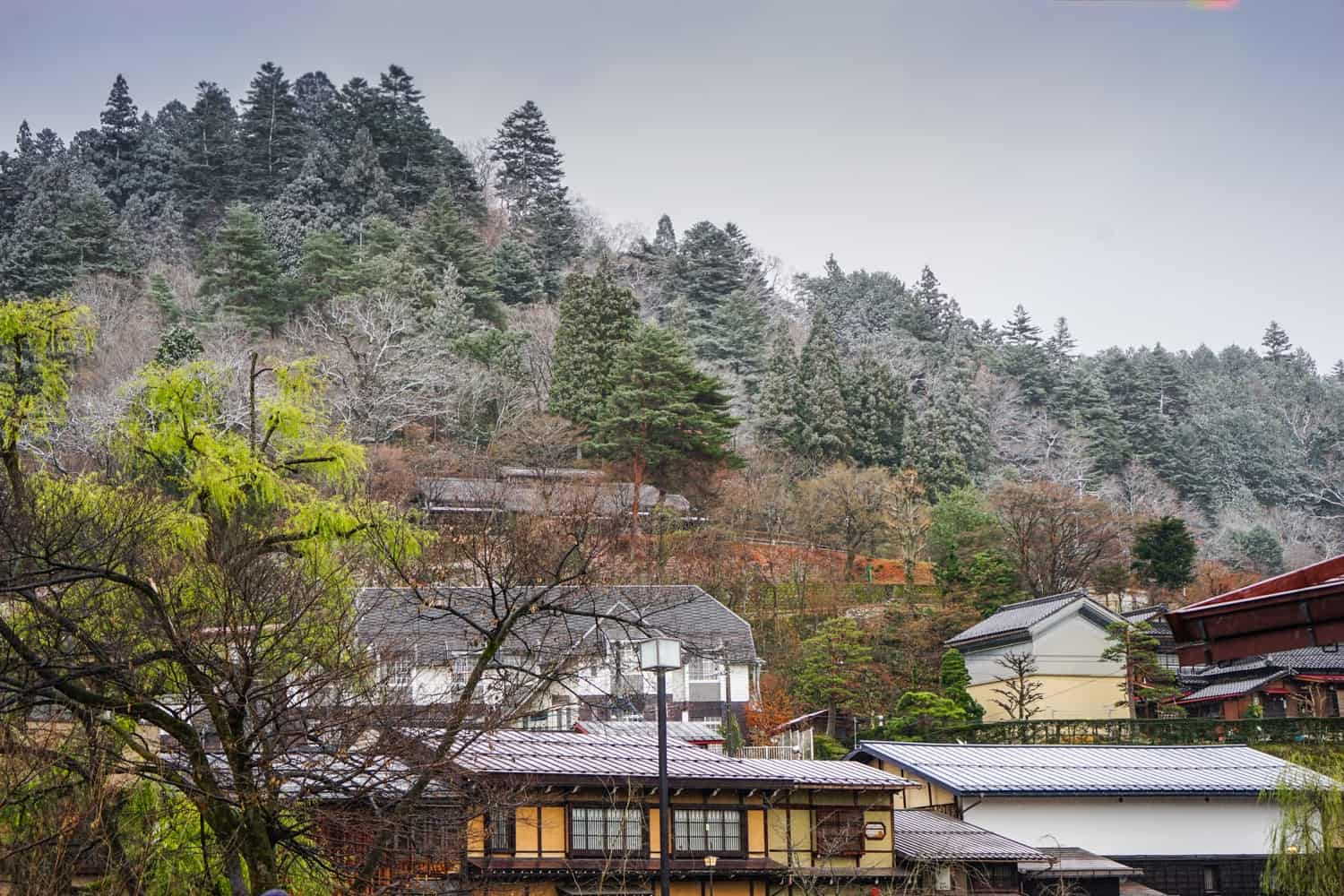
How Much Does it Cost to Travel in Japan?
It’s time to tally up all of my expenses to see my total travel costs!
Accommodation: $97 per day Transportation: $27 per day Food: $23 per day Activities/Entrance Fees: $2 per day Miscellaneous: $2 per day
Average amount spent in Japan: $151 a day!
I don’t know about you, but given Japan’s pricey reputation, I’m fairly impressed with the amount I spent in the country, especially as I included quite a few splurges in there.
How about you? How expensive were you expecting a trip to Japan to be?
Related Articles on Japan 🇯🇵 What’s it Like to Travel in Japan? 🏯 How to Spend Two Weeks in Japan: An Itinerary for First-Time Visitors 🍣 15 Weird and Wonderful Things to Eat in Japan 🎌 23 Incredible Things to Do in Osaka, Japan 🗼 21 Spectacular Things to Do in Tokyo, Japan 😎 Hipster Harajuku: The Coolest Neighbourhood in Tokyo 🦔 Should You Go to a Hedgehog Cafe? My Experience in Japan 🐒 Why Seeing the Snow Monkeys in Japan Sucked
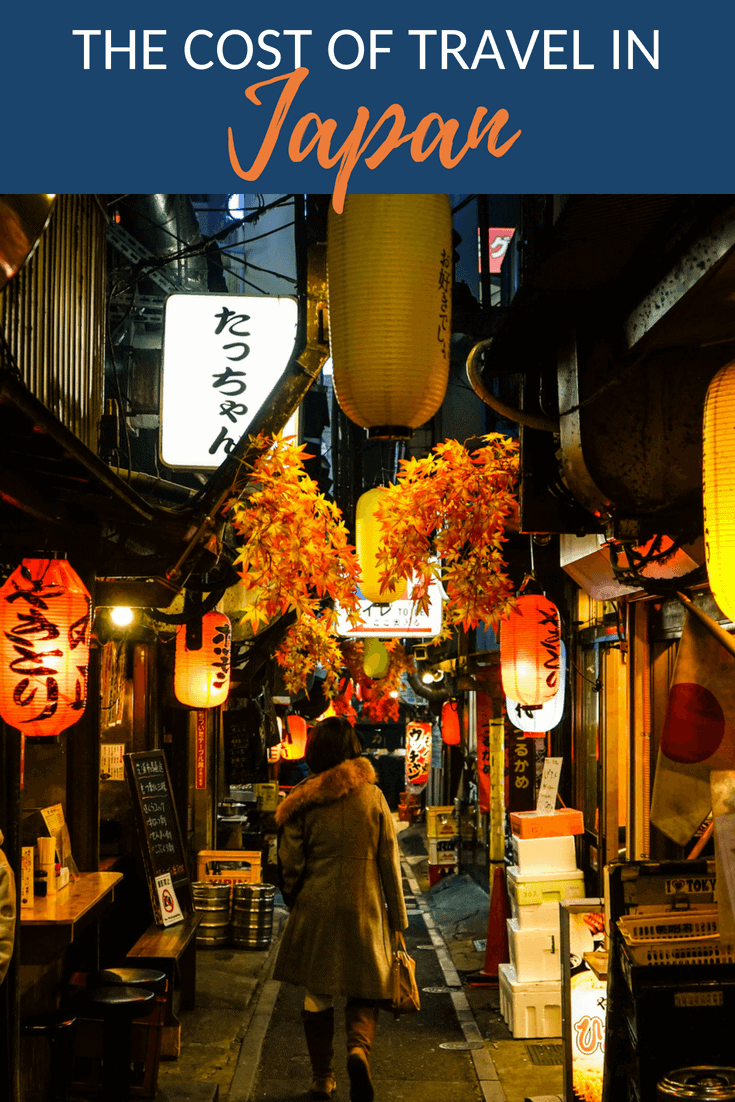
Lauren Juliff
Lauren Juliff is a published author and travel expert who founded Never Ending Footsteps in 2011. She has spent over 12 years travelling the world, sharing in-depth advice from more than 100 countries across six continents. Lauren's travel advice has been featured in publications like the BBC, Wall Street Journal, USA Today, and Cosmopolitan, and her work is read by 200,000 readers each month. Her travel memoir can be found in bookstores across the planet.
Related Posts

The Cost of Travel in Mauritius: My Detailed Budget Breakdown

The Cost of Travel in Thailand: My Detailed Budget Breakdown

2023: My Travels in Review

The Cost of Travel in South Korea: My 2024 Budget Breakdown

How to Spend Three Perfect Days in Delhi: An In-Depth Itinerary

Pushkar Travel Guide: 11 Things to Do in Pushkar
106 comments.
Wow! that’s amazing. I especially got fascinated seeing the capsule hotel…must have been a unique experience.
It was surprisingly cosy! I would totally stay in one again.
Thank you so much for your information. We will go to Japan in October 2023 for 1 month. Have paid fully for 16 days. Using your guides to budget the remaining 2 weeks. Thanks again.
This is great! Do you think it would be much more expensive in summer or any of the peak holiday seasons? I’m going over July this year and wondering if the prices change much with the seasons.
Wow! That’s quite an eye-opener! I’ve wanted to visit Japan for years, and this has certainly nudged me a little closer, as I assumed it was expensive too. The costs seem much better than I found in Amsterdam this spring! (my boyfriend still gets a thousand-yard stare when I mention how much we paid for drinks in one bar.)
Yay! Yeah, it really did feel about the same price as Western Europe, if not cheaper. The transportation is more expensive, but the food was cheaper in Japan.
This is super awesome! I, too, was under the impression that Japan was a super expensive place to visit! Good to know that you can save so much on accommodation and activities! Are you going to be posting about food in Japan? My knowledge of what to eat there is very minimal…
Yes! I published a guide to my favourite things to eat in the country last week: https://www.neverendingfootsteps.com/best-food-japan/
Ditto for here in New Zealand Lauren. All said it would be expensive. But we house sat – rent-free – and saw that food and travel are on par or cheaper than New Jersey. We also saw that virtually all things are cheaper than folks said. Methinks many labeling Japan and NZ as expensive as can be are used to paying $1 for lunch in Chiang Mai LOL. Budget folks see all Western lands as expensive. Granted I am from NJ; living by NYC makes for a high cost of living. But not bad at all, living in these lands.
Yeah, definitely true. I know that when I wrote off Japan as being too expensive, it was in the early days of my travels, when I could only afford to live in Southeast Asia!
Loving the posts about Japan so far. Do you have many more articles planned? I’ve a trip booked in November and this has been the most useful of the blogs so far for help in planning – thank you. Although I’ve had to cut the hedgehog cafe off my plans after reading your article as I hadn’t quite considered the ethics enough!
Yes! So many. I’ll probably post another half a dozen or more over the next few weeks :-)
I always assumed Japan to be very expensive. Thanks to your blog I don’t anymore. Cheers!
This is all very useful info! I’m impressed with your budgeting skills. Awesome, Thanks for sharing this!
Ha! Thank you :-) It comes naturally (finally) after seven years of doing this.
Great article. I’m planning a visit for early 2025 to go with my grandson … was the budget breakdown for one person or a couple … because you mentioned going with your partner?
The accommodation prices are the total cost of the room (rather than just my share), while the transportation, food, and activities are all my share of the costs.
Fantastic article. Love your budget posts because you never leave anything out.
I try not to! Thanks so much :-)
Beautiful photos, Japan look amazing and thank you for sharing your budget tips as well. :)
No problem! :-)
Thank you so much for this! I’m going to Japan in September and I’ve been worrying about my budget. This has definitely put my mind at rest!
Yay! Happy to hear that :-)
I’m so happy that you have posted so much lately, you’re my favourite travel blog and I check this page a lot more often now that the pace of the posts has increased :)
Thank you! :-) I’m aiming to stick to a three-times-a-week posting schedule now that I have a base and more time to dedicate to writing.
This is so much cheaper than I expected. Do you have any idea about prices for solo travellers though? Would I have to pay for a double room most of the time (apart from dorm beds of course)?
No, lots of hotels and guesthouses have single rooms, so you wouldn’t need to pay out for two people very often, if at all.
Thanks, that’s good to know!
Very useful breakdown that would be very helpful for first-timers to Japan.
Just to share, one of my own major expenditure in JP is … vending machine contribution! I simply can’t resist them and can end up buying seven times a day. “P
Yes! I couldn’t believe how many vending machines there were in the country, as well as the variety of things you could buy from them.
Hello! This is a very timely article for me to read as I’m actually going to visit Japan for a week on September. I really love Japan’s culture and their people. There are a lot of places that I want to visit and a lot of things I want to do but I am on a strict budget. Hopefully, your article would be able to help me fix my budgeting for my trip to Japan.
I hope so! I really didn’t find it horrendously expensive, so I think you’ll be surprised by how much you can do there for free.
I love your budget posts because they give me such a good idea of how much I can expect to spend in places around the world. Are you thinking of doing them for everywhere you visit?
That’s my plan! I’m slowly working my way through my records and adding more and more to the site.
Hey, thanks so much! :-)
I’ve planed to visit Japan next year, Thank you for sharing your budget, I’ll try to not exceed 100$/day, following your information on this post.
Have a fantastic trip, Ingrid! :-)
Which month you visited Japan? I am thinking for Cherry blossom (April 2019) and everything is coming up too expensive. Are those above for cherry blossom season you visited?
Ah yeah, unfortunately, the cherry blossom season is the most expensive time of year to visit Japan. I was there in December, so prices will be higher than the ones mentioned in this post. I’ll add that detail to my post now!
I was under the impression that Japan was a super expensive place to visit! Good to know that you can save so much on accommodation and activities! This article includes all the places you can visit in Japan and their expenses. It is very educative and it can be improved by providing expenses in INR. Thank you for posting this useful information.
Thank you! I usually just price these articles in the local currency and USD, which is where the vast majority of my readers are located. If I started including currencies for everyone, the post would quickly get ridiculous :-)
Seems a dumb question, but I’m assuming all the values are in USD, is it correct?
Yep! I write at the start of the post: “The amounts in this guide are listed in Japanese Yen and U.S. dollars, simply because the vast majority of my readers are from the U.S.”
That is a very good breakdown cost analysis there. i am planning to go to japan as well with my wife. and planning to stay for 10 days only. 4 in tokyo 3 in kyoto and 3 in osaka. i like to idea of 100 aud / day it’s a good target to keep but i guess the expense on buying cloths and souvenir would be uncontrollable though i heard things in japanese is not that dear if you know where to shop and avoid tourist trap. i didn’t see you mention buying internet data in advance ? or i missed it somewhere. i guess the expense for a couple will be double up. but i guess 3000 aud for 2 people is unavoidable.
amazing detailed guide
You’re welcome!
I’m so glad I found your website! I love the detail and photos. I just booked a trip to Japan with my boyfriend for this upcoming October, and your site will be very helpful. Question: do most hostels and accommodations that you experienced have you sleeping solo? I’m wondering if I should expect to sleep in a separate area than my partner for most of the trip…
Hi Lauren, Thanks for such a detailed description of your time in Japan! I’m going to Japan October this year with my wife and my major concern is how you managed to book sleeping pods for you and your boyfriend as almost all accommodations are either “male only” or “female only” from the options I’ve seen so far. Did you have to get separate beds for those nights?
Yeah, the capsule hotel-style accommodation is all single beds. You can see in my photo in this post that there’s not much room for anybody else!
My wife and I are heading to Japan in mid May and I plan to use your itinerary.
Would it be possible for you to write something about the travel logistics if you can remember them – ie to get from Tokyo to Mt Fuji we booked the following train, leaving at…from the following platform which took X hours and arrived at Mt Fuji at. We then bought our day pass from….and ……..
This would be really helpful to me and other independent travellers – from where did you buy your JR pass and how did you book your individual train rides?
Cheers Paul
Oh, man. That would take me hours and hours to put together and I’m sure times and platforms change so it would be impossible for me to keep the information up-to-date and accurate.
I recommend downloading the mobile app Hyperdia — you can plan your train travel out using that. Just enter in your destinations and it will tell you which train to take and from which platform. Super easy to use! :-)
The site I used to buy the JR Pass is this one . I booked the other train tickets in person at the stations when I arrived — there weren’t many that weren’t covered by the rail pass. Just the small regional ones to get to and from Yudanaka, I think.
Hello Lauren, I love the details in your blog. Your expenses were for 1 or 2 people?
I cover that at the start of the blog post: “And finally, these are the expenses I paid while travelling with my boyfriend. That means that accommodation prices (with the exception of the dorm bed in Hiroshima) have been halved to indicate my share.”
Great super helpful article. THANK YOU!
Hi Lauren, Thanks so much for this article, it is so helpful!!! on which dates did you fly to japan? what dates are you recommending on?
I spent the first two weeks of December in Japan. I’d recommend looking at May or September as the best months to travel there.
Hi Lauren I’d love your advice. I’m traveling with my 22yr old daughter to celebrate her graduation and my birthday. I booked the first two nights a hotel in Tokyo and then figured we would VRBO or Airbnb but after reading your post it looks like things have changed. I love the idea of the capsule hotels and the standard tatami mat rooms look enchanting. So how do I search for either? We’d like to experience both for the trip. oh by the way, I’m a traveler too, let me know where in the world are you now. Perhaps we can meet up and collaborate, I do video production, just got back from Colorado and am going to Cancun in June.looking forward to hearing back from you, Peace and Love always, “L” oh let’s connect on IG
Just book them through Booking.com — no need to go to any specific site. I’m in Bristol, in the UK. I actually don’t have an Instagram account — it wasn’t doing good things for my mental health, so I deleted it :-)
G’day Lauren,
Loved your detailed description of your travels through Japan. However; I’m not so brave as you travelling around on my own, especially with the language problem. I am a single traveler from Bangalore, India and would love to spend 7-8 days in Japan, with my journey starting and ending in Tokyo, reasonably priced hotels or local hostels, but preferably single accommodation, if possible. (willing to pay extra).
I love train travel and Japan is one of the best places to do that..your take on that would be appreciated. If you feel, I meet your requirements, would love to get an itinerary and costing for my 7-8 day stay in Japan.
Hello! I am really curious on how you got a 14 days pass JR for only 420$, from where I am from (Canada) it is 567!
If you click the link in the post, you can buy it through there. It’s currently listed for 414 USD.
$95/day seems cheaper than what I had expected – is that a tight budget? What can you do more with $150/day? I’d prefer to spend that extra on living in nice hotels + do more activities. Does that seem possible with $150/day?
No, not really. It was a mid-range budget and all of the hotels we stayed in were nice — I made zero effort to stick to a tight budget.
Hope you’re well. I’m wondering if you still advise from not booking Airbnb for Tokyo? Thanks.
Until moments ago, I had always assumed Japan to be too expensive to even consider. Never thought the cost of activities and entrance fees would be so cheap. This is an encouraging article, thanks, Lauren!
Really remarkable post, Lauren. Extremely thorough and helpful. I’m looking to plan a trip to Japan soon and stumbled across your blog. As you clearly hoped from city-to-city, (this may be a silly question) what did you do with your luggage on a day-to-day basis?
Thanks for any insight.
Oh, just left it in my hotels. If I spent less than a full day somewhere, it was visited as a day trip, so I didn’t take my luggage with me. And then whenever I arrived somewhere, I’d time my arrival with the check-in time of the hotel, drop my bags first, then head out exploring.
great article! As I have said in the past you always put out great stuff that’s very valuable information.
I just came across your website when searching for trips for Japan for my son. I have to say I am really so happy and want to thank you so much for the information. My eldest son has been taking Japan as a language course for the last 3 years and was looking forward to trying to get into the high school Japan trip in end of july beginning of August 2020. He also wanted to go to TUJ(Temple University Japan).
However, because of the olympics the high school Japan trip has been canceled for 2020. Unfortunately, he will be a senior next year so the 2021 high school program will not be available for him. Plus going to olympics are so expensive. If you can give me any advice, I would greatly appreciate. Thank you so much in advance for your time!!!
What advice do you need? About what?
Hi Lauren, I really liked you post and I think is really helpful. When exactly did you go in Japan? We have to change our plans for next February (previous planned for Philippines but to risky for my wife pregnancy) and we consider to go in Japan instead. So, do you think it is good idea travelling in Japan in February? Thank you and advance.
I went during the first half of December. As long as you keep in mind that it’ll be pretty cold (5-10 celsius), I think it’s a great time of year, as it won’t be as crowded as peak season.
is it favorable to use credit card or cash is much preferred? thanks
Hi. Thank you for the information! I am so inspired to go to Japan now. My mom who was from Japan, always told me it’s too expensive to go back and visit. I am now 56 and it has been my lifelong dream to go. My husband and I will go with backpacks like we did when we were younger and before having kids. Is October a good time to go? I read September can be humid. I want to follow your itinerary for the most part. My mom lived in Kanazawa. My heart is full right now and my eyes are misty. Thank you for making my dream a little bit closer.
Hey Lauren!
Thank you so much for the information. I actually got invited on a delegation to go to Japan this evening and am trying to get the average cost to travel in the country. Obviously, your trip was on a very impressive budget. I have two questions, 1. Based on the $95/day over the course of your 16-day trip, would it be right to say that (flight included) you only paid ~$1,600 for your entire trip? 2. Would you say for a trip including cultural experiences, transportation and stays in nice hotels for a week, a grand total of $3,700 is reasonable?
In advance, I appreciate your advice on this!
Hi Lauren, Are you able to name all the accomodations you stayed with? I would like to visit Japan next year on a very tight budget. Thanks.
Yes, they’re already linked in the post along with the reviews of them under the accommodation section.
Hi Lauren. I’m debating spending 5 nights in Osaka and doing day trips to kyoto, nara and himeji castle. (I have hotel points where i can stay at osaka). Based on your experience – is that ok? or is better to stay 2 nights in Osaka and 3 nights in kyoto. There is a lot of different opinions online, thought id ask you if you think i’d be missing out on anything if staying in osaka. The one plus is i can save some money if using points and also staying in 1 location for 5 nights vs packing and moving to another location. Thanks so much for your posts!
Hey i found this really helpful but I’ve been planning to visit japan for a while and have hopes of going after i graduate high school. With some research i found that the JR pass isn’t needed if you’re just staying in one city. How much do you think i would spend on transportation for 2 weeks in Tokyo? Will it come out to more than what you spent or less?
Definitely less! You can walk to a lot of places, but otherwise the metro won’t cost much at all — a dollar or two per trip.
Would you be able to give recommendations for food places in Kyoto that are affordable.
Hi Lauren. Came across your site on a Google search for budget travel. It convinced e that a trip to Japan is affordable. Never have done international travel and would like your advice on a couple of things. 1. What is the best way to pack? Do I have to just use a back pack? 2. Can I use a credit card or should cash be used? 3. Can I get cell phone coverage in Japan.
Thanks, you site is great!
1) I prefer to travel with a backpack, but you’ll do okay with a suitcase, too. I personally find backpacks easier for navigating train stations, as you don’t have to drag it up and down stairs, etc. It doesn’t really matter either way, though. Depending on how long you’ll be staying there, I usually pack for a week no matter how long my trip is, then do laundry once a week.
2) Japan is mostly cash-based, so plan for lots of trips to the ATM. I didn’t find many places that accepted cards, although I also wasn’t looking very hard either.
3) Yep, you can pick up a local SIM card at the airport when you arrive. I bought mine through the rail pass company I link to in this blog post, but you can also just buy one when you arrive. Super easy to do and they’ll get it set up for you in the shop, too.
Love your posts! have been browsing but when I stumbled upon your page found it really helpful! Planning for Japan and Singapore so finding both blogs is perfect timing :) We are still not sure if the JRpass will help us- when we did calculation for the main routes we are going it resulted not worth it, however then not sure if we will require any additional rails/trains in between these. Tokyo>Hakone>Kyoto> Osaka without returning back… your input will be appreciated :) P.S. Feel free to visit the island of Malta, my home country
Wooow !! This is amazing , My wife and I have been planning to visit japan and we always had a misconception that Japan is expensive to visit .. This is a great blog .. So the overall cost including your flight tickets and local travel in japan would cost around 2500 $ per person ?
This was so incredibly helpful! Normally I don’t find myself reading entire articles but yours was so informational and in depth. Thank you so much for helping me get an idea of how much I would roughly spend!
Ah, no problem! Thanks for reading, and I’m glad you found it useful :-)
I super love this article Lauren! I thoroughly enjoyed it. When all is well and my country allows us to travel again, this is going to be on my top 3 places to visit (the 1st 2 will be diving spots as I’m a freediver). I made sure to bookmark this page for reference. Again, thank you for writing this. One question though, when you say $ do you mean USD?
Yep, USD! “The amounts in this guide are listed in Japanese Yen and U.S. dollars, simply because the vast majority of my readers are from the U.S.”
How much did you spend on transportation in Tokyo? I mean if you hadn’t had the JR Pass? How much did you save in Tokyo by having the pass?
Oh, I didn’t activate the pass when I was in Tokyo — I activated it on the day I left — so that was my total expenses without using it.
Hi Lauren! I just read your post. My boyfriend and I are backpackers and we are planning our next trip to Japan. I wanted to ask you when did you go there? (what time of the year). Because we can only take time off during winter time (dec-jan) and I don’t know if that’s a good time of year to go. We are from Denver and snow doesn’t bother us but we also want to enjoy it.
Thanks in advance! Love your blog
I was there in December! There’s fewer crowds then, which makes it a great time to go! As an added bonus you get to enjoy all of the cosy onsens in the snow :-)
Even in these unprecedented times, I feel as if I have already traveled to Japan! I loved every minute of the information you gave me. This place is definitely next on my list, of course! It can be months or a year from now.
It appears you’re still getting traffic in the comments here (excellent) so I thought I would ask a broad question. Wife and I are thinking to take our 6 and 9 year old to Japan for about 11 days. Any destinations you might leave off your itinerary given a bit less time and traveling with kids?
Fantastic! I’ve never seen any article about travelling to japan so specific and detailed before!! It sure will help me prepare for my own first&solo trip! thank you so much
Great post, but the prices are wildly outdated now. Your $30/night hotels in 2018 are going for around $220/night in 2023. Insane!
Hi CS, what time of year are you looking to visit? I’ve had a quick check and every hotel I link to still displays roughly the correct prices (a couple were out by about $10-20 a night, but nothing like $190!). If you’re looking at going in May, for example, Hakone Tent prices their rooms at $176 a night, but then offers rooms at a price of $73 a night a month later in June, so the time of year can affect the pricing. I’ll make a note to mention this in a future update to the post.
I visited in the low season, in December, so the prices I paid were lower than they might be at a more popular time of year.
This is amazing on every level. Thank you! only issue is prices for accomodations double during sakura season so what can I do
Thank you Lauren, for this insightful and complete post.
Out of curiosity, do you know what was the average USD/YEN exchange rate when this trip took place?
Kind Regards,
I update the prices in this article every two months so the exchange rate used in the post is recent
How recent was your travel to Japan and what exact dates were you there? I’m planning to take my family of 4 there in 2025 and would like to schedule it during cherry blossom season. I heard prices usually go up during this time so I was wondering if your trip happened during peak or off-peak season.
I was there in December. Prices do increase a lot during cherry blossom season, unfortunately — that’s the most expensive time to visit.
very good post for budget travellers. thanks for sharing.
Leave a reply Cancel reply
Your email address will not be published. Required fields are marked *
Meet Lauren Juliff

Budget Travel in Japan – Ultimate Backpacking Guide [2024]
- Last Updated: February 5, 2024
From seeing up close the famous Mt Fuji, exploring the architecture of Japanese castles to slurping down the best bowl of ramen you ever had, all these epic memories to-be-made are possible even with our guide to budget travel in Japan .
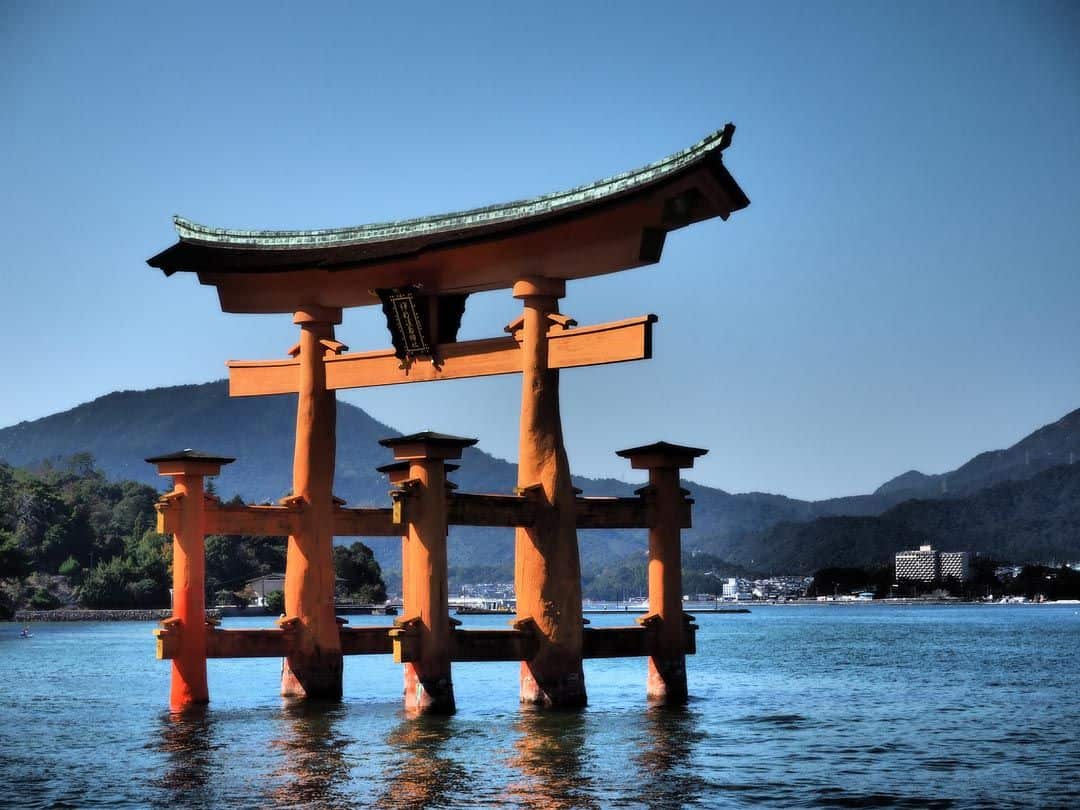
Today’s Japan is a fascinating example of blending the ancient traditions and modern day culture.
Throughout the country you’ll witness dynamic mountainscapes in stark contrast to futuristic cities that are inspiring new trends in architecture worldwide.
It’s also thought of to be notoriously expensive but we managed to travel to Japan on a budget, and so can you.
Table of Contents
Get A JR Rail Pass
Take some flights, deals in hiroshima, deals in osaka, deals in kyoto, deals in tokyo, cheap eating and drinking in japan, save this pin for later, budget travel in japan.
Japan has had a reputation as being expensive for a very long time, people paying hundreds of dollars for a piece of Kobe beef or a sliver of the finest blue fin tuna.
Prices of hotels can be among some of the most expensive in the world. Public travel, whilst incredibly reliable, can sometimes be quite expensive.
Well, some of this is true and some of it is a little more than a rumour that we have all perpetuated. Many people are put off traveling around for a long period of time because of the belief that the costs will be astronomical.
This isn’t always the case.
We have just finished 1 month of travel in Japan and it is comfortably cheaper than Australia, New Zealand, Western Europe and in some cases is even cheaper than China!
It sounds crazy, but here are a few really simple tips for budget travel in Japan that will save you some dollars on your next trip.
Note – At time of travel $1 USD was equal to about 110 Japanese Yen.
READ MORE: Don’t miss our brand new complete guide to help you travel to Japan!
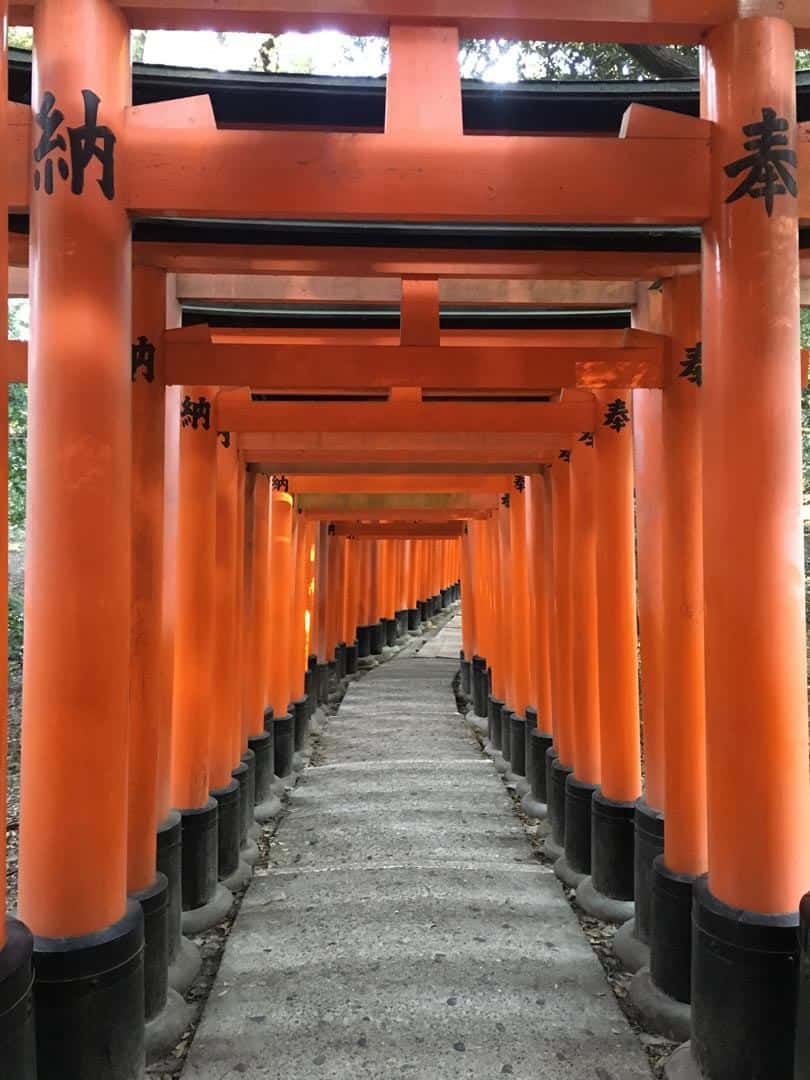
This is a no-brainer. Anyone travelling between cities in Japan should consider investing in one of these.
However be very careful about which JR pass you choose as you could end up spending more than you need to.
I’ll use our situation as an example.
We spent our first 12 days figuring out an excellent Hokkaido itinerary , which is absolutely incredible and definitely our favourite part of Japan. From Sapporo we flew down to Hiroshima .
From here we planned to go on to Miyajima, Osaka, Himeji, Nara, Kyoto and Tokyo.
A few of these were day trips and a few were for a bit longer, but as you can see we had a lot of travel ahead of us.
A regular JR pass that allows travel across the whole country costs 29,100 yen. This is incredibly reasonable. If you take a train from Tokyo to Kyoto, throw in a day trip to Nara and you’ve started saving money.
Our plan was as follows:
- 3 days – Hiroshima and Miyajima
- 2 days – Osaka
- 1 day – Himeji
- 1 day – Nara
- 4 days – Kyoto
- 5 days – Tokyo
We decided to purchase a Kansai-Hiroshima pass through JR West for 13,500 yen per person.
We activated this when we travelled from Hiroshima to Osaka. We used it for our day trips to Himeji, Nara and our trip to Kyoto. We then travelled from Kyoto to Tokyo by night bus for 6500 yen per person.
A total of 20,000 yen, 9000 yen less than a 7 day rail pass.
We would not have had time to do everything we wanted to do around Kansai and get to Tokyo in 7 days. Hence why we elected to go this route.
The JR pass website states that a JR pass cannot be used on the Nozomi or Mizuho trains. However if you purchase ANY JR west railway pass, which ours was, you can use these trains. This is great for longer routes, notably Hiroshima to Osaka/Kyoto.
Plan where you want to go and what you want to see and then search on the Klook website to find the pass that best fits your plan.
You could end up saving yourself a lot of money.
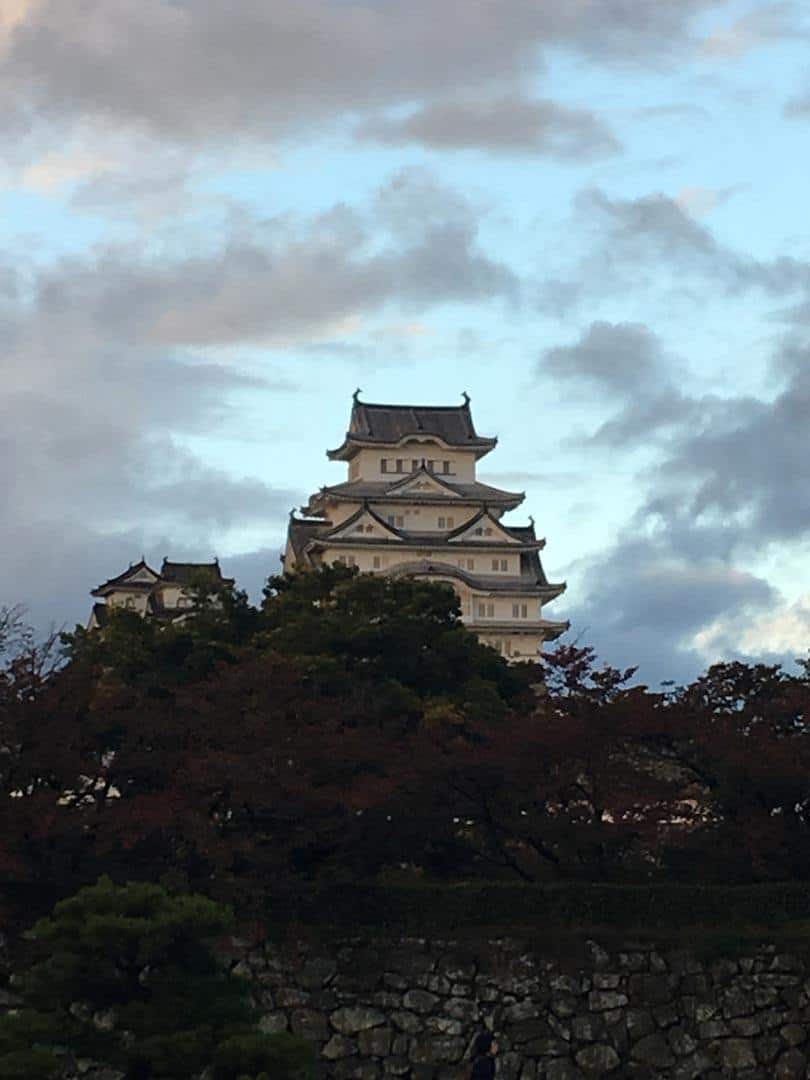
I read about this little deal on the amazing website Japanguide , a must for anyone planning a trip to the land of the rising sun.
In essence, this deal covers cheap flights all over Japan for any visitors to the country. It’s advertised as a 10,000 yen deal however there are some flights that are cheaper and some that are slightly more expensive.
We paid 10,000 yen each to fly from Sapporo to Hiroshima. If we were to booked these flights without this deal it would cost us closer to 50,000 yen per ticket.
There are two airlines that participate in this amazing deal: JAL and ANA. We ended up flying with ANA and it was great.
One thing to remember is that for this to work you usually have to book from outside Japan. As always in Japan there are a variety of deals.
The deals that we researched are linked below, but the link above has information on all of the deals available.
- JAL – Japan Explorer Pass
- ANA – Experience Japan
Both of these links take you straight to the booking page where you can research and compare prices. This deal is a must for anyone looking to get away from the Tokyo-Kyoto-Osaka route. This saved us a huge amount of money.
Day Passes for Attractions
Many of Japan’s cities have a variety of day passes allowing giving unlimited rides and even discounts to various attractions. This is a lifesaver for budget travel in Japan.
In Hiroshima you can purchase a 1 day street car and ferry pass for 840 yen. This is a great option if you are doing Miyajima as a day trip.
- Street Car to Miyajimaguch i = 280 1 way – total of 560
- Ferry to Miyajima = 180 yen 1 way – total of 360
- 560+360 = 920
This also means that you can use the streetcars to get around in the evening as your legs will be knackered after a day in Miyajima.

In Osaka you can pick up the “Osaka Amazing Pass” that covers subway and entry in a huge number of attractions for one day.
When we used it we headed to Osaka Castle, did the HEP5 ferris wheel, went to the top of the Umeda tower and took in an evening cruise (which was not that great to be honest).
It costs 2500 and it ended up saving us 2500 yen in transport and entrance fee’s definitely worth it.
Possibly the most popular tourist destination in Japan (it certainly felt that way when we were there).
Kyoto’s subway system is quite useful for accessing Northern Higashiyama and the city centre, but other than that it’s the bus and JR that are king.
However the JR routes to Arashiyama and Inari are very cheap so it’s not worth activating a rail pass just for this. Save it for intercity travel.
Kyoto’s bus network is both extensive and convenient. For 500 yen you can pick up an all day bus. You end up saving money if you take 3 or more buses. With Kyoto’s sites spread all over the city, this will not be a problem.
Here’s our list of the best things to do in Kyoto .
Japans greatest urban metropolis has one of the most impressive and confusing transportations systems on planet earth. The truth is there are huge number of tickets. Outlines of all of them are listed here .
Suica: This is just a simple subway card, like the oyster card in London or the octopus card in Hong Kong. You need to pay a 500 yen deposit for the card, but this is returned to you when you return the card at the end of your trip. Also the fares a few yen cheaper than if you buy tickets at the machine. They can be used on every line in Tokyo.
All Day Pass: There are 2 all-day pass options. The all-day metro card for 600yen which can only be used on the Tokyo metro, or you can include the Toei lines for 1500yen.
We found the all-day metro card fantastic value. If you take 4 trips you will be saving money. Just remember, neither of these passes include the JR lines, so sometimes the journeys are a little longer.
While you’re at it, check out these great things to do in Tokyo.
Eating out in Japan can be extremely cheap, in some case it was far cheaper than eating similar food in Beijing. Obviously eating out can be as cheap or as expensive as you wish, but here is a very rough price guide based on 2 people eating.
- 500-1000 Yen – Bento boxes – can be brought from any convenience store
- 1000-1500 Yen – Ramen and Udon
- 1500-2000 Yen – Katsu Curry
- 2000-3000 Yen – Tempura Sets
- 3000-5000 Yen – Yakiniku (Japanese BBQ), Izakaya/Yakitori (Japanese style pub serving sticks of meat, sashimi and other wonderful delights), Sushi and Sukiyaki (type of Japanese hot pot)
This is not a definitive list, but it’s generally a good guide as to what type of food is generally cheaper or more expensive.
The big thing that raises the cost of meal is alcohol. A couple of draft beers would generally add at least 1000 yen to the bill. So an easy way to save is to limit your alcohol intake.
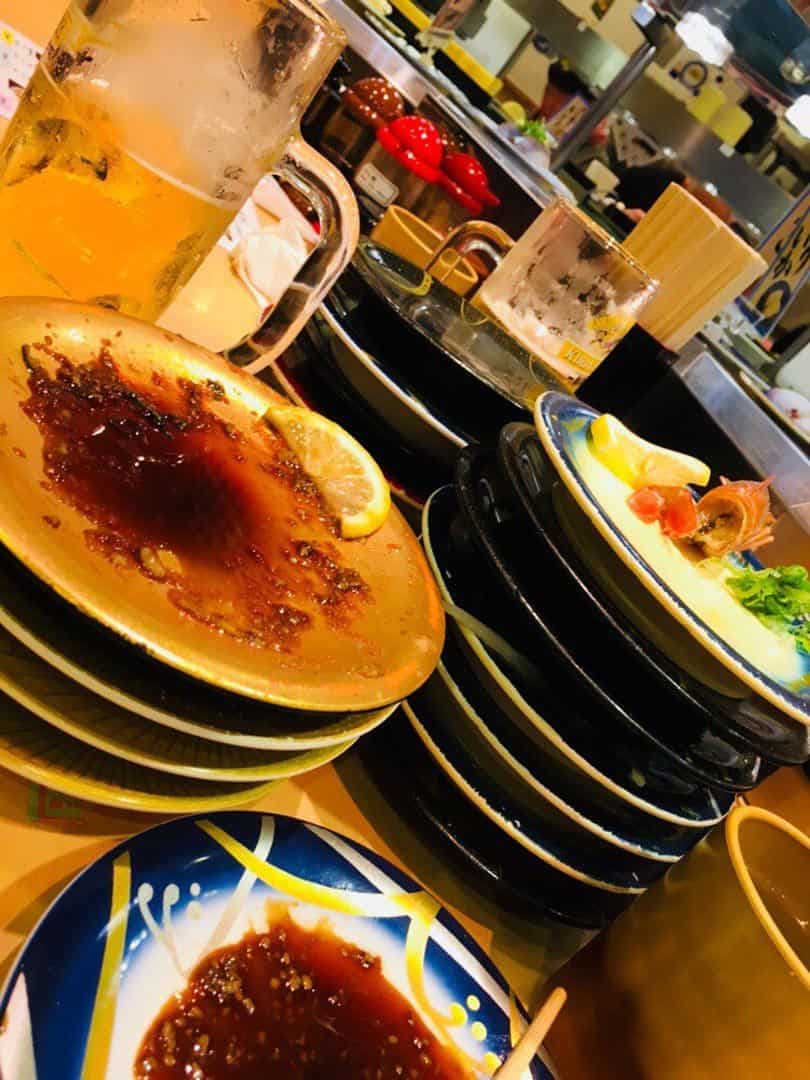
Budget Accommodation in Japan
Accommodation is usually the most expensive part of any trip.
Hokkaido – Booking.com and agoda.com offered us the best rates for anything outside Sapporo. In this region of Japan AirBnB is can be pretty pricey. In the national parks it can be around 9000yen per night, with breakfast included. However this is offset by the cost of food being much cheaper than other parts of Japan.
Hiroshima to Tokyo – Here AirBnB was generally cheaper and that was what we used the majority of the time. We managed to rent entire apartments for half the price of a hotel room in Hokkaido.
Another thing to be aware of is that paying for 2 beds in a dorm is usually more expensive that getting a room in a hotel or guesthouse, so plan accordingly.
Sign up using our AirBnB link to get $50 credit to go towards your first booking and make help make your trip even cheaper.
In truth Japan is much more affordable than people would believe. Hope you found this useful. Head over to www.abearandapig.com to see more of what we do.
That’s it for our guide to budget travel in Japan. Please leave a comment below if you found this article useful, or if you have anything else to add.
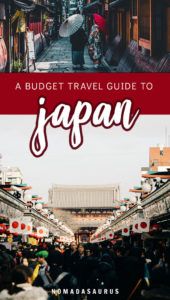
Richard Barnes
Hi, We’re Alesha and Jarryd!

We’ve been traveling the world together since 2008, searching for the planet’s best destinations and adventures.
Love Travel?
Sign up for our free weekly newsletter for the best travel tips, ideas and deals!
We respect your privacy. Unsubscribe at any time.
READ MORE...
The Perfect 3 Days in Tokyo Itinerary
The Best Day Trips from Every City in Japan [2024]
18 Amazing Things to Do in Kyoto at Night (2024 Guide)
Related Posts
17 awesome things to do in hiroshima, japan, how to plan your perfect hokkaido itinerary in 2024, the perfect yokohama itinerary for 1, 2 or 3 days (2024), ryokan ochiairo review – is this japan’s best ryokan, 6 thoughts on “budget travel in japan – ultimate backpacking guide [2024]”.
People may think that Japan is very expensive, but there are many ways to travel in there very cheaply if you know some “secrets” like right organizations where you can get some very unbelievable travel deals 😉
What kind of organizations would those be?
Thanks for sharing this kind of information Thanks for the tips I’ve always enjoyed traveling, the idea of seeing the world fascinated me, but I was never able to take a very long trip
Thank you for your comment Luana. Travelling is definitely amazing in so many ways. Hope you can travel where you want to soon and stay for a long trip and immerse yourself in the country and the people. Happy travel planning 🙂
I love to visit this places in japan this year..Thanks for sharing such kind of information..I think Travelling is the most important way to enjoy life and know something different from your routines..
We agree. Travel is amazing. Have a great trip.
Leave a comment Cancel reply
Save my name, email, and website in this browser for the next time I comment.

7 Tips to Travel Japan on the Cheap
O utside the usual travel cost-cutters such as taking transit over taxis and hostels over hotels, there several simple ways to see Japan affordably. If you think exploring this intriguing place means bleeding your budget, think again. Here's 6 easy tips to travel Japan on the cheap!
Psst, want to save more money on a visit here? Check our tips on eating cheap in Japan, plus Japan Rail pass tips .
1. Take buses over trains

As with Europe, rail passes have become a popular staple for travellers in Japan. While it can be cost-effective for short trips (check our cost-analysis guide ), there are much cheaper ways to get around.
Many bus companies exist in Japan, and almost all of them can be booked online at kosokubus.com . After payment, you'll get immediate confirmation and a confirmation e-mail. Simply show your confirmation e-mail on your mobile phone to the driver.
Another bus company, Willer Express , offers 3, 5, and 7-day bus passes priced from ¥10,000-¥15,000 ($94-$141 USD). Cheaper passes are available for use on Mondays-Thursdays only, while slightly pricier options exist for any day use. These travel trips (referred to as “days” on the site) can be used anytime, non-consecutively within a 2-month window.
There are many overnight bus routes, which saves on a night's accommodation. The buses are quiet, clean, and cozy, complete with reclining seats and a pull-over head blind to block out light (see below).
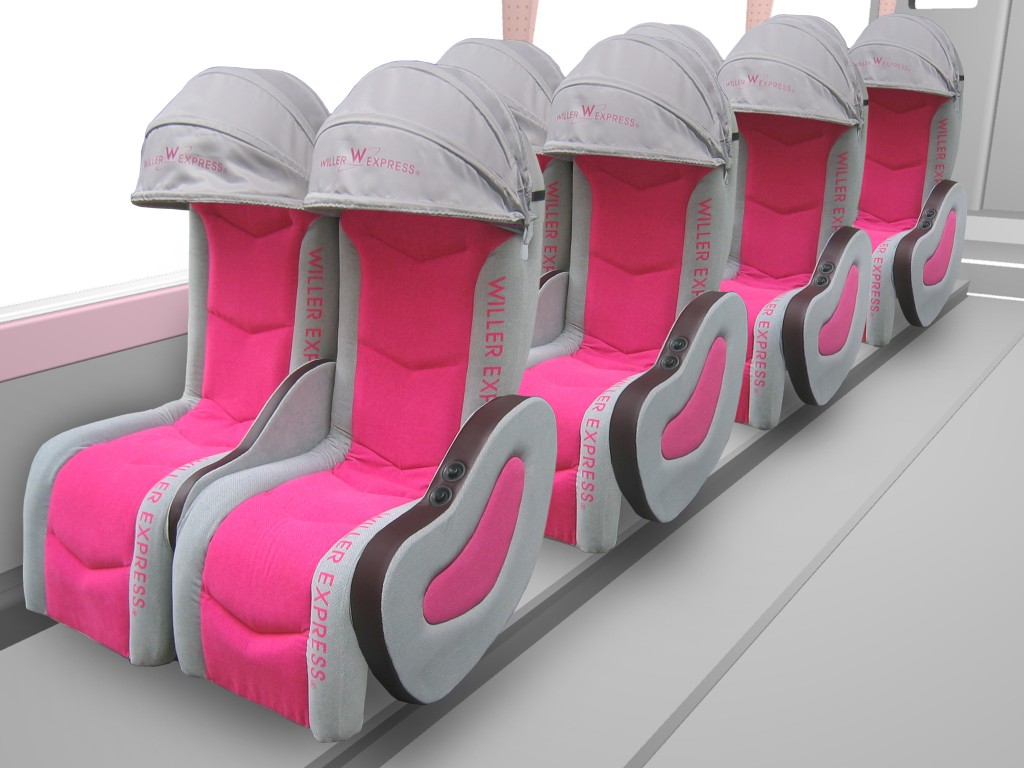
Popular bus destinations include Tokyo, Hiroshima, Kyoto, Osaka, and Nagoya. At a fraction of the ¥29,000+ ($273+ USD) price-tag of a 7-day rail pass (which must be used within the 7 days), you've got added flexibility for half the cost. If you don't purchase a bus pass , individual bus tickets are still typically cheaper than trains for long distances. Trains can often be crowded with commuters and may require several transfers, so a bus can often be a more convenient method of travel.
Where to buy : Individual bus tickets can be purchased online at kosokubus.com , while the Willer Express pass can be bought on their website and used at the respective terminals of your departure.
Note : for flying cheap around Japan, there are several discount air passes which are only available to tourists. Peach Air is Japan's budget airline, and with flights for as little as ~$40USD across the country, flying can be hugely cheaper than the rail pass. For more tips on flying cheap, check our flight-booking hacks .
2. Dine at Japanese fast food chains
Think all fast food is deep-fried, processed junk? Think again. In Japan, “fast food” means steaming bowls of rice, savoury meats, crispy dumplings, miso soup, with a side of green tea. Basic meals such as a rice bowl with green tea can be bought for as little as ¥130 (~$1.30 USD). More elaborate dishes (below) range from ¥300-¥600 , or ~$3-$6 USD. Check our thrifty dining tips for Japan here .

Cheap restaurant chains to find eats like these include:
- Matsuya (rice bowls, Japanese breakfast, Japanese curries)
- Sukiya (same as above)
- Yoshinoya (again more delish Japanese dishes, from curries to udon)
- Mister Donut (you must try the star-shaped donuts)
- MOS burger (Japanese-style burgers, many of which have rice as “buns”)
- CocoCurry House Ichibanya (curries)
“Button” style restaurants are often cheap (easily <¥500 or ~$5 USD). You simply select and pay for your meal based on the photos and prices listed on the machine (pictured below), bring the receipt to the cook, get your meal and enjoy!
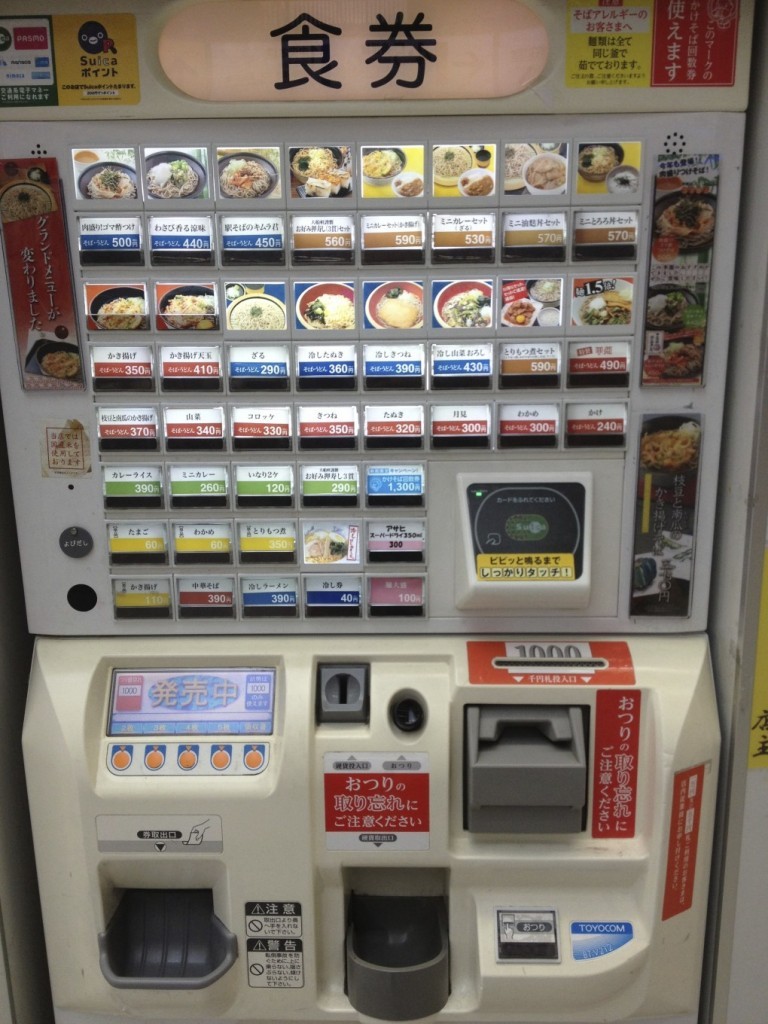
3. Get a metro pass
Taxis and Ubers are a senseless spend in any major city, and Tokyo is no such exception. A transit pass is a great investment, since once you've taken a certain number of transit trips it will pay itself off. Transit passes can be purchased online in advance (easier than navigating the non-English machines at the stations).
4. Get a Grutt pass for sightseeing
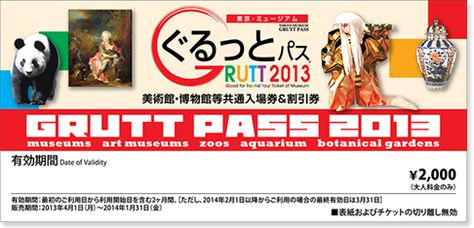
If you plan on seeing even a handful of museums and art galleries in the Tokyo region, the Grutt Pass is a well worthy purchase for savings. At ¥2,000 (~$20 USD), the pass pays for itself quickly, as it provides admission and discounts to 80 facilities . That includes museums, art galleries, and attractions across the Tokyo area.
On our first 6-week visit to Japan we made excellent use of our pass – the abundance and quality of attractions it covers is impressive. To see Japan's famous robots and other technologies to tickle the mind, check out the National Museum of Emerging Science and Innovation . For a colourful array of Japanese history, biology, and modern science, the National Museum of Nature and Science is a must-see. The MOMAT has contemporary art displays from retro to modern art in a variety of mediums. For a fascinating walk through the Japanese Edo period, be sure to check out the Edo-Tokyo Museum .
Where to buy : The pass can be purchased at select convenience stores or any of the following places:
- The Tokyo Tourist Information Centre (1st floor of the Tokyo Metropolitan Government Building)
- Asakusa Culture Tourist Information Center
- Tokyo Chuo City Tourist Information Center(KYOBASHI EDOGRAND)
- LIBRO (Ikebukuro, Kichijoji, Shiodome SIO-SITE, Chofu)
- PARCO Book Center in Shibuya
- Ueno Park Information, Asakusa Culture Tourist Information Center
- TIC TOKYO (Nihonbashi Exit of Tokyo Station)
5. Search broadly for accommodation
AirBNB and HotelsCombined consistently have the cheapest accommodation options in Japan in our experience. On our last visit, AirBNB provided a more local feeling experience and there are many affordable apartments right in downtown Tokyo for less than $80 USD/night (often much less!)
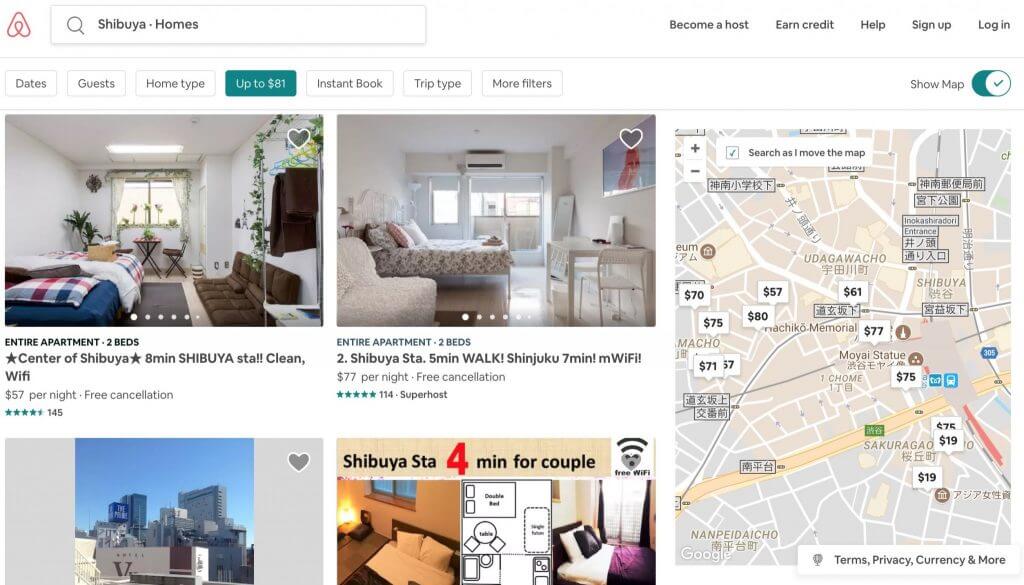
In Tokyo, we recommend staying in Shibuya or Shinjuku . We've stayed at both this Airbnb in Shibuya and the Shinjuku Granbell Hotel in Shinjuku (the buffet breakfast was tops!) Both neighbourhoods are right in the heart of shopping, restaurants, nightlife, and a short train ride from all major attractions.
When in less travelled areas, the Lonely Planet Japan guide was the best resource for hotels, hostels, and ryokan (Japanese-style guesthouses). Tourist Information Centres are also a reliable source of English-speaking assistance if in less-touristed areas.
6. Get take-away meals from grocery stores

Cheap and fresh bento, take-away sushi, noodles, and udon are just some of the grab-and-go options available at Japanese grocery stores. They're great for picnics, hikes, and people-watching in a city park. Prices range from ~¥130-¥300, though we regularly (and effortlessly) spent ~¥200 per box (~2 $USD) per bento in our 6 weeks there.
Thrifty hint : hit up grocery stores in the evenings when these boxes are further discounted – presto, tomorrow's cheap lunch!
7. Hit up $1/plate conveyor belt sushi

Sushi-go-round, conveyor belt sushi, or “sushi kaiten” is a great way to dine affordably in Japan. Plates are colour-coded by price, but ¥100 (~$1USD) per plate conveyor belt sushi can be found throughout the country. This is a great way to sample a variety of affordable sushi and linger with locals. Locations include:
- Nationwide: Sushi Ro
- Tokyo: Genki Sushi (Shibuya)
- Osaka: Isono Ryotaro (5 min walk from Namba Station)
More frugal advice : street food and markets are great opportunities for tasty, affordable eats (pictured below). Check our other thrifty food tips in our guide, how to be a frugal foodie in Japan .
And there you have it, 7 simple tips to make travelling Japan more affordable. What tips do you use to see Japan on the cheap?
- Philippines
- South Korea
- National Parks
- Travel Stories
- How Much Does It Actually Cost to Travel the World?
- What’s In My Backpack: The Ultimate Long-Term Travel Packing List
- My Favorite Non-Fiction Travel Books
- All Budget Travel Resources
- Writing Portfolio
15 Tips For Visiting Japan on A Budget (How to Travel Cheap in Japan!)
This post may contain affiliate links. This just means I may receive a small commission at no extra cost to you for helping them promote their product or service. I don’t endorse any services I don’t personally use or recommend.
Japan is widely known as the most expensive destination in Asia. I’m not going to contest that fact, but I am going to show you how to save LOTS of money on your next trip. Because Japan is one of those places that everyone wants to visit. A bucketlist destination if you will. While it wasn’t cheap, it was also not nearly as expensive as we had originally thought. And with these tips for visiting Japan on a budget, it can even be a rather affordable destination open to exploration by all kinds of travelers.
This list isn’t going to include any Workaway or long-term travel tips for those staying months in the country. Instead, it’s going to focus on actionable easy budget-saving tips that people on a short trip can use to save bigtime in Japan.
15 Tips For Visiting Japan On a Budget
Transportation is by far the most expensive cost for travelers in Japan. We’re gonna start with ways that you can save while hopping from destination to destination in the country.
1. The big question: Japan Rail Pass or no Japan Rail Pass?
I actually wrote an entire post detailing my decision NOT to buy the Japan Rail Pass for $370 per person. The low-down is that we saved about $100 each by purchasing bullet train tickets on our own. We didn’t have to do an immense amount of research either. We just turned up and bought tickets.

Check out my full post to see everywhere we went so you can compare your itinerary and make sure that buying the Japan Rail Pass isn’t right for you.
2. Get Unreserved Train Seats.
When you’re purchasing your Shinkansen (Bullet Train) tickets be sure to specify that you want unreserved seats. This means you’ll be sitting somewhere in cars 1-6 and left to choose your own spot. These are much cheaper. If you’re traveling as a duo you’ll most likely still be able to find seats next to one another.
3. Choose buses.
Buses are cheaper than trains & astronomically cheaper than bullet trains. If time isn’t a constraint for you (or if you can plan for these travel days) choose at least a few buses to save hundreds of dollars.
4. USE the Metro!
I probably don’t need to tell you that Japan has impressively clean, well-connected metro and train lines in each major city so you’ll never need to use a taxi. You can reach every single destination by metro, bus, or walking. I promise. In slightly smaller cities biking is a great way to get around and is very popular among Japanese people.
Keep in mind that most metro stations (and all buses) require cash to purchase tickets.
5. Skip the SIM.
Everyone told us you need a SIM card to travel in Japan. But honestly, we found Japan super easy to travel without one. There’s free wifi everywhere (buses, trains, some towns) and maps.me has accurate metro info for offline use. All kiosks for restaurants and metro use had English language options and for the few menus that didn’t— use can download Google translate offline.
6. Book your accommodation ahead of time.

Budget-friendly places fill up first. Unfortunately, Japan is one of those countries where planning ahead is going to save you lots of money. Our guesthouses and hostels were all booked on Booking.com and Hostelworld.com for anywhere from $7.50-$23 per person. Hakone and the areas around Mt Fuji are the most expensive regions while Osaka had a $15 private room (not a great one but hey, what can you expect).
You’ll probably need to book at least a month ahead for the high season.
7. Where you stay in Tokyo matters.
Tokyo is huge. Sprawling. But luckily there are lots of interconnected metros including one circular JR line that rings the best part of the city. We stayed in Nippori. This is in the far northeastern part of the city. Most of the places we wanted to see were located in the West and Southwest. This meant lots of metro trips, most 40 minutes or more.
If you plan to stay less than 4-5 days in Tokyo, instead of simply choosing the cheapest place to stay, look for a conveniently located neighborhood. Otherwise, you’ll spend a lot of time and money on the metro.
Consider the 24-hour Tokyo Pass (cost: 800 yen) on days you’ll do LOTS of sightseeing in various neighborhoods. You can purchase it at all the major metro stations.
8. Don’t visit ANYWHERE on a weekend.
Obviously, you have to do something on a weekend. Make sure it’s Tokyo, Osaka, or another major city. Tourist cities like Hiroshima, Kyoto, Magome, Hakone, and more are absolutely flooded with local tourists. I mean A LOT of tourists. It’s kind of insane. You’ll have to wait in incredible lines. Plan accordingly.
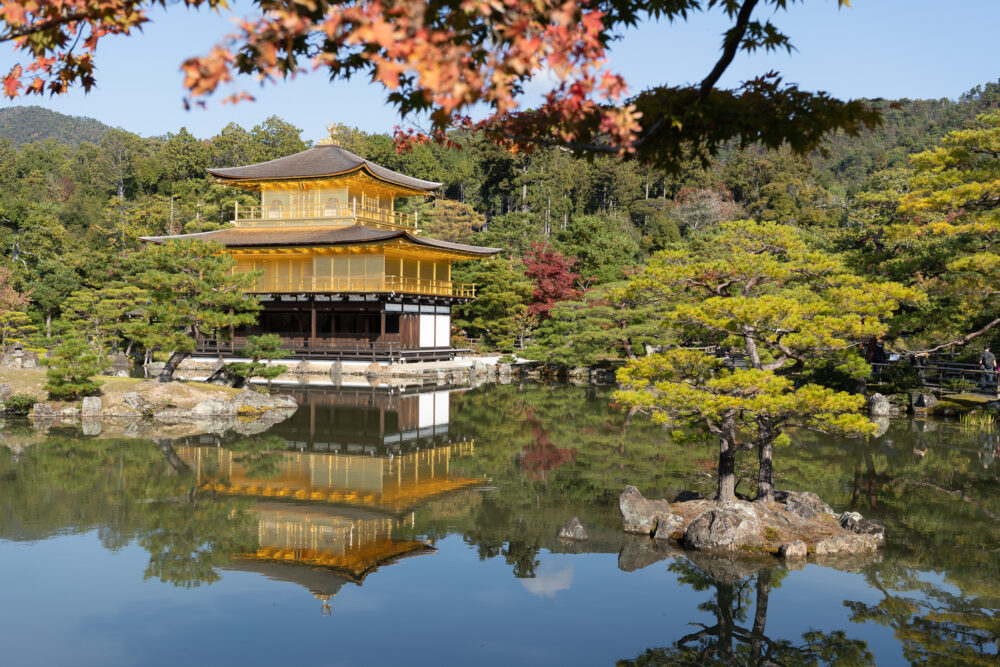
9. Kyoto is all about picking and choosing.
To keep Kyoto budget-friendly you can’t see everything. Many Buddhist temples in the city charge an $8-$15 entrance fee. This is probably to combat overtourism in an area that sees an incredible amount of visitors. We found that the free shrines were often the best because they saw fewer people and it wasn’t just massive crowds jostling for a photo op. Shoren-in Temple even has a tea ceremony that’s authentic for half the price of typical touristy tea ceremonies. I wrote about how to attend it here.
I recommend making a list of a few attractions and sticking to those rather than trying to see everything. These are our favorite things in Kyoto.
- Bike to the Bamboo forest just out of town early in the morning.
- Hike to the top of Fushimi Inari Taisha, not just a quick photo op visit.

If you’re looking to splurge on food in Kyoto, and it’s got some excellent options, definitely pay Teppan Tavern and La Bac a Sable a visit. Teppan Tavern serves Wagyu A5, traditional Kyoto bites, and homemade Umeshu (plum wine) that’s better than anywhere else for dinner. Seriously, this is the highlight of Japanese hospitality and it won’t break the bank. We spent $40 on a full meal with a few drinks. The French bakery is the perfect lunch pick-me-up.
10. 7/11, Family Mart, and Lawsons.
These are convenience stores scattered all over Japan. They have the cheapest beer and chu-hi, the cheapest coffee, and a wide array of Japanese snacks and desserts. But the best part is the bento boxes and hot food. You might be put off by the sushi, pizza or curry stuffed bao, habanero chicken strips, and tonkatsu meals but they are actually excellent and good quality! It’s a very popular stop for commuting Japanese residents. Keep in mind that hot food is usually restocked just before popular meal times.

In my professional opinion, the best food goes to Family Mart— but the best coffee goes to Lawsons.
Most restaurants don’t open until 10-11 AM and few hostels offer breakfast which leaves you out of luck. But these stores are a great cheap option for breakfast. Or late night meal. Or lunch.
11. Another cheap meal option? Conveyor belt sushi.
These places are the best. And they happen to be the most budget-friendly restaurants for great traditional Japanese sushi. You can typically get 10 plates between $8-15 depending on the items you select. This is a great way to familiarize yourself with sushi menus and sample new things too without having to commit to a whole set.

12. Share meals!
Unlike South Korea , a country we visited just before Japan, it’s very easy to order one dish and share. In Korea, you often pay by the person for popular meals like Korean BBQ. A major pain in the wallet for budget travelers looking to sample a lot of different items. Japan, fortunately, does not follow this rule and it’s quite easy to share several small plates for cheap.
13. Buy food for your Magome excursion.
I wrote an entire post detailing everything you need to know about hiking from Magome to Tsumago. I highly recommend this trip but since all restaurants close by 5 PM and I found most to be overpriced in the area— be sure to buy your own food from a Family Mart before you head to the mountains. Don’t forget trail snacks!
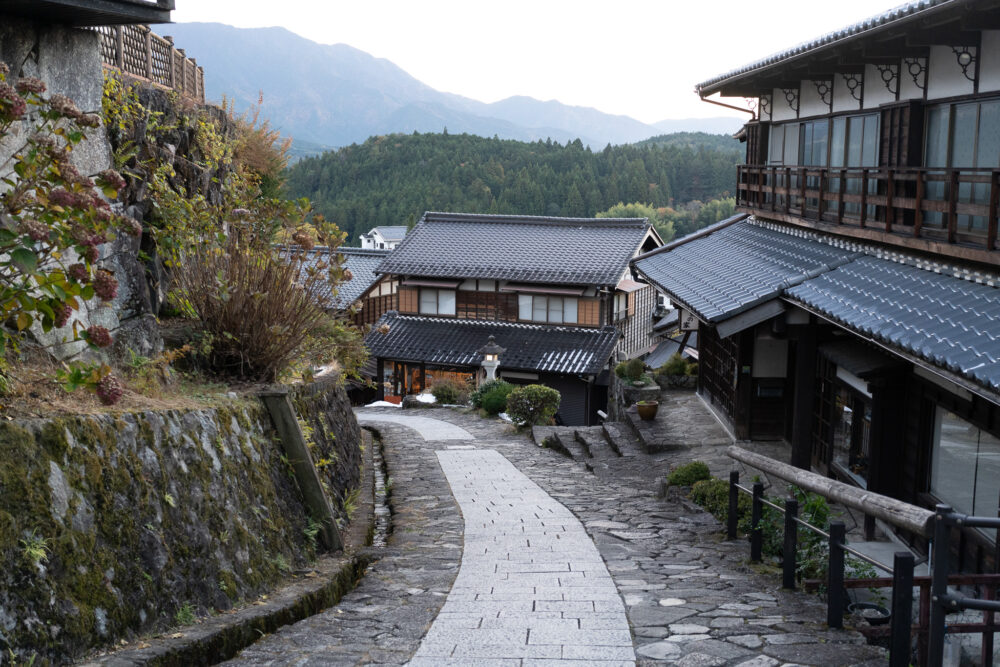
14. Beer is the most expensive alcohol in Japan.
Skip the beer and instead opt for Japanese Whisky highballs, Plum Wine, Shochu, and sake for cheaper drinking options.
15. Choose Omoide Yokocho over Golden Gai for a night out.
If you are looking for Tokyo drinking hot spots and nightlife, Omoide Yokocho is cheaper and more authentic than the late-night Golden Gai district. In Golden Gai, the drinks aren’t as strong and you’ll often have to pay a cover to even sit at the bar. It was still worth wandering through the alleys of each but I much preferred Omoide for dinner and a night of drinking.

How much did we spend in Japan on a Budget?
Let’s look at a quick budget breakdown of what we spent while visiting the country. Keep in mind, we only took trains and bullet trains because we had a short amount of time. We also didn’t know many of the above tips beforehand and would have booked our Magome accommodation much further in advance. So basically, I think you could save hundreds by following our tips above.
How much we spent in total for 19 days for two people: $2,687.55
How much we spent per day per person: $70.72 per day per person!!!
I hope this information helps you feel more confident to visit Japan on a budget and save lots of money while you do so! This was our most expensive trip BY FAR and with these tips, we could have easily cut costs by hundreds of dollars. Let me know in the comments if you think you have any Japan budget travel tips to add to my list.
Save This Post For Later!
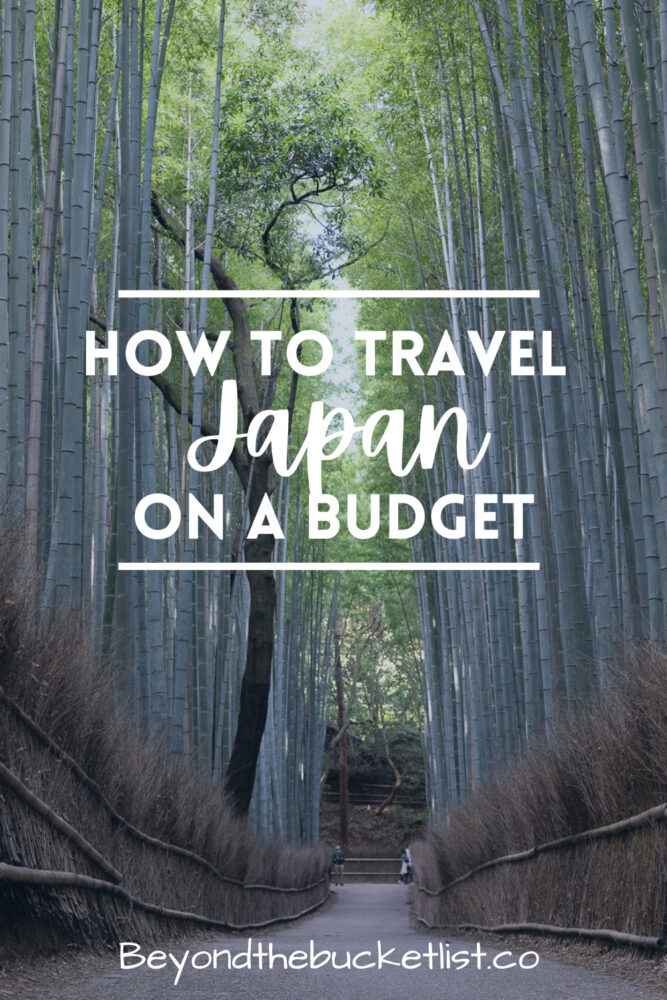
Further Reading...

How to Score Cheap Flights for Any Destination

The Nakasendo Trail: How to Hike Magome to Tsumago
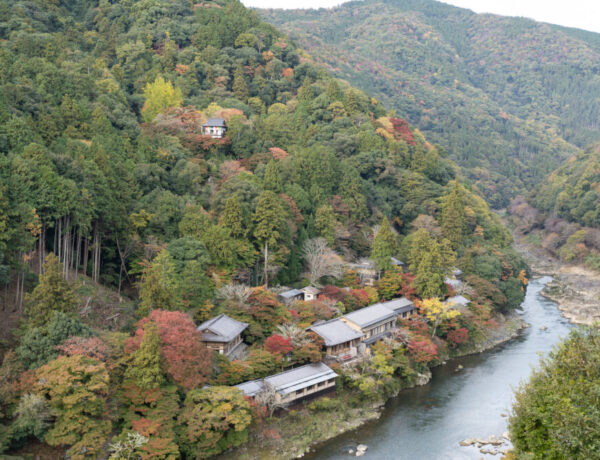
Is the Japan Rail Pass Worth It? Why I DIDN’T Buy One.
You suggested to hike to the top of Fushimi Inari Taisha. While I agree hiking up is really cool, I was underwhelmed because there really aren’t any great views so doing the entire top loop felt a waste. I did it at night which was totally cool, but eerie. You could hear but not see the monkeys in the trees.
Leave a Reply Cancel Reply
Save my name, email, and website in this browser for the next time I comment.
Notify me of new posts by email.
Sign up to our newsletter!
This site uses Akismet to reduce spam. Learn how your comment data is processed .
10 Days in South Korea: A Mini Travel Guide (2023)
How to experience a traditional japanese tea ceremony in kyoto, beyond_the_bucketlist.

- Tokyo Cheapo (繁體中文)

10 Adrenaline-Pumping Okinawa Adventures
Sign-up for monthly updates from japan cheapo.

A Matcha Lover’s Guide to Kyoto
Love tea? Then you'll love Kyoto.

Updated: 2024 Japan Cherry Blossom Forecast
The blooms are fashionably late. Here's when to see sakura in all the major cities.

April 2024: Top Events Around Japan
Look forward to flowers and festivals galore!

8 Perfect Places To See Cherry Blossoms in Osaka
Castle grounds, sprawling parks — and somewhere extra special.

Cherry Blossoms in Kyoto: 14 Best Sakura Spots
From temples to riversides, geisha districts — and more.

9 Things To Do in Fukui
Explore the shiny new stop on the Hokuriku Shinkansen — an easy trip from Tokyo.

6 Must-See Fertility and “Penis Festivals” in Japan
Stop giggling and start reading.

11 Best Places to See Cherry Blossoms in Japan
Riverside paths, real castle moats, pagodas and more.

Ghibli Park Guide: Tickets, Getting There and More (Updated)
Now with the Valley of Witches, and real-life cat buses.

Osaka to Tokyo: The Fastest and Cheapest Ways to Get There
Handy information on your travel options between the two cities.

March 2024: Top Events Around Japan
Plum and cherry blossoms, spring festivals, the Grand Sumo Tournament in Osaka — and more!

The Survival Guide to Kyoto Station
Bookmark this for easier travels.

5 Reasons To Visit Ishikawa
The prefecture extends a warm welcome, as part of its efforts to rebuild in the wake of the Noto earthquake.

February 2024: Top Events Around Japan
Winter wonderlands, oyster festivals, and rituals to chase away demons.

The Sanyō Shinkansen: Everything You Need To Know
A complete guide to the bullet train between Osaka and Fukuoka, including stops, services & discounts.

Mega Guide to the Sapporo Snow Festival
So very cold. So very worth it.

January 2024: Top Events Around Japan
Kick off the new year with fire festivals, water festivals, and even festivals featuring ogres!

Sanriku Fireworks Festival 2024
Watch the sky light up with 15,000 fireworks at this year’s Sanriku Fireworks Festival in Iwate Prefecture. What happens? The festival comes twice a year: once in spring and once in …

Spring Kemari Festival
This Nara festival features beautiful processions, rituals, and eventually a game of kemari.

Kintaikyo Bridge Festival
Enjoy the festival atmosphere at this traditional and years old recreation of the return of the Daimyo.

Miyako Odori
Celebrate spring in Kyoto with the annual Miyako Odori, a performance by Kyoto's geisha.

Atami Marine Sea Fireworks Festival 2024
The Atami Marine Fireworks have been lighting up the east coast of the Izu Peninsula since 1952.

Heijokyo Tempyo Festival
Relive the days when Nara was the capital of Japan. Expect re-enactments, a noble banquet, parades, and more.

Hotel Épinard Nasu
The Hotel Épinard Nasu is in the countryside, half an hour from Nasu Shiobara Station in Tochigi. A shuttle bus will transfer guests to the hotel from the station, and a direct shuttle is also available from Tokyo Station and Ikebukuro Station. …

VISION GLAMPING Resort & Spa Yamanakako
Camp in style — with an air-conditioned tent, hot spring & views of Mt Fuji.

HOTEL MYSTAYS Sapporo Susukino
HOTEL MYSTAYS Sapporo Susukino is located in Sapporo's downtown area. It is ten minutes' walk from Susukino Subway Station, and just over an hour from New Chitose Airport by express train. The hotel is within walking distance of the urban oasis …

August 11th

September 3rd

August 19th

October 24th

Get a Discount on Kimono Rental in Kyoto
Enjoy sightseeing in historical Kyoto while wearing a traditional kimono. Rent your outfit …

Brunch at Nishiki Market in Kyoto
Start your day the right way -- with a delicious brunch in "Kyoto's kitchen", also known as …

Experience Tea Ceremony in Kyoto
Dive into Japanese history with a traditional tea ceremony, together with a visit to Byōdōin …
Close without accepting
- Travel Tips
- Japan on a budget
How to Save Money in Japan: Travel Japan Cheap With These 38 Thrifty Tips

- tsunagu Japan
Japan can be a cheap country to travel, but it still requires some careful budgeting to balance having a good time with not going broke. Thankfully, there are plenty of services for travelers to take advantage of to save money in Japan and travel cheaply. This includes train passes, discount tickets, limited-time sales, cheap restaurants, capsule hotels, and more. But to travel Japan cheaply, a bit of advanced research is necessary, which is why we’ve compiled this list of 38 tips on how to save money in Japan! Thrifty travelers, read on!

This post may contain affiliate links. If you buy through them, we may earn a commission at no additional cost to you.
Traveling overseas takes a lot of money. When you're planning your trip to Japan, don't you think about ways to save as much money as possible?
This article is split up into various categories for money-saving tips:
Please check these tips out and make your trip as affordable as possible!
A. Transportation
1. japan rail pass.
This ticket is an essential item for people who want to go everywhere throughout Japan by rail. You can freely use it on railroads and buses owned by JR (there are a few where you can't), and if you use it wisely then it's a very good deal, especially if you want to take the shinkansen. However, if you buy it, there are a few terms and conditions you must follow, so please double check the homepage before you travel. Here are the prices:
Official Site: www.japanrailpass.net/en/index.html
You can also book online here: https://affiliate.klook.com/redirect?aid=30900&aff_adid=736947&k_site=https%3A%2F%2Fwww.klook.com%2Factivity%2F1420-7-day-whole-japan-rail-pass-jr-pass%2F
Check out this articles for more on JR Pass and traveling by train in Japan:
What you Should Know about the JR Pass while traveling in Japan
The Perfect Guide to Traveling by Train in Japan
2. Utilize local JR passes
Similar to the JR Pass, JR Hokkaido, JR East, JR West, and JR Kyushu all have their own passes for their regional rail lines. If you're not traveling throughout the whole country and are just staying within a single region, buying one of these passes instead might be easier on your wallet. However, just like the JR Pass, there are some rail lines you can't use it on. There are also terms and conditions, so make sure you check the homepage before buying.
Hokkaido Rail Pass: https://affiliate.klook.com/redirect?aid=30900&aff_adid=768557&k_site=https%3A%2F%2Fwww.klook.com%2Factivity%2F3067-7-day-jr-hokkaido-rail-pass-jr-pass
JR East Pass: http://www.jreast.co.jp/e/eastpass/
JR West Rail Pass: https://www.westjr.co.jp/global/en/travel-information/pass/shop/
Kyushu Rail Pass: http://www.jrkyushu.co.jp/english/railpass/railpass.jsp
3. Utilize the Seishun18 ticket
This ticket is only valid over spring, summer, and winter vacations, and it allows you to use the JR regular and rapid trains as much as you'd like for 5 days (shinkansen and limited express trains are not covered by this pass). One ticket is 11500 yen (same price for adults and children) for 5 days. Since multiple people can share a ticket, it's an extremely useful ticket for travelers. However, if you're sharing a ticket, then each traveler counts as one day. For example, if 5 people are sharing a ticket, then the ticket will be valid only for one day.
You can purchase it at the JR Midori no Madoguchi or at ticket machines. They also sell them at manned JR stations without Midori no Maduguchi, so double-check at the station. You cannot buy it online.
Official Site:
http://www.jreast.co.jp/e/pass/seishun18.html (English)
4. Utilize highway buses (night buses)
If you're traveling long distances, then highway buses can be a deal. The overnight buses are especially cheap. You can find buses from Tokyo-Osaka for 2000 yen sometimes depending on the traveling season. If you think about how you don't have to pay for lodging that night it's an even better deal. There are many plans that make it comfortable for women, such as placing female passengers next to other women, so it's definitely recommended for people who want to travel cheaply. You can buy tickets online, but there aren't many websites that have foreign language support. Here are some:
WillerExpress: http://willerexpress.com/en/
VIPLiner: http://vipliner.biz/?&lang=ENG
Highway-buses.jp: http://highway-buses.jp/
JR also has highway buses, and you can buy those at the ticket windows at JR stations.
5. Utilize an excursion ticket/1-day pass
Depending on the railroad company, you can find excursion tickets and one day passes. It's a good deal because you can use it as much as you want within the period of validity, so it would be good for people who would like to travel frequently within a specific area to confirm the details with station employees. For example, the Kintetsu company offers the Kintetsu Rail Pass for the Osaka area.
http://www.kintetsu.co.jp/foreign/english/index.html
6. Buy discounted tickets
At stores called kinken shops, you can buy rail and bus tickets at discounted prices. "Daikokuya" is one of the best known, but there are other stores doing the same especially in the large business areas and near stations in the big cities. They sell not only travel tickets, but also tickets to concerts, sports events, as well as gift certificates. There are also shops that do currency exchange.
8. Utilize bicycle rental programs
If you're going to move within a radius of about 5 km in one day, then maybe renting a bicycle would be a good idea. Lately within the big cities, especially Tokyo , bike rental services have been increasing, so if you're interested, you should definitely look into them. This article suggests some bike rental places in Tokyo:
Check out this articles for more on Rental Bike srvice in Tokyo:
9 Rental Bike Services in the Tokyo Area You Should Try
9. Walk
Especially in the big cities, the distance between stations is rather close, so it might be faster to walk than to take the train in some cases. If you use methods like using Google Maps to check out the different routes available to you, you can find some great walks that will allow you to save money.
10. Yoshinoya/Matsuya/Sukiya
These are the three largest gyuudon chains in Japan. You can eat an average sized bowl for around 350-380 yen (as of July 2015). All of these chains are cheap but taste great, so definitely try it at least once.
11. Tachigui soba
"Tachigui" is the term for a restaurant where you stand to eat ('tachinomi' refers to similar-style drinking places). At tachikui soba restaurants, you can eat soba for a surprisingly cheap price. You can find kakesoba (the simplest kind of hot soba) and morisoba (the simplest kind of cold soba) for around 300 yen or less. Some tachigui soba chains are Fuji Soba, Komoro Soba, and Yudetarou.
12. Self-serve udon restaurants
In Japan, there are many udon restaurants where you can choose your side dishes as you order, and lately there's been a huge increase in number. In these restaurants the meal prices are relatively cheap, and there are many chains where if you have the simplest dish, kake udon, you can eat it for less than 300 yen. Among those chains the most famous are Marugame Seimen and Hanamaru Udon. If you've never tried udon, the standard is sanuki udon, so please definitely try it if you get a chance.
13. All-you-can-eat restaurants
For people who want to eat until they're completely full, it would be good to head for an all-you-can-eat restaurant. There are various all-you-can-eat restaurants, including yakiniku, fruit parlors, hotel lunch buffets, tonkatsu restaurants with free bowls of rice, etc. If you're interested, it might be good to ask your hotel concierge or local Tourist Information desk for more information and restaurant recommendations.
14. Taste Japanese food at depachika's sampling corners
Depachika are the basements of large department stores, and they're usually full of stalls and storefronts where you can buy both packaged and fresh food. Many of these stores offer tasting samples. If you want to easily try some Japanese food or ingredients, it would be good to go to a depachika and try out some of what's on offer. In most cases, you can quite comfortably sample a shop's wares, but going to the same place multiple times is considered rude, so only go once. If you find yourself wanting to go back there, it would be better to buy the product.
Check out this articles for more on depachika:
Need souvenirs or just a bite to eat? Try Japan’s famous depachika!
15. Stuff yourself cheaply thanks to the conbini
Buying bento, cup noodles, onigiri, and other foods at the conbini for a cheap price might be good for people who are trying to save money. In large convenience stores there are actually places where you can sit and eat, so you can enjoy your food right there.
Also Check: 10 Meals You Can Buy At Convenience Stores in Japan
16.Local bakeries
In Japan, there are many local bakeries that have delicious sweet breads for sale for a reasonable price. You can find many original breads such as curry pan, melon pan, anpan, and others, so definitely stop by if you find one.
Also Check: Weird or a new discovery?! 4 recommended souzai pan (stuffed buns)
17. Do your own cooking
In lodging areas like guesthouses, often they have a kitchen attached so you can cook your own food after buying ingredients in the supermarket. Also, you can buy fruits and vegetables at greengrocers. It would be interesting to experience the true Japanese lifestyle this way, so if you get the chance and you like to cook, maybe consider doing this as well.

18. Stay at a capsule hotel
The futuristic style of capsule hotels makes it very popular with travelers. At particularly cheap places, you can stay the night for about 2000 yen, so it's definitely recommended for people who want to spend as little as possible on lodging.
Check out this article for more on Capsule Hotel in Japan:
https://www.tsunagujapan.com/the-complete-guide-to-japanese-capsule-hotels/
19. Stay at a guesthouse
Guesthouses aimed towards backpackers are very reasonably priced. There are many private homes that were renovated to be stylish guesthouses. The best part about this sort of lodging for many people is that you can talk to other travelers from around the country in the shared living areas. There are many places where one night will run you 2000 yen, so it's definitely worth a try.
Check out these articles for more on guesthouses in Japan:
14 Great Guesthouses in Tokyo
16 Guest Houses Suitable for Long Stay in Kyoto
9 Best Old Town Houses turned into Guest Houses in Kyoto
20 Recommended Guesthouses in Osaka
20. Utilize Airbnb
Airbnb is gaining popularity all around the world, and in Japan as well the number of Airbnb hosts as well as the number of travelers using it have been increasing. There are different types of options you can use, including renting just a room or renting an entire house. The prices range from cheap to exorbitant, including some places that start at 1000 yen a night. If you stay at a regular house in Japan, you might be able to create some precious memories.
21. Stay at sauna and super sento areas
In Japan, saunas and super sentos are establishments that are primarily for spa purpose, but they often have huge resting areas and some even have proper rooms that you can rent. There are sleeping huddles and sofas that you can sleep on with no problem. You can usually stay for 3000 yen or less. However, many people are sleeping in the same area, so please take care of your valuables by putting them in a locker or other safe place.
22. Stay at a manga kissa/internet cafe
Many people take advantage of the overnight packs offered by manga/internet cafes, where you can cheaply stay there for about 1000 yen. While they're called cafes, they're establishments where you have your own little cubicle. Often they have different "rooms," including furnished with reclining sofas, paired seats, or tatami. Many of them also have showers, manga that you're welcome to read as much as you'd like (if you can read Japanese), Internet, and a drink bar included. Japanese people often stay at manga kissaten/internet cafes if there are no hotels availablein the area as well.
23. Stay at a temple
A long time ago, Japanese travelers that wanted to economize on their trip would often spend a night under the eaves at temples or shrines. Now, thanks to various problems that arose from those travelers and their behaviors, many temple and shrine managers refuse travelers. However, at small temples and shrines in cities, or those out in the countryside, there are places that will give you permission. However, you absolutely must discuss this with the chief priest or the manager first, as well as properly letting them know your name and the purpose of your trip.
24. Doze at a family restaurant
If you definitely can't find a place to stay, there are actually a lot of people who doze off at family restaurants when they've missed the last train and can't get home. If you order just the drink bar, the most you'll spend is 400 yen. However, since this really isn't a place to stay, try not to spend too much time after the trains start there or at least order a meal if you're there for a long time.

D. Shopping
25. utilize 100 yen shops .
100 yen shops are shops where you can buy all of their products for 100 yen (around 1 dollar), and is very popular among Japanese people and travelers alike. A wide variety of products are offered here, including snacks, cosmetics, kitchenware, stationery, clothes, and more, so you can buy both emergency items as well as souvenirs here. The biggest chains are Daiso, Seria, and Can-Do. You should definitely stop by one to see what you can find. Check out the following articles:
10 Japanese souvenirs you can buy at the 100 yen shop
26. Utilize the supermarket
If you want to get food or drinks, the supermarket will be the cheapest option. Depending on the time (such as right before closing), you can find huge discounts on certain foods. It would also be good to buy snacks and treats at the supermarket as souvenirs.
27. Buy food & drinks at drugstores
Japanese drugstores don't just sell medicine, they also sell certain food and drinks cheaply. At especially big drugstores, you can buy standard food items such as 1.5L juices or milk, eggs, tofu, bread, frozen foods, seasonings, and snacks for a reasonable price.
28. Pick up a supply of basics at Uniqlo
If you're staying in Japan for a long time, you might run out of basic clothing like T-shirts or underwear. In those cases, it would be good to stop by Uniqlo. For example, you can buy a pair of socks for 300 yen. Also there are often discounted products in baskets around the store, and when that happens you can find products like T-shirts for 500 yen or less.
29. Utilize flea markets
Flea markets are more of a reasonably priced treasure trove than most people understand, so you should definitely check one out if you get the chance. Most of them are held on Saturdays and Sundays. This website is only in Japanese, but if you look at it, you'll be able to find information about flea markets all around Japan.
http://furima.fmfm.jp/
30. Aim for lucky packs
Lucky packs are sold around the New Year (beginning of January). Lucky packs are a way to get lots of products from a brand or store at once for a discounted price; many items will be sold in one package but you won't know precisely what you're getting. However, this way you can get $500 worth of products for $100. However, some stores are beginning to sell lucky bags where you can properly see the insides. In any case, lucky packs are a great way to shop for a great deal.
31. Aim for bargain and sale periods
In summer (June-August) and winter (December-February), department stores, shopping malls, electronic stores, and other big shops tend to have huge sales and bargains available. Depending on the store, the time period they hold the sale changes, so if there's anything specific you want to buy definitely confirm with the store first.
32. Utilize local recycle centers
When you're staying for a long time, you can find necessary items like blankets, clothing, appliances, and other items at local recycle centers for free or cheap. There are also times when you can even get bicycles, so people who are interested should definitely inquire at their local city or ward hall.
E. Communication and Mail
33. choose the most suitable internet access method .
In Japan, there are a few ways to access the Internet while you're traveling.
1. Rent a pocket WiFi router.
2. Enter into a paid contract with a WiFi service.
3. Only use free WiFi spots.
4. Pay for a SIM card.
5. Utilize internet cafes and manga kissatens.
The usefulness of these methods depends on how much Internet you'll need to use and how often. If you read the article linked below, it might help you make a decision on which one will be the most useful method for the lowest price.
The Perfect Guide for the Traveller Connecting to the Internet in Japan
34. Utilize pay phones
If you just need access to a phone, then using pay phones will be cheaper than using a cell phone. Lately since the numbers of people carrying cell phones are increasing, the numbers of pay phones have fallen, but you'll still be able to find pay phones around town.
35. Choose the best international postal service
If you want to send anything back home, there are a few services you can choose. Japan Post offers EMS (Express Mail Service), SAL (Surface Air Lifted), or by ship. There are also private companies that you can utilize. There are trade-offs with each service depending on how much you're willing to spend and how fast it will arrive, so please choose which one works best for you depending on how much you want to send and when you need it by. Below is the HP for Japan Post.
http://www.post.japanpost.jp/english/index.html(English)
F. Miscellaneous
36. utilize coin laundromats .
If you're staying here for a while, or even people who just want to pack light, it would be cheaper to utilize a coin laundry rather than your hotel's laundry services (if available). You can usually do your laundry for about 200-300 yen, though many places require you to buy your own detergent. The following site is only in Japanese, but you can find coin laundromats around the country using it.
HP: www.coin-laundry.co.jp/userp/up010/Up010Controller.jpf (Japanese Only)
37. Sell personal belongings at pawnshops
If you're completely out of money, then it is possible to sell your belongings at pawn shops. If you have any items from international brands that are popular in Japan, or any rare accessories that can only be found in your hometown - if you have that sort of thing, you might be able to sell it for a decent price.
38. Utilize kinken shops
We talked about buying travel tickets at kinken shops, but you can also buy tickets for many other things such as movies, theater, sports, or other events of interest.
You May Also Like:
15 Great Ways to Enjoy Tokyo on a Budget
15 Ways to Enjoy Osaka On a Budget
15 Great Ways to Enjoy Kyoto on a Budget
11 Ways to Enjoy the Sapporo Area on a Budget
[Travel tips in Japan]
10 fun details in Japan to keep an eye out for
[Japan Travel]
47 Tourist Attractions in Japan’s 47 Prefectures
50 Magnificent Views in Japan that You Shouldn’t Miss
30 reasons to go to Japan before you die
30 Most Popular Japan Sightseeing Spots for Foreigners (2014)
20 Japanese places chosen by travelers that no one should miss (2013)
A Guide to 18 UNESCO World Heritage Sites in Japan
15 Beautiful Japanese Villages You Must Visit
30 shrines and temples in Japan to get lucky charms for love
[Tokyo Travel]
50 Things to Do in Tokyo
50 Things to Do in Shibuya
50 Things to Do in Harajuku
50 Things to Do in Shinjuku
50 Things to Do in Ueno and Asakusa Area
10 Japanese Cultural Experiments You Can Try In Tokyo
[Osaka Travel]
50 Things to Do in Osaka
11 Places to Experience Japanese Culture in Osaka
[Kyoto Travel]
50 Things You Must Do in Kyoto
10 Places in Kyoto to Play Dress Up in Traditional Kimono
[Hokkaido Travel]
50 Things to Do in Hokkaido
[Fukuoka Travel]
50 Things to Do in Fukuoka
[Okinawa Travel]
50 Things to Do in Okinawa
The information in this article is accurate at the time of publication.
tsunagu Japan Newsletter
Subscribe to our free newsletter and we'll show you the best Japan has to offer!

About the author
Related Articles
Related interests.
- Traveling with Kids
- Rules & Laws
- Climate & Seasons
- Transportation
- Traveling alone
- Manners & ettiquette
- Pocket wifi & hotspots
- Smoking & Drinking
- Travel itineraries
- Currency & money
Restaurant Search
Tsunagu japan sns.
Subscribe to the tsunagu Japan Newsletter
Sign up to our free newsletter to discover the best Japan has to offer.
Connect with Japan through tsunagu Japan
Let us introduce you to the best of Japan through our free newsletter: sightseeing spots, delicious food, deep culture, best places to stay, and more!

- Meet the Team
- Work With Us
- Itineraries
- Italy Travel Guide
- Hawaii Travel Guide
- Travel Tips
How to Travel in Japan on the Cheap
If you’ve looked into a trip to Japan , you’ve probably already realized that Japan is not a cheap destination, even with a favorable exchange rate. You shouldn’t let that detour you from taking a vacation in Japan, however. You might need to get creative with your planning, but there are many ways that you can travel in Japan on the cheap.
Most travelers to Japan want to stay for at least a week , maybe even 2 weeks , so they can visit many parts of the country in one trip, but that can be difficult to manage on a budget.

If you’re worried about mounting costs for your Japan itinerary, don’t! There are many ways to cut costs while traveling in Japan , you just need to put in a little extra effort to find them. Check out these budget hacks that will help you travel to Japan without breaking your budget.
Japan Itineraries
If you’re looking for a great itinerary you can follow in Japan, see our suggested routes below.
- We have a 7-day itinerary and a 2-week Japan itinerary so you can choose which length of trip suits you best.
- If you will only be visiting Tokyo, here’s a shortened 3-day itinerary for Tokyo .
- Want to add more days outside of Tokyo ? Here’s a 3-day Kyoto itinerary and a 2-day Osaka itinerary .
Planning Your Japan Trip?
Buy flights. We recommend using Skyscanner or Expedia to find the best flight deals. Check out our guide to finding the best airfare for additional tips.
Get your Japan Rail Pass. You can buy it online here
Hotels See all hotel options
- In Tokyo: The Strings by InterContinental Tokyo
- In Kyoto: ACE Hotel Kyoto
- In Osaka: Intercontinental Osaka
Best Tours to Book
- Fully escorted 8-day Intro to Japan tour
- Private Custom Tour: Tokyo in a Day
- Tsukiji Fish Market Food and Culture Walking Tour
Table of Contents
Transportation in Japan

Most people who travel to Japan visit Tokyo , even if it’s only for a few days, because Tokyo has the most accessible airport in Japan. However, it’s likely that you’ll want to visit other parts of Japan as well, but transportation costs can really add up.
Japan has the high-speed Shinkansen train system that whisks people around at an extremely rapid pace. It’s really convenient for traveling long distances in a shorter amount of time, but it’s also quite expensive.
Just one trip on the Shinkansen from Tokyo to Kyoto or Osaka will cost you roughly $120 one way. Add two or three other trips, and you’ve blown your budget.
That’s where the Japan Rail Pass comes in. The Japan rail pass is a virtually all-you-can-use travel pass that only tourists can buy for a specific duration (7, 14 or 21 days).
You can use it on pretty much any train (though not all), at any time, without the hassle of purchasing tickets in advance. You can buy a rail pass that gets you standard seats or splurge for the Green Pass, a first-class rail pass that gets you reserved seats, plus other perks, in the best carriages.
The pass can provide significant savings over buying single tickets. The current price for an adult standard 7-day pass is $294 USD. For all the information you need, plus where to purchase the rail pass, read our guide on the Japan Rail Pass .

Take for instance the trip from Tokyo to Kyoto, a popular destination that’s a journey from Tokyo. The fast train from Tokyo will cost around $120. This is where the Japan Rail Pass really comes in handy.
If you plan to do even a small amount of traveling between cities, it will pay off quickly. You’ll get unlimited rail travel with the seven-day pass for $294.
While in Kyoto, be sure to check out this post on How to Experience Fushimi Inari Shrine .
Eating on the Cheap in Japan
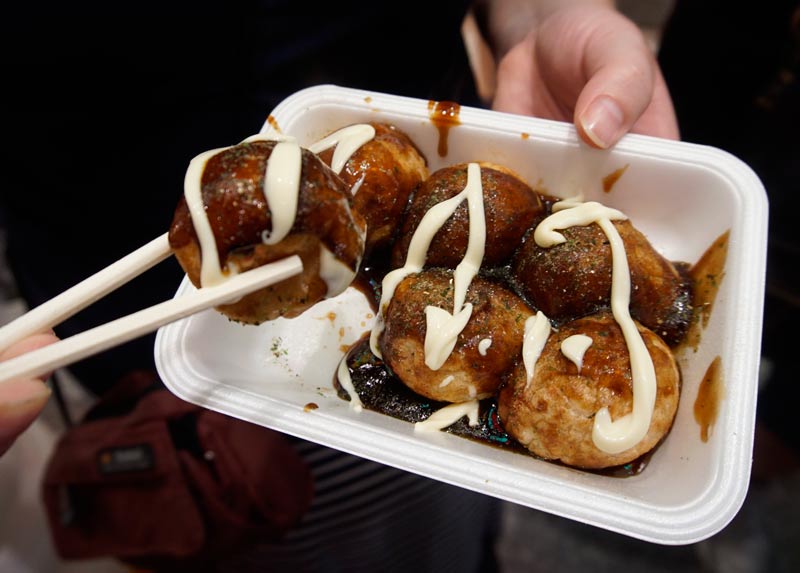
Known for its incredible food, Japan is a country where you will want to be sampling as many Japanese specialties, like ramen, yakitori, and sushi as you can.
However, you can quickly break your budget with food in Japan if you’re only eating at restaurants and not taking advantage of all the great izakayas and street food vendors.
I hear people say that they don’t want to eat street food when traveling because they’re afraid of food poisoning or stomach bugs that might ruin their trip. While you do have to be careful about the food stalls you choose, you don’t have to avoid them altogether.
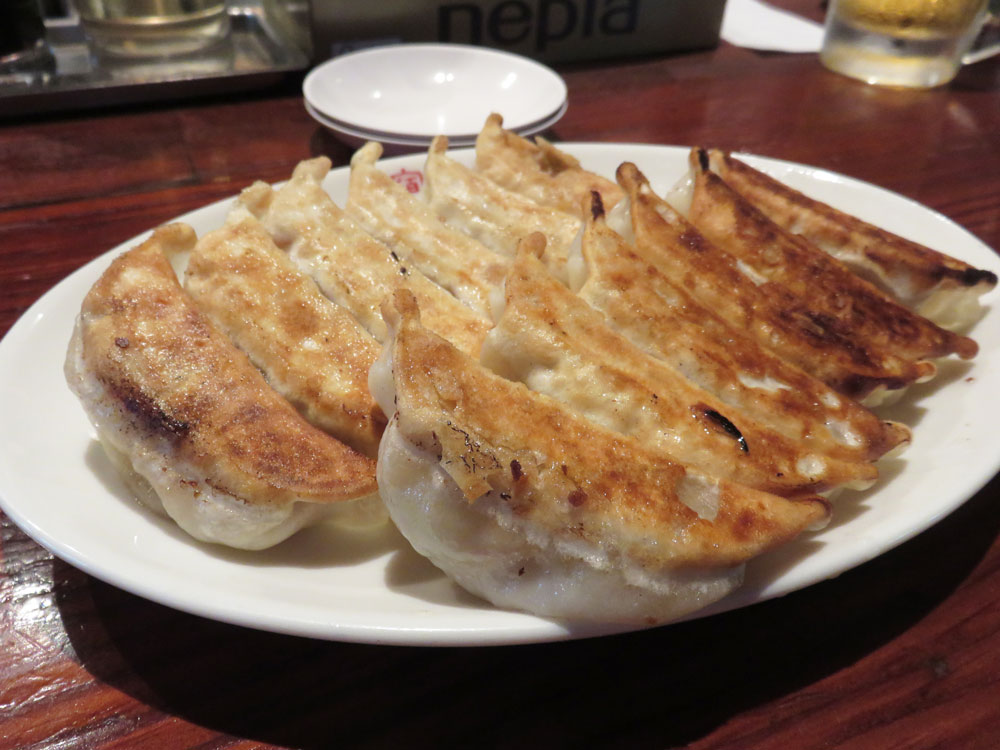
In fact, some of the best and cheapest places to eat in Japan are at food stalls. You will find them near and around markets like Tsukiji outer market in Tokyo and Dotonbori street in Osaka, and in Nishiki Market in Kyoto.
At these street food vendors, you can purchase a large plate of a specialty like gyoza or takoyaki for just a few dollars. There are also Ramen streets in just about every city in Japan. You can purchase a huge bowl of delicious ramen that will keep you full for hours for just a few dollars too.
Usually these ramen stalls can be found around the train stations. For sushi, we found that grocery store sushi was the most economical way to eat great freshly made sushi for a lot less than you’d pay at a restaurant.
We even ate grocery store sushi for breakfast! At most major train stations, there are huge basement grocery stores that have large sushi sections. You can get an enormous tray of sushi for a very low price.
How to Drink on the Cheap in Japan

When we travel, we like to visit wineries and breweries when we can, not only to get a taste of the local spirits, but to learn more about the ingredients and processes used there. In Sapporo, save on your bar bill by visiting the three major breweries in town: Sapporo, Kirin and Asahi, where you’ll get a tour and free tastings (at least at the latter two).
If you like sake, you can visit the sake breweries outside of Tokyo and Osaka, where there are often free tastings offered. Then you’ll want to visit a sake bar where you can sample as many sakes as you like for one small entrance fee. Kurand Sake Market in Tokyo carries over 100 different varieties of sake directly from the breweries.
Budget Accommodations in Japan
As you can imagine, hotels are one of the biggest expenses you’ll have while traveling in Japan. There are a plethora of high-end and luxury hotels throughout the country, and travelers also really love staying in traditional ryokans. But these options can be quite pricey.
The Citadines hotel chain has nice, clean rooms that are perfect for a budget stay, without sacrificing location, safety, or good value. Try the Citadines Shinjuku .
There are some really nice hostels you can book in major cities in Japan that will save you a tremendous amount of money. You can often find apartments for short-term stays on Booking.com.
Japan is also known for its capsule hotels. These are sort of mini-hotels that are considerably smaller than a traditional hotel. They provide a bed and basic amenities and the price is often around $25 USD per night.
Activities on the Cheap in Japan

In Japan, there are many activities you can do that are free or very inexpensive. These are the activities you should aim to participate in to save money. Free activities include walking around the city (there are so many unique things to see while walking around), visiting gardens (some have entrance fees), visiting temples from the outside.
There’s no better way to see the city than to walk! Instead of booking an expensive group tour, consider joining a free walking tour, or put together your own self-guided tour of the top sites in the city. However, there are also a ton of museums, temples, and activities that are not free. And you don’t want to miss out on those.
For the cities where the focus is on these things, you can get a visitors pass that allows entrance to multiple attractions for one low price. Especially in Kyoto and Fukuoka is its ancient temples, art museums, and architecture. You can buy 1 or 2 day passes that allow you to see multiple things in the city, as well as ride public transportation.
Use these budget hacks during your next trip to Japan and you’ll find that it’s not nearly as expensive as you once thought. If you plan well, you can travel in Japan for cheap.
Be Prepared For Travel Planning is the most important part of any successful trip. Do it the easy way:
🧳 Travel Packing List | ✔️ Why You Need Travel Insurance | ✈️ What to Do Before You Leave Home
- Find and book the best hotel (our favorite booking site is Expedia)
- Research flight options (our favorite tool is Skyscanner )
- Book a tour (we always use Viator to find the best tours)
- Rent a car through Discover Cars (they search the best deals for you!)
YOU MIGHT ALSO LIKE

9 Great Cherry Blossom Viewing Spots in Japan

7 Amazing Day Trips from Osaka Japan
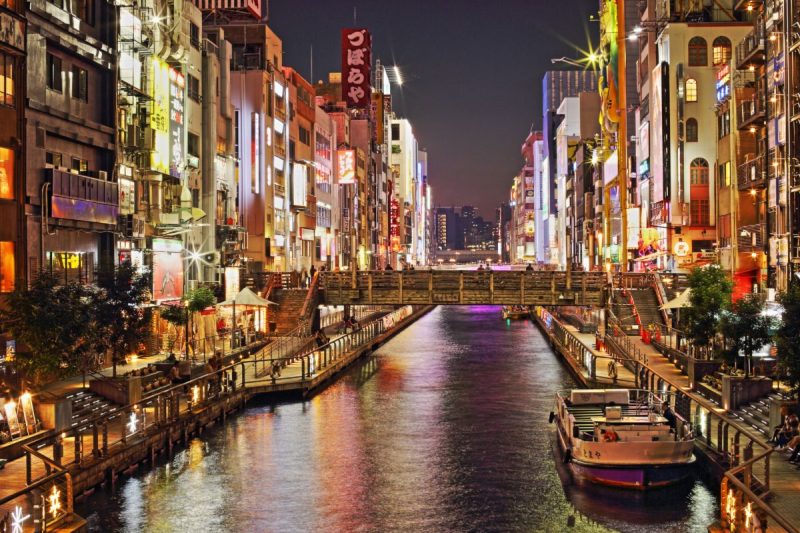
How to Spend 2 Days in Osaka Japan

Where to Buy Japan Rail Pass and Is It Worth It?
Like this post? Pin it for later

Laura Lynch, creator and writer of Savored Journeys, is an avid world traveler, certified wine expert, and international food specialist. She has written about travel and food for over 20 years and has visited over 75 countries. Her work has been published in numerous guidebooks, websites, and magazines.
27 thoughts on “ How to Travel in Japan on the Cheap ”
Great article – Japan is so expensive, it’s always good to go prepared with some tips for ways of saving some cash!
What a great plan. We haven’t done Asia as a family. Self guided walking tours are where we have our greatest successes though, so glad to hear that’s an easy option.
I also didn’t think you can fin bargains in Japan but happy to hear it is possible. South Korea sounds interesting as well.
You certainly can, if you look hard enough! 🙂
Beautiful places! My favourite is Kyoto, where I was in winter and everything was covered by snow and looked even more magical 🙂 And of course, matcha ice cream 😀
Lovely alternance of pics of old style structures and modern areas, you give an idea of the double (and incredibly interesting) face of this country that I really wish to visit as soon as possible!
Thanks for the tips – I’ve heard really good things about the Japan Rail Pass; we’re looking for our next destination for 2016 from Australia so Japan is definitely on the cards. Just have o toss up between that or South Korea!
You can do both, Meg! If you’re planning to go to Fukuoka, ti’s really easy to get to South Korea – then you’ll get a two-for-one!
I love Japan! Even though it can be pretty expensive, I tried my very best during my visit there for a week! Japan Rail is definitely worth it! Expensive but worth every penny, especially since I only stayed for a week – which is not enough time to explore a lot of things I want to see in Japan, haha. I missed out Sapporo and Fukuoka! Osaka as well, I went there but didn’t really explore since I focused primarily in Tokyo, Kyoto (my favorite!) and Hiroshima. I didn’t know about the ferry from Fukuoka to Busan! That’s really awesome, I just didn’t realized that it’s only about 3 hours away. I’ll keep that in mind for next time 🙂
Yes, Japan Rail is definitely the way to go for getting around. I bet most people don’t realize that the two countries are so close and can be reached like this. It cuts down a lot on transportation costs between the two.
I confess: budget reasons have always kept me away from Japan (and the impression that it’s very crowded and busy in all cities). Good to know that there are some travel hacks.
Yeah, it’s definitely not great for tight budgets, but there are some ways to cut costs.
That house on the lake in the picture at the top is what and where I want my future house to be. Breathtaking. Great post.
I could handle that too, I think!
Nice tips. I enjoyed traveling in Japan two times. Truly an expensive destination to explore. I hope these tips help others experience it nonetheless.
Yes, me too!
I love japan and the food, thanks for the tips. We budget $30 a day for food and it was enough. We still got to sample most of it. Loved the market places too.
That’s great info, Karla! You can definitely find cheap eats in Japan and still eat really well.
Great tips, especially the bit about South Korea! Will have to try and add that in on our next visit 🙂 We redeemed hotel points for most of our time in Japan so that saved a ton–I think trains were our most expensive thing! The JR Pass really helped though! Would love to check out Sapporo next time as well–we love visiting breweries when we travel!
Using points in Japan is a really great idea. We always try to save up our points to use in places that are especially expensive. Better value!
I’m sharing this immediately because I have quite a few audience members that this would be perfect for. Thank you for sharing your deep knowledge on the subject with us. It’s so helpful and I’m also bookmarking it for future reference!
That’s great, Nicole. I’m always happy to help.
Ooo thanks for the great tips!!
Japan is in a world of its own, and I LOVE it. Could use the tips on South Korea though, can’t wait to get there next! Korean BBQ all day every day. 😀
Oh I agree – Korean BBQ every day!
I really want to see the culture in Japan. It is so interesting. It is nice to know that Japan can be done on a tighter budget. It always seems so expensive.
The culture and the food are two of the top attractions in Japan for me. But yes, it can be expensive!
Leave a Reply Cancel reply
Your email address will not be published. Required fields are marked *
Save my name, email, and website in this browser for the next time I comment.
- Travel Resources

Sign in to your account
Username or Email Address
Remember Me

Travel To Japan for Cheap (Really!) How to find an inexpensive way to Japan and then save money while you're there!
January 5, 2012 • words written by Hashi • Art by Aya Francisco
Last year, I wrote about a plan by the Japanese government to give away 10,000 free airplane tickets to Japan to boost its slumping tourism industry.
Unfortunately last week, the Japan Tourism Agency announced that the "Fly To Japan" project had failed to get funding in the Japanese government's budget
While I'm really disappointed that I won't be able to get to Japan on the government's dime, I can definitely understand why the plan didn't go through.
It might come across as a little insensitive for the government to spend so much money on free airplane tickets when there's still so much that needs to be cleaned up and rebuilt in the Tohoku area. Not to mention that tourist money wouldn't likely directly help earthquake and tsunami victims.
Alternatives Ways To Japan
If you had your little heart set on those free tickets to Japan, fear not ! There are still plenty of ways to get to Japan if not for free, then very cheaply. If you're really serious and determined about going to Japan, then there are tons of great opportunities out there for you. Here are some alternate routes of getting to Japan.

If you're going to college or university, there are often very inexpensive ways of traveling abroad through your school, either through partnerships with other schools or through grants and scholarships. Even some high schools offer programs to Japan. If you can show that you're eager and serious about learning, then your school will usually try its best to accommodate you.
Koichi and writer John both went to Japan through school study abroad programs, and Koichi wrote a great guide a few years back on how to get a scholarship, which you should definitely read here .
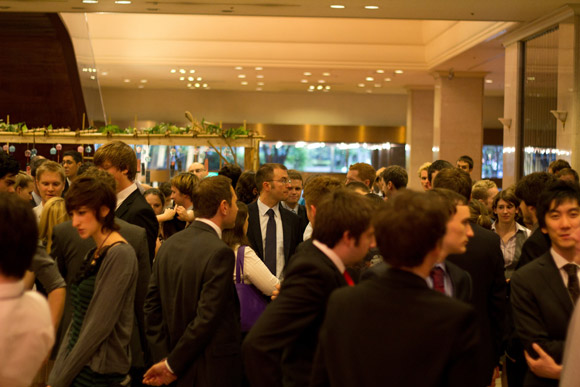
The JET (Japan Exchange and Teaching) Programme is a well-known and long-running program created by the Japanese government that takes native English speakers from other countries (mainly the US) and places them into teaching positions all across Japan.
The program requires you to have a university degree, but other than that there's basically no teaching or language experience required.
Not to mention that JET is an actual job, meaning you'll be paid for going to Japan. Pretty good deal, right?
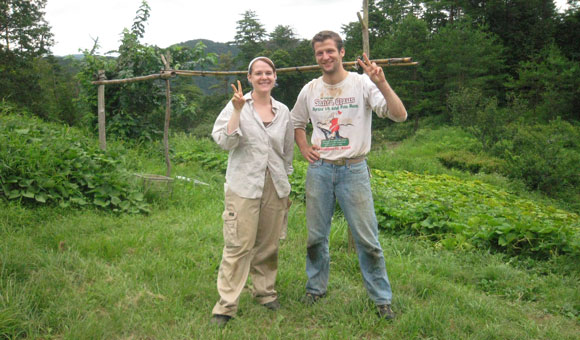
Last year, I wrote about WWOOF , AKA World Wide Opportunities on Organic Farms. WWOOF is more of a working vacation than a leisurely visit, but you'll nevertheless have a place to stay and food to eat in Japan. If you're at all interested, there's tons more information in the post (and comments!) here.
Make Your Own Way
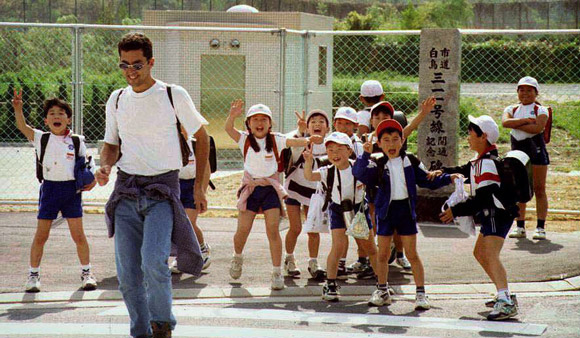
Of course, if none of the above methods sound appealing to you, you can always try to make it to Japan with your own, hard-earned cash. This can be tough because it means that you'll not only be planning everything from start to finish, but you'll be be paying for everything too.
Fortunately visiting Japan on the cheap can be a lot easier (and more rewarding) than you might think.
Places To Stay
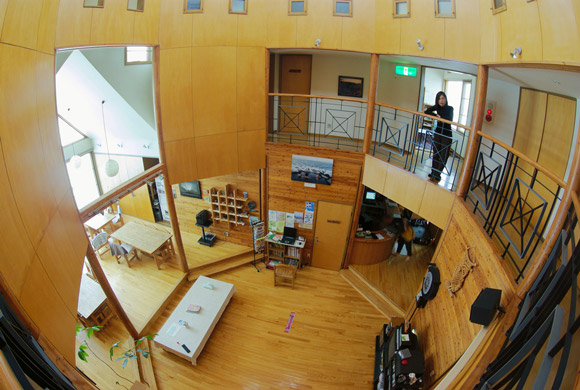
Going to Japan might seem impossible if you approach it thinking that you need to stay at a Hilton, but in reality there are tons of cheap ways to stay in Japan.
Hostels are always an inexpensive option, and should be a familiar concept to anybody who's traveled on the cheap before.
There are also tons of online resources to help you connect with people who want to give you a place to stay. Sites like Airbnb and CouchSurfing will let you find people who will let you stay at their homes.
And if you're comfortable enough, you can look at what the homeless do in Japan. Last year Koichi covered how the homeless in Japan live cheaply, including staying in capsule hotels and internet cafés. Might not be the most appealing option, but it certainly does the job.
Where To Go (Avoid The Big Cities)

Tokyo, Osaka, and Kyoto are all great, world-class cities. I have nothing against them, but if you want to visit Japan cheaply, you should avoid them at all costs .
Because these cities are so great and popular, they're usually pretty expensive. For that reason, you should gravitate away from the well-known tourist destinations and check out the many other cool and interesting parts of Japan.
Former Tofugu writer Nick did a whole series called " Off The Beaten Track " about visiting less well-known areas in Japan.
But really, the bottom line is that if you really want to go to Japan, there are tons of ways for you to get there. And believe it or not, there are even lots of people who want to help you out! You just have to know where to look.
I'm sure that there are many, many more groups and organizations that can help you get to Japan that I didn't mention in this post. If you know of any more, please let us know on Twitter
EDIT : For those of you asking about getting cheaper airline tickets to Japan, check out Koichi's post "How To Get Cheap Airplane Tickets To Japan" here .
- Skip to main content
- Skip to primary sidebar

Destinations
- Plan Your Trip
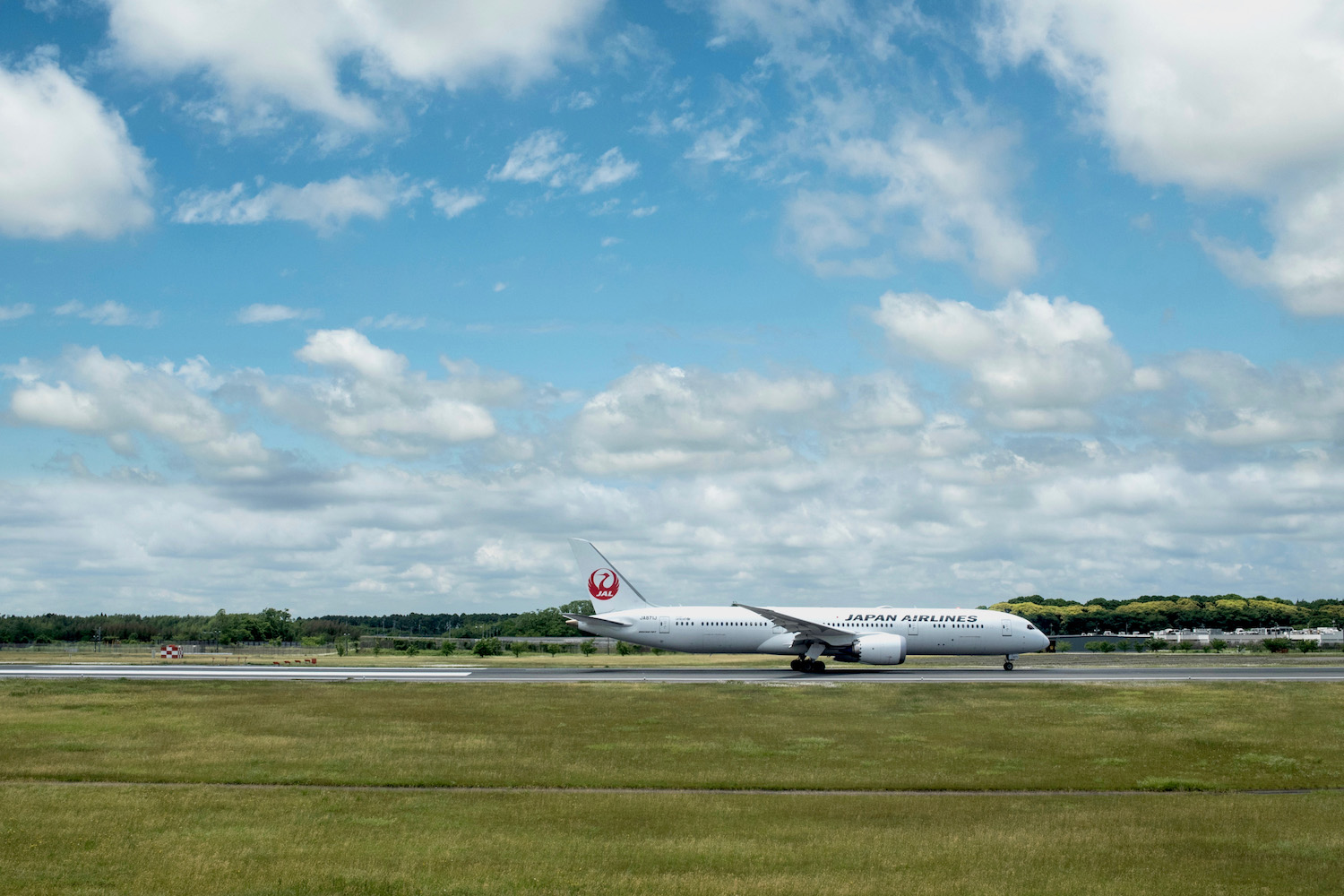
Using Miles and Points for Flights to Japan
September 28, 2022 by Robert Schrader Leave a Comment
If you’re like most travelers, you’re looking for ways to keep your trip to Japan cost down, without sacrificing convenience, comfort of the quality of the experience. At the same time, Japan is simply an expensive country —and flight prices do little to remedy this fact.
Using miles and points to travel to Japan offers a lot of benefits, though it’s not necessarily the cheapest way to get to Japan. Continue reading to see our best tips and tricks for booking flights to Japan the travel hacker way.
What’s the Cost of a Flight to Japan?
As a general rule, flights to Japan are expensive, whether you’re flying in economy, premium economy, business or first class. This is especially true for nonstop flights to Japan, and particularly so on routes that have no competition, such as San Diego to Tokyo on JAL, or United Airlines’ San Francisco to Osaka flight. Particularly, but not exclusively: Several airlines operate flights from Bangkok to Japan’s major airports, but prices in all classes of service remain high almost all year.

When it comes to a specific plane ticket to Japan cost, it’s difficult to name an exact figure, but you should expect to pay no less than $1,000 round-trip (in economy) from most cities in the US and Europe, and at least $500 return from points within Asia, sometimes even including neighboring countries like China and South Korea . Business class flights are several times more expensive—it’s rare to see round-trip premium class tickets between Japan and Europe or North America for under $3,000.
How to Find the Cheapest Way to Get to Japan
Japan flight deals.
Japan airfare deals are rare, but they are possible. Lower prices are particularly common on carriers that offer only connecting service to Japan, such as flying Air China via Beijing from Europe or the US (before covid-19, I saw prices under $700 return) or flying an airline such as Philippine Airlines from Kuala Lumpur to Nagoya via Manila or Cebu for somewhere in the $300 range. For what it’s worth, Taiwan (which is probably the cheapest country to fly to Japan from) is almost always on the low end of the Japan flight price spectrum.
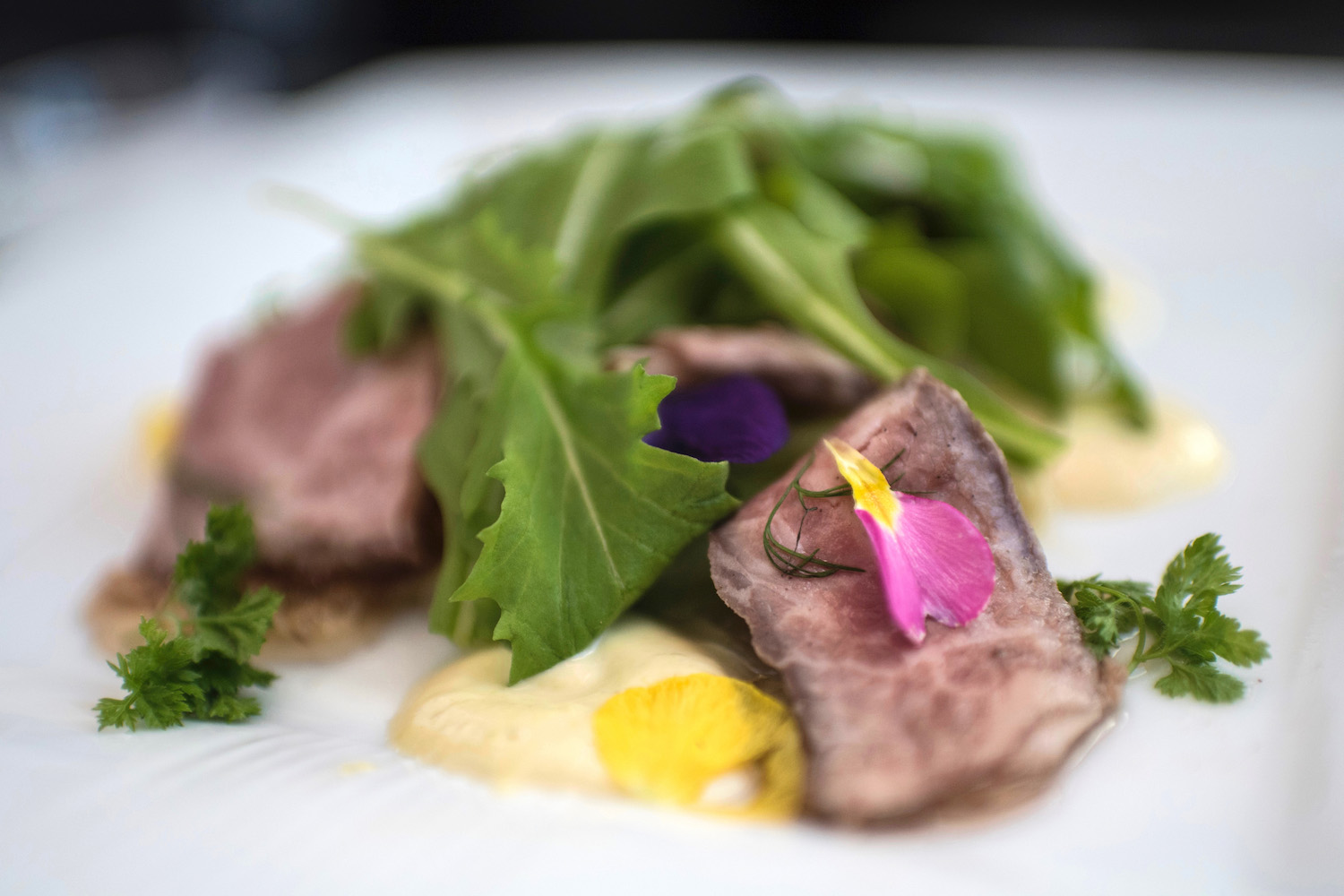
Barring a great Japan flight sale (and keeping in mind that these occur rarely, since demand for travel to Japan tends to be strong year round), another way to save on flights to Japan is to fly a low cost carrier. Previously this was only an option from points within Asia—namely, flying Peach from Okinawa to Bangkok, or AirAsia X to Japan from Bangkok, Kuala Lumpur and Jakarta. But now that AirAsia X offers flights to Honolulu (via Osaka) and Singapore’s Scoot flies to Europe, the game has changed.
Frequent Flyer Miles
Of course, this article isn’t about paying cash for flights to Japan—it’s about using miles and points to find the cheapest way to fly to Japan. And what about the Japan Airlines frequent flyer program, Mileage Bank? The good news is that rates for redemptions are fair (which might come as a surprise, if you’ve ever wondered “why is Japan Airlines so expensive?”) even though they devalued slightly in 2018 . The bad news is that unless you frequently fly JAL or credit partner flights to your JMB account, points can be difficult to amass. The only credit card transfer partner for JMB is Marriott Bonvoy, whose credit card often has no sign-up bonus.
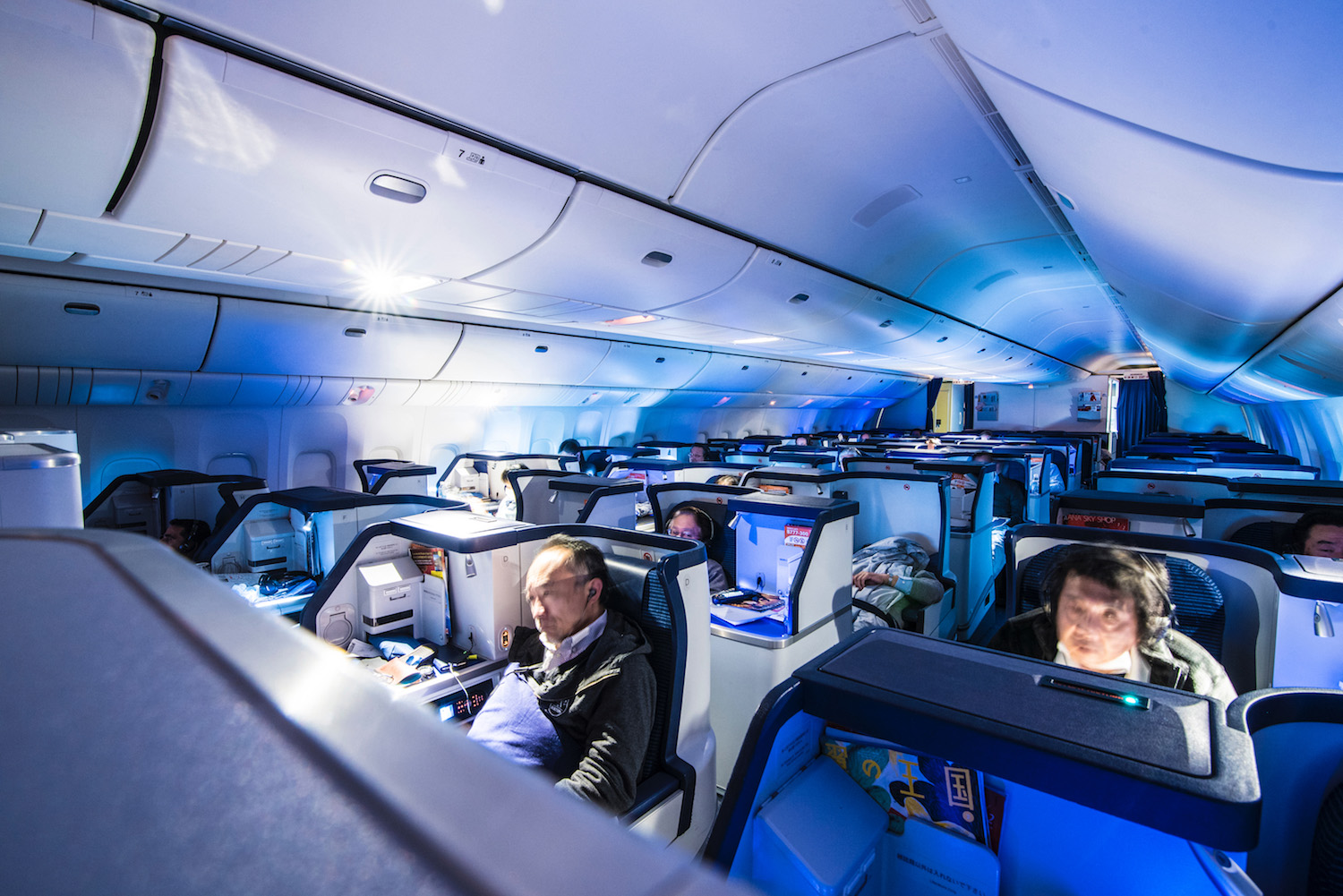
The ANA award chart is likewise favorable—at least if you’re traveling round-trip, since an ANA one-way award isn’t possible. It’s better than JAL’s, too, in that ANA is a transfer partner of AMEX Membership Rewards, making miles easier to accumulate. Keep in mind that while ANA’s low redemption rates can be appealing (according to the ANA mileage chart, round-trip in business class from Europe to Japan or vice-versa is only 95,000 ANA Mileage Club Points), transfers aren’t instant and holding awards is not possible, which means availability could technically disappear as you wait for your points to arrive. NOTE: As of late 2022, both JAL and ANA awards (at least when booking directly with each airline) are plagued by exorbitant fuel surcharges.
Credit Card Points
A quick Google search RE: what airlines fly to Japan will overwhelm even the most detail-minded person, since just about every airline geographically capable of doing so has flights to at least Tokyo. While most of these airlines pale in comparison to ANA and JAL, especially in business class , booking flights to Japan using frequent flyer points is generally much easier on non-Japanese airlines, even if prices are higher. This can certainly be the cheapest way to travel to Japan.

For example, while business class flights to Tokyo from Los Angeles cost as little as 80,000 United MileagePlus miles one-way (it only takes 75,000 ANA Mileage Club points, by comparison, to book a round-trip ticket), the flexibility of flying one-way is valuable for many travelers, United miles are easier to get than ANA Mileage Club points and United’s online booking system is a lot more straightforward than ANA’s, to say nothing of how simple the ANA award chart is. When using miles and points to book a flight to Japan, take careful stock of all your options and choose the one that offers the greatest reward for the least effort.
Other Ways to Fly to Japan Cheap
For most travelers, the cheapest way to Japan is contained among the strategies I’ve listed above. However, there are some other approaches you can take if you still can’t find the ticket price you want using these methods, though you do have to accept one truth before you begin: It just isn’t that cheap to fly to Japan!
Taking a connecting flight is one example. To be sure, the cheapest way to get to Japan from Europe is often through China, which is not a great value proposition in any way other than monetarily—Air China doesn’t compare to ANA or JAL in any positive way. Another way to save on your next flight to Japan is taking advantage of flash sales, which you can learn about by reading airfare blogs or even by subscribing directly to airlines’ email newsletters.
Other FAQ About Flying to Japan
What is the cheapest month to fly to japan.
There’s no one cheapest month for flying to Japan, although certain seasons are cheaper than others. Namely, winter months between December and February tend to be cheap, unless you’re flying directly to the winter sports capital of Sapporo, Hokkaido.
What is the cheapest city in Japan to fly to?
Tokyo’s Haneda and Narita Airports host the most intercontinental flights into Japan, so flights to Tokyo tend to be cheaper than those to other cities like Osaka, Nagoya, Fukuoka, Sapporo and Sendai. Note that sometimes, prices between Narita and Haneda can even be different.
How much does a round trip to Japan cost?
The price of a round-trip ticket to Japan varies depending on where your travel originates and the class of service you choose. While economy class flights between Japan and Asian countries like Taiwan and Thailand can cost as little as $300 round-trip, first- and business-class flights from long-haul destinations in Europe and North America can easily go for $5,000-10,000.
The Bottom Line
Are tickets to Japan cheap or expensive? They’re definitely not cheap, although using miles and points to book them can definitely result in a lower cost depending on how you play your cards. At the same time, since frequent flyer points for Japanese airlines can be difficult to acquire, you might actually end up spending more time (and, in some cases, money) going this route. Ultimately, the cheapest way to get to Japan (from US other otherwise) will depend on the particulars of your travel situation. Make your next trip to Japan your next yet when you hire me to plan a custom Japan itinerary
Plan Your Japan Trip

Subscribe to email updates!
Words, images and design ©2018-2024 Robert Schrader, All rights reserved. Read Privacy Policy or view sitemap .
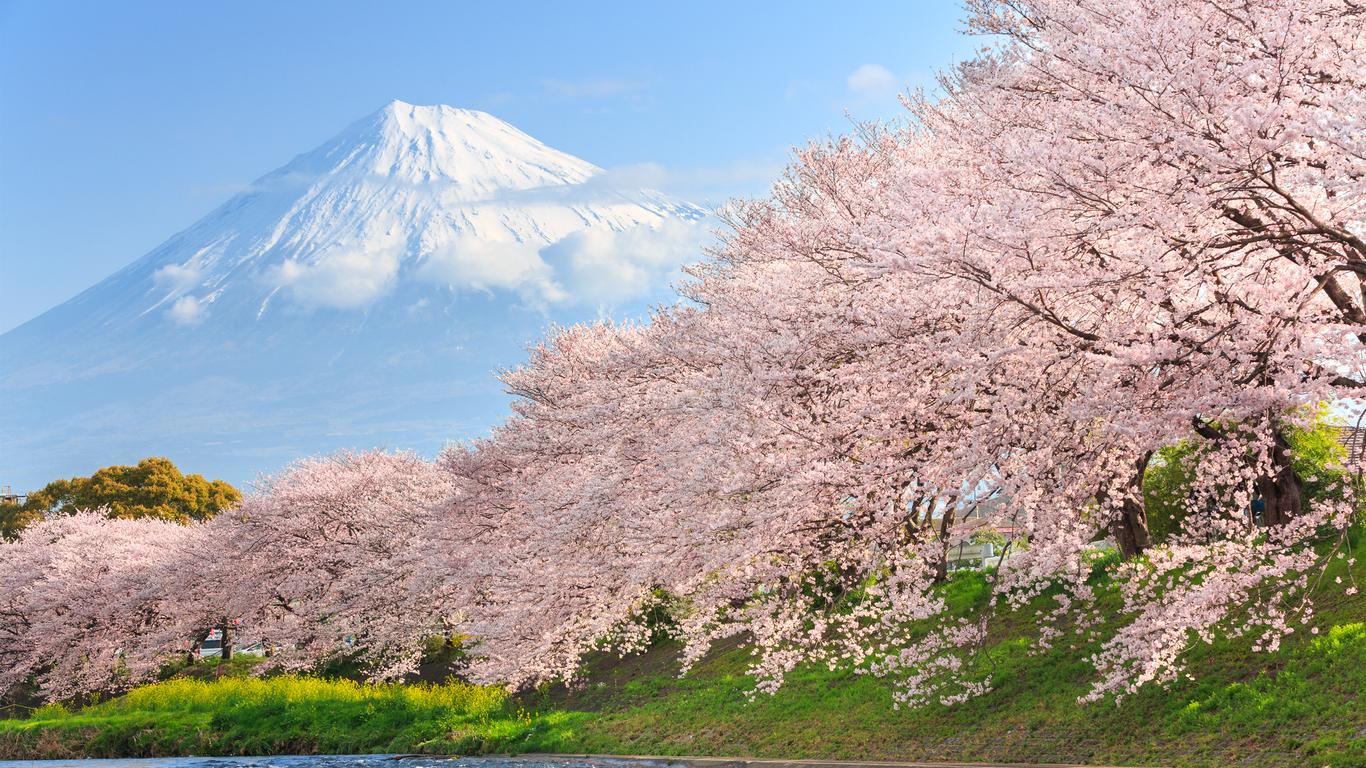
Find cheap flights to Japan from $305
This is the cheapest one-way flight price found by a kayak user in the last 72 hours by searching for a flight from the united states to japan departing on 10/9. fares are subject to change and may not be available on all flights or dates of travel. click the price to replicate the search for this deal., search hundreds of travel sites at once for deals on flights to japan.
Save 22% or more Compare multiple travel sites with one search.
Track prices Not ready to book? Create a price alert for when prices drop.
Filter your deals Choose cabin class, free Wi-Fi and more.
Bundle and save Save money when you bundle your flight + hotel.
Best Japan Flight Deals
Cheapest round-trip prices found by our users on KAYAK in the last 72 hours
Good to know
Faqs - booking japan flights, if i am traveling with children to japan, are there any child seat laws i should know about when renting a car in this country.
There is a national child restraint law in this country that states that any child up to four years old needs to travel in a forward-facing car seat and that kids up to six years old need to travel in a booster seat or on a booster cushion.
If I plan on flying to Tokyo, which airport should I fly to?
Most travelers flying to Tokyo will choose the Haneda Airport (HND) because it offers a location that is closer to the center of Tokyo. That said, some of the cheapest flights available from the west coast of the United States to Tokyo travel to Narita International Airport (NRT). Another one of the advantages of this airport is that it offers abundant rail service to get travelers not really into the center of Tokyo but to a number of other destinations that surround this large city.
If I want to travel to Sapporo in the north of Japan, what are some of the best choices for flights?
When flying to the New Chitose Airport (CTS) that serves Sapporo from cities on the west coast of the United States, some of the quickest options are the one-stop flights from San Francisco International Airport (SFO) aboard ANA Airlines.
What are some transportation options to get from Haneda Airport into downtown Tokyo?
The Tokyo Monorail travels from the airport to the downtown area in around 23 minutes, with trains departing the airport every 10 minutes or so. There is also a bus service provided by Airport Limousine that can make the trip in around 40 minutes, with buses departing roughly every hour from the airport.
Which airport should I use to visit Mt. Fuji?
Mt. Fuji is the highest mountain in Japan, lying just below the center of Honshu island and south of Tokyo. If you intend to visit the area you can fly to Tokyo Haneda Airport and get a connecting flight to Mt. Fuji Shizuoka Airport, about 50 mi away from the peak.
Which Tokyo airport is closer to the downtown area?
Of the two international airports serving the Tokyo metropolitan area, Tokyo Haneda Airport is the closer to the city center which is a little less than 9 mi away. Tokyo Narita Airport lies about 37 mi from the center of the city, so plan your travel itinerary carefully when booking your flight from the US to Japan.
Should I buy Japanese Yen before I leave the US?
Most international travelers tend to buy local currency once they arrive at their destination and all the major Japanese airports have currency exchange offices where you can buy yen to pay for your taxi, rental car or to use public transportation.
Do the Japanese airports have facilities for families?
Yes, they do. All the international airports serving US flights provide facilities for parents traveling with children. These services include Baby Rooms equipped with changing tables and microwaves, nursing rooms for mothers with infants and Children’s Play Areas where the young ones can tire themselves out before the long flight home.
How long is the flight to Japan?
An average nonstop flight from the United States to Japan takes 14h 18m, covering a distance of 6071 miles. The most popular route is Los Angeles - Tokyo with an average flight time of 11h 15m.
What is the cheapest flight to Japan?
The cheapest ticket to Japan from the United States found in the last 72 hours was $247 one-way, and $429 round-trip. The most popular route is Los Angeles to Tokyo Haneda and the cheapest round-trip airline ticket found on this route in the last 72 hours was $740.
Which airlines fly to Japan?
ANA, United Airlines & Japan Airlines fly the most frequently from the United States to Japan.
What are the most popular destinations in Japan?
The next most popular destinations are Osaka (6%) and Okinawa (1%). Searches for flights to Fukuoka (0.5%), to Sapporo (0.5%) and to Hiroshima (0.1%) are also popular.
How does KAYAK’s flight Price Forecast tool help me choose the right time to buy?
KAYAK’s flight Price Forecast tool uses historical data to determine whether the price for a given destination and date is likely to change within 7 days, so travelers know whether to wait or book now.
Top tips for finding cheap flights to Japan
- Enter your preferred departure airport and travel dates into the search form above to unlock the latest Japan flight deals.
- Passengers need to have a valid passport for their trip to Japan, and they need to ensure that their passport remains valid during the entire length of their stay in Japan. It is also important to keep one blank page in the passport for an entry stamp.
- A popular departure airport in the United States for a flight to Japan is Los Angeles International Airport (LAX). Passengers looking for the quickest way to get from downtown Los Angeles to this airport should travel on the FlyAway bus that travels from Union Station in downtown Los Angeles to the airport in about 40 minutes.
- Two of the biggest annual events in Japan are New Year's Day and Obon, which occur in the summer months. If traveling to Japan for either of these events, it is best to book tickets as far in advance as possible to ensure availability and the lowest prices.
- One of the largest international airlines in Japan is ANA Airlines, and most travelers might be surprised to learn that one of their major hubs in the United States is Daniel K. Inouye International Airport (HNL), where passengers will find a number of nonstop flight options to a variety of cities in Japan.
- If you plan on traveling to the southern part of Japan, one of the most popular airport options is Nagasaki International Airport (NGS). There are a number of one-stop flight options available to this airport aboard both ANA Airlines and Japan Airlines from a variety of cities in the United States.
- US citizens do not require a visa to visit Japan, but permanent residents should check online with the nearest Japanese embassy or consulate to see if one is required for their respective countries. Bear in mind that you will be allowed to stay for up to 90 days.
- The Japanese capital city of Tokyo is served by two major airports: Tokyo Narita (NRT) and Tokyo Haneda (HND), which handle most of the international air traffic, but flights from the US to Japan also use Osaka Kansai Int’l (KSI) as well as Fukuoka Airport (FUK) and Okinawa Naha (OKA), so choose the one which is closest to your destination.
- Japan has four main islands in very close proximity to each other. The northern island of Hokkaido is not serviced by international flights from the US, so you’ll have to get a connecting flight from one of the two Tokyo hubs or use another form of surface transportation in order to get there.
- Due to their geographic location many of the flights from the US to Japan originate on the West Coast, where you can get several flights with connections from Los Angeles (LAX), San Francisco (SFO) or Seattle (SEA). The only nonstop flights to Japan are from the Hawaiian city of Honolulu (HNL) to Osaka via Air Asia X.
- Osaka has excellent ferry connections to the many southern Japanese cities like Miyazaki and Okinawa, but if you wish to visit the cities of Hiroshima and Nagasaki then you should use Fukuoka Airport, which is midway between them and therefore is a perfect launching point.
Top 5 airlines flying to Japan
The space for the seats i like it. Its not too close like other air line. The food is ok and also the staff. I'm waiting for my flight rewards point because until now i didn't recieved it.
The staff, ground and air, at ANA was very helpful and friendly during check in, boarding and during the flight. This is the reason why I always fly ANA whenever I go to Manila. The food was not the best but the flight crew more than makes up for the shortfall.
First I will say this was really NOT an ANA flight. ANA used a UNITED jet to perform this flight. I specifically booked with ANA because I did NOT WANT TO FLY UNITED FOR INTERNATIONAL FLIGHTS. So to spend $1800.00 and then discover after booking that it was going to be handled by United was very disappointing. I will be more careful next time when I book. The interior was very cramped in economy class; the dinner meal was terrible and also had extremely small portions for an international flight - the bread roll was ice cold and stale - that salad was very wilted; I’ve never had a “snack” that was so salty that it was difficult to eat; the breakfast “waffle” was practically unrecognizable. Really horrible meals for a very expensive international flight. Bathroom floor was also pretty dirty. I’m hoping my return flight is a real ANA airplane that is cleaned and serviced by ANA personnel with ANA meals. I will never book with ANA again if they continue to use UNITED airline jets. Yuck!!!🤢
Ticket was purchased as a United Airlines flight (operated by All Nippon) like what does that even mean? Makes for a VERY confusing flight experience. For instance, what do I look for a United drop off signage and ticket counter or ANA? No explanation anywhere to be found. I also felt a little bit scammed by the obsurdely restrictive seat selection provided. Only middle seats available!! Are you kidding me!! On 6hr + 10hr flights you're forcing me into the middle seat without telling me before I purchased the ticket?? This should be illegal. And to top it off, on the Tokyo LA leg there were quite a few empty seats including window seats! I must also say, the food was a dissappointing as well for my taste, fish with rice ( mostly plain white rice) or a vegetable medly for the breakfast meal? Should be at least 4 choices and at least 1 with eggs. Outside of these issues flight was otherwise ok.
Ground and flight crew were all courteous, extremely helpful and professional. Overall, process is really organized, from boarding to disembarkation.
This is a very long flight and the first time I have flown on a Japanese airline. I was very impressed with the staff. They worked hard and offered food and drink regularly. Plane was very well cared for. The let room was good . Food was ok but better than other airlines.
It was very nice. I was a bit disappointed by the few meal services. There were probably more drink services that I missed while sleeping, but I would have liked the crew to bring more than one drink service before landing and to bring more than one drink service and coffee service after take off
The space and bed was very comfortable , flight attendants very nice. The food was not tasty at all. I ordered the rib eye and it was so tough I couldn’t cut it.
I wish the serve should leach and drink. Maybe because only 2hr
Seat was roomy enough . The Asian selection for a meal was good . The tortellini was not very good. Service was excellent. O
The food was not that good. I liked the miso, green tea, and ice cream. I wasn’t able to put my carry on bag under the seat in front of me. The flight was smooth. Please expand your choices of movies especially the new ones. I can’t choose any of those films. They’re old.
I like the braised beef., miso soup,, and green tea. Very little choices of hollywood movies. The PA announcement in English was not very clear and very soft. I could hardly hear.
More updated movies & Chinese movies. The food sometimes overcooked. Prefer to have more neat snacks in between than just choose from the menu. Please change the menu every now and then. This is my second time flying within one year and the menu didn’t change at all!
Food is lagging. Very poor choice. Like vending machine fast food.
Please change the menu more often. The beef is not tender, more choice in ice cream flavor. Dessert is not good too.
The Experience was fantastic, it's a quick flight so no entertainment or food. Just a refreshment
Great crew, Japanese domestic flight is just a drink service but crew are very attentive
Again I paid for an upgrade on my credit card didn’t get it need a refund. . American I not good at gettin in contact for refunds.
l enjoyed the variety of good and drink choices. The flight attendants were very quick and efficient to our needs.
-Bathrooms were regularly checked/maintained. -Food was okay, but the miso soup was good. -Top of my foot got bitten by a bug when I took off my shoes and was only wearing my socks. It was swollen and very itchy for several days.
Flight delayed from Cape Town to Washington then got diverted to miami and in miami we had to fend for ourselves , im still trying to get to Shreveport now
delay several times and wait extra long to board. no entertainment service because there are problem for some rows. always encounter some delays for the last flight of the day.
I just wrote a text which was supposed to be for the flight from Denver to spokane not Frankfurt to Denver.
On time every leg of the journey and exceptional staff at counter, gate, and on board. I haven’t travelled in US for a long time and was genuinely surprised how pleasant this was.
Hated every minute of it. This flight should have only taken 1.5hrs but was delayed over 10hours. Now I am being told I cannot be compensated or refunded my ticket price or extra leg room, which I purchased but did not receive, because the airline is throwing the blame on the 3rd party I purchased tickets through and 3rd party putting the blame on airline. No one wants to help. They received their money and that's all they care about. Im going on 3 days of still trying to get to my final destination, had to cancel car rental, car insurance and hotel. Currently staying in airport until hotels open up. Thank you Lufthansa, Kayak, Underpricer and United for making this trip the worst ever.
The delays (5 hrs) were a comedy of errors, and the multiple safety issues encountered were very concerning.
flight delays, staff only communicating when pushed, food service lasting a grand total of 7 minutes, stuck in seat from 45mins into flight until landing
Crew was great and did their best to make us comfortable and captain came out at the beginning to announce why the flight was delayed, weather situation up ahead, and kept us updated throughout the flight.
the flight from Tampa departed with a delay. The food on board was poor, usually on international airlines alcoholic beverages are offered free of charge , but here it was for a fee, the cutlery was wooden, there were no hot drinks (tea, coffee). Unfortunately, I didn't take pictures of the portions of food, but it wouldn't have been enough for a child either.And in the future, I will try not to use the services of this airline
they made me check my carryon. There was space in the overhead bins.
Nice service. I wish it could provide hot water on the flight.
internet didn't work. No offer of drinks or snacks.
Flight was seamless. Free wifi helped pass the time. Food was okay, just make sure you pre order or pick something up from the airport
Internet connection very poor, means you can not even order items through their own shop.
Paid for business class lay flat seat. Significantly less comfortable than other carriers. No built in entertainment or WiFi. I barely saw flight attendants at all and they wanted to charge me for a bottle of water if i wanted more than what came with the meal (that i also paid extra for). Essentially you’re just paying for a slightly more comfortable seat than the rest of the plane and nothing else
Een prijsvechter, dus dat moet je ook verwachten. Voor alles moet je betalen. We hebben vooraf een maaltijd en een amenitiesset besteld. Die kregen we netjes uitgereikt aan boord. Het is BYOD voor het amusement tijdens de vlucht en dit werkte uitstekend. Geen trage wifi, helemaal niet. Alles kost geld, zelfs een flesje water. Misschien op langere vluchten wel gratis water, thee, koffie. Maar daarentegen mag je na de security je lege drinkflessen gewoon vullen en mee aan boord nemen
Wifi could have been better. Arrived 55 mins earlier than scheduled :)
Best part are two crying babies throughout the whole 11 hour trip
Clean and comfortable cabin. Friendly on board service. No vegetarian food options and movie options were very limited. Internet was very slow
I didn’t eat the food but there wasn’t an option. Seat was a little too small for me but everything else was great
Cabin crew were great. Seats are criminal for tall people
Flight was delayed 1.5 hrs due to problem with a previous flight to mine; I was informed appropriately via Text & Email, however, website did not keep up with messages sent by nearly an hour. When checking-in warm & friendly reception at check-in desk until female Air Canada Rep noticed my flight number and instantly pivoted to a condescending & sarcastic comments about getting my bag checked in since I’m running so late; then tone instantly changed again few minutes later when she muttered, “Oh, they’ve delayed it” another sign systems & worse front line staff, not fully informed or simply not reading their flight status updates. Flight crew were very friendly & did a great job trying to make up lost time due to the delay.
It was great, love the experience and will definitely recommend 👌. Communication was great
My flight was great! Gate attendants and crew were great… pleasant and in good spirits. Flight delayed several hours and we were well informed of the status while on plane. Thank you!
The fact that I got to Toronto alive and well and safe is a huge plus. I thank the captain and crew for a safe flight The comfort of the aircraft leaves much to be desired. Human beings should not have to be that cramped and squashed on a flight that we pay a lot for and even have to pay for lousy food choices The cabin crew were pleasant and helpful Kudos to them as the flight was packed to capacity and there was a lot of work for them in a short space of time All in all a good experience, but too cramped
It was great to check carryon luggage at no charge when there was no room for ours. A hidden benefit of having low-tier tickets. Also great to stay off plane as long as possible. Airline gave us seats we wanted on this last leg, again at no charge.
Fresh fuit or veg snacks would be so great, but there are two good restaurants in Denver airport. Try Etais UDIS or Freshens DIA for nutritious delicious pita sandwiches/ donairs and crepes in Freshens.
The late departure Of two hours waitresses, immature, and gossiping
Crowded plane but it flew on time and had friendly staff
We had a good flight, service was good and lots of leg room. Service was good and the staff were friendly.
Book Cheap Japan Plane Tickets
Recent round-trip flight deals, search by stops, search by airline, search by price, recent one-way flight deals, last minute flights to japan, last minute flight, train and bus deals, flights to japan, return flight deals:.
Japan - United States
Cabin classes:
Browse origins:.
- Flights »
- United States
Browse destinations:
- Worldwide »
Nomadic Matt's Travel Site
Travel Better, Cheaper, Longer
The Perfect 7-Day Japan Itinerary for First-Time Visitors

Japan captured my heart from the moment I firs visited. The delicious food, the rich culture, breathtaking landscapes, vibrant history, and the very friendly and polite people – it all blew my mind.
But Japan often feels impenetrable, especially to first-time visitors. While I think Japan deserves a minimum of 10 days, I get that some people might only have a week, so I wanted to write this, my ideal seven-day itinerary for Japan for a first-time visitor.
With only a week, there’s not much you can see unless you really rush it. And I don’t think you should do that.
So this itinerary only focuses on Tokyo and Kyoto (the most popular destinations) as well as some day trips from each. If you wanted to rush things a little, you could add in Osaka (more on that at the end).
(Note: If you purchased a Japan Rail Pass , activate it on arrival. That way, you can take advantage of the free JR trains throughout the city.)
Table of Contents
Japan Itinerary Day 1: Tokyo
Japan itinerary day 2: tokyo, japan itinerary day 3: tokyo, japan itinerary day 4: kyoto, japan itinerary day 5: kyoto, japan itinerary day 6: nara, japan itinerary day 7: tokyo, an alternative itinerary.

Tsukiji and Toyosu Fish Markets Cure your jet lag with some food! In 2018, Tokyo’s main fish market moved to Toyosu. It is now twice the size of Tsukiji (the old one), making it the largest such market in the world. Here you can eat fresh sushi for breakfast, just a few feet from where it was hauled in from the sea, while marveling at the chaotic atmosphere.
You can still head to the old market in Tsukiji to eat, shop, and wander as well. I like it a lot, because there are more food options! Food and drink tours of the Tsukiji Outer Market are available for around 15,000 JPY.
Toyosu Fish Market is open Monday-Saturday 5am-5pm, though most shops don’t open until 7am. Admission is free, but you have to pick up a visitor’s pass when you enter. Tsukiji Fish Market’s hours vary by shop (usually 5am-2pm). Admission is free.
teamLab Planets This digital art installation is a multi-sensory and immersive experience in which you become part of the artwork, walking barefoot through the four exhibition spaces and gardens as you interact with the installations’ elements in unique ways. It’s really fun! TeamLab is generally sells out in advance, so I recommend getting your tickets online ahead of time .
Take a walking tour Walking tours are a great way to get the lay of the land while connecting with a local guide. I always go on one or two when I arrive somewhere. Tokyo Localized offers many free tours, including a classic overview and ones of both the famed Harajuku and Shinjuku neighborhoods. Its Imperial Palace tour would be the most convenient one after teamLab.
The Imperial Palace Formerly Edo Castle, the Imperial Palace was built in the 15th century, and some of the walls and moats from that time are still in use to this day. When the emperor moved from Kyoto to Tokyo in 1869, he took Edo for his new palace and renamed it. While you can’t go inside, it is surrounded by beautiful grounds, a moat, and a park worth wandering through. You can also see the changing-of-the-guard ceremony (though it’s relatively low-key and unassuming). Admission to the grounds is free.
Shinjuku Gyoen National Garden This park is over 144 acres and home to some 20,000 trees. Most of the original park was destroyed in World War II but was rebuilt and reopened in 1949. During spring, it is one of the best places to see cherry blossoms. My favorite area is the landscape garden, which has several ponds with bridges and islands. It’s a peaceful oasis away from the urban hustle and bustle.
Depending on how you feel relative to your jetlag, you could fit a few more activities before you end your day. Check out this post for suggestions .

- Senso-ji – This is Tokyo’s most popular and famous temple. Beautifully painted, it sits in a scenic spot near a pagoda and the lovely Kaminari Gate. There’s a huge statue of Kannon, the goddess of mercy, inside the main hall. It’s very busy during the day, so maybe check out the grounds in the evening.
- Asakusa Shrine – This nearby Shinto shrine is much more peaceful, with fewer visitors, but with people praying, meditating, or performing traditional rituals. It was built during the Edo period (1603–1868) and survived the air raids of World War II.
Afterward, head to Ueno Park . Spanning over 133 acres, Ueno Park was established in 1873 on land formerly owned by a 17th-century Buddhist temple. It gets super busy in cherry blossom season, as there are over a thousand trees here. Throughout, you’ll find various stalls and vendors selling snacks, drinks, and souvenirs. On weekends, there are usually cultural events or festivals showcasing traditional arts, music, and dance. Four of Tokyo’s main museums are here:
- Tokyo National Museum – Established in 1872 on the north end, this massive building is the oldest and largest art museum in Japan. It houses one of the world’s largest collections of art and artifacts from Asia, particularly Japan.
- Tokyo Metropolitan Art Museum – This museum showcases rotating exhibitions of contemporary and traditional Japanese art.
- National Museum of Nature and Science – This museum features a wide range of permanent and temporary exhibitions covering natural science and history.
- Tosho-gu Shrine – This beautiful 17th-century Shinto shrine has carved gold doors and other ornate carvings. It’s worth seeing up close!
Afterward, walk down to Akihabara to explore the video game parlors, arcades, and anime shops. This very buzzy area is ground zero for all things electronic, and it’s fun to play many of the games. This is where you’ll find the famous maid cafés, where servers dress up as maids and serve you food and drinks. These range from big touristy ones to holes-in-the-wall (the girls on the street are promoting the latter, which are a lot more culturally fun). They aren’t cheap, though, as you have to buy drink packages and pay a fee, but they’re kitschy and fun.
In the evening, visit Shinjuku and then drink in Golden Gai . In Shinjuku, you’ll find a plethora of cool bars, bright lights, and tiny hole-in-the-wall eateries. Be sure to wander down Memory Lane (aka Piss Alley) for tiny izakaya joints and bars. Afterward, head over to Golden Gai, a warren of narrow alleyways with a bit of a red-light-district feel, flanked by diminutive backstreet bars. It’s quite touristy but also a lot of fun. I’ve had some wild nights here!
With Arigato Tours , you’ll learn about the neighborhood while stopping to sample Japanese classics like sushi, yakitori, and ramen. The 23,900 JPY cost includes a drink and dishes at four stops.

Kamakura Here you can see a 13-meter (43-foot) bronze statue of Buddha that was built in 1252. It was initially constructed within Kotoku-in Temple, but that has since been washed away by several storms, so it now sits in the open air. Admission to enter the temple grounds is 300 JPY, while it’s 20 JPY to go inside the statue. The journey there — around an hour — is free with a Japan Rail Pass .
Tokyo Disneyland I’m a sucker for Disney. You’ll find many of the same classic rides from Disney World here, like Splash Mountain, Big Thunder Mountain, The Haunted Mansion, and everyone’s favorite teacup ride, The Mad Tea Party. But there are several unique attractions as well, like Pooh’s Hunny Hunt and Journey to the Center of the Earth.
Ticket prices vary depending on the day and time, but full-day admission begins at 7,900 JPY for adults and 4,400-6,200 JPY for children. It’s best to book in advance .
Mount Fuji Mount Fuji is located an hour outside of Tokyo. An active stratovolcano (which last erupted in 1708) and covered in snow for almost half of the year, it stands an impressive 3,776 meters (12,389 feet) and provides one of the most iconic views in the country. One of the Three Holy Mountains of Japan, Mount Fuji is both a Special Place of Scenic Beauty and a UNESCO Cultural Site. In the summer, the mountain is open to hikers, who take 5-12 hours to reach the summit (traditionally, they depart at night to arrive at the top for the sunrise).
If you don’t want to hike, you can simply visit on a day trip. There are buses that can take you partway up, where you’ll be offered sweeping vistas of the surrounding area. Guided day tours from the city cost around 12,000 JPY.

Wander the Bamboo Forest For a relaxing break, head to Arashiyama and let the dense and towering stands of bamboo envelop you. Located near the famous Tenryu-ji temple, it’s one of the most beautiful places in the entire country. It’s not that big, but there are some hidden areas to explore. Just make sure to arrive early if you want to enjoy it without the crowds (it fills up fast after sunrise).
While there, I would also recommend visiting the Okochi Sanso Garden, which (along with the home) belonged to the famous Japanese actor Denjir? ?k?chi (1898–1962). It’s not free (it’s 1,000 JPY), but it’s really nice and has some wonderful views.
Visit the Golden Pavilion Originally built in the late 14th century as a retirement villa for the shogun (military governor), this iconic structure was later converted into a Zen Buddhist temple. The present-day edifice dates only to the 1950s, however, when a monk attempting to kill himself burned the historic original to the ground. The rebuilt temple is covered in brilliant gold leaf, symbolizing purity and enlightenment. Each of the three stories exhibits a different architectural style. Completing the scene are the serene reflecting pool and traditional Japanese gardens that contain lush foliage, manicured trees, and scenic walking paths.
1 Kinkakuji-cho, Kita-ku, Kyoto-shi, Kyoto, +81 075-461-0013, shokoku-ji.jp. Open daily 9am-5pm. Admission is 500 JPY.
Admire Ryoan-ji Temple This is my favorite temple in Kyoto. Originally established in 1450 as a residence for a high-ranking samurai, it was soon converted into a Zen temple and is now a UNESCO World Heritage Site, with a mausoleum that houses the remains of seven emperors. Its traditional rock and sand garden is considered one of the best in the country. There’s also a teahouse where you can experience the traditional Japanese tea ceremony ( chanoyu ) as you overlook the Kyoyochi reflecting pool.
There are other temples in the area to check out as well:
- Daitoku-ji Temple – This massive complex dating back to 1315 covers almost 60 acres. It contains several dozen temples and is a good place to see a variety of Zen gardens and architectural styles. It’s also deeply linked to the Japanese tea ceremony, as several of the country’s most noteworthy masters studied here.
- Toji Temple – This is home to Japan’s tallest pagoda (five stories high). Founded in 796, just after Kyoto became the capital, it was one of only three Buddhist temples allowed in the city.
Go on a sake brewery tour Kyoto has a sake (rice wine) brewing tradition going back 400 years and is known for some of the best in the world, due to using the area’s pure natural spring water in the brewing process. Arigato Tours offers an excellent three-hour tour of Fushimi (the brewing district) for 23,320 JPY, including stops at several breweries, a guided tour of the Gekkeikan Okura Sake Museum, and tastings.

See the Fushimi Inari Shrine This mountainside Shinto shrine, dating back to 711, is dedicated to Inari, the god of rice and prosperity. It’s known for its thousands of vibrant orange torii gates that form a network of trails leading up Mount Inari. You can hike the trails on your own while enjoying panoramic views of Kyoto below or join a guided hiking tour , on which you’ll get off the paved paths and into hidden bamboo groves. Get here as early as possible to avoid the crowds.
68 Fukakusa Yabunouchicho, +81756417331, inari.jp. Open 24/7. Admission is free.
Walk around Higashiyama Spend an afternoon walking along the narrow streets of one of the oldest and best preserved districts on your own or on a walking tour . The traditional machiya buildings (traditional wooden townhouses) are filled with small shops selling local specialties and handicrafts, as well as restaurants and teahouses. It’s a popular area in which to participate in a tea ceremony . Another nice place to stroll in this neighborhood is the Philosopher’s Path, which follows a cherry-tree-lined canal that’s beautiful and meditative even when the blossoms aren’t in season.
Visit Kiyomizu-dera One of a number of UNESCO sites in ancient Kyoto, Kiyomizu-dera (meaning “pure water temple”) is located in the foothills of Mount Otowa in the eastern part of the city. It’s one of the most famous temples in all of Japan. It was established in 778, but most of the existing buildings date to the 17th century. There’s not a single nail used in the construction, which becomes all the more impressive once you see how large the temple is, which is best known for its wooden terrace that juts out over the hillside. The temple’s name comes from the nearby waterfall whose waters (from which you can still drink today) are said to have wish-granting and healing powers.
1 Chome-294 Kiyomizu, +81 75-551-1234, kiyomizudera.or.jp. Open daily 6am-6pm. Admission is 400 JPY.
Explore Shorin-ji Temple This small temple dates back to the 16th century. What makes it worth visiting is its meditation classes. You’ll get to tour the temple and then be instructed in zazen , the Japanese style of meditation. It’s a very unique experience and something that I think will add a lot of depth and nuance to your visit (especially if you’ve seen a lot of temples). Just make sure to dress comfortably.
15 Chome-795 Honmachi, +81 75-561-4311, shourin-ji.org. Open daily 10am-4pm. Admission is 800 JPY.
Wander the Nishiki Market Nishiki Ichiba is now one of the biggest indoor markets in town. Known as “Kyoto’s Kitchen” and spanning over five blocks, it is full of vendors selling traditional dishes from the region, classic Kyoto souvenirs, and really just about anything else. There are over a hundred stalls here, many of which have been in the same family for generations. Opening hours depend on the shop but are typically from 9am to 6pm.
To dive deeper into Japanese food culture, you can take a food tour of the market . It’s the best way to learn about all the food you’ll see, as well as the market’s history.
Explore Gion Gion, the historic geisha district, is renowned as being one of the most iconic and atmospheric areas of town. It’s known for its traditional wooden machiya houses, narrow alleyways, cobblestone streets, and preservation of geisha (known locally as geiko) culture. Lining the main street are ochayas (teahouses where geishas entertain), small shops, and many restaurants, ranging from upscale kaiseki restaurants serving traditional Kyoto cuisine to casual eateries.
To really learn more about this amazing party of town and its past, take a walking tour of Gion . You’ll learn a ton and get a lot of context. They cost around 1,800 JPY.
At night, go to the Pontocho Row , a narrow street lined with restaurants, hole-in-the-wall bars, and jazz clubs. It’s one of the more lively areas in Kyoto.

Nara was the capital of Japan in the eighth century, so there are lots of buildings and temples here that are upwards of a thousand years old (which is rare in Japan, due to the prevalence of fires and earthquakes, as well as World War II). Some things to do:
- Frolic with deer – The real draw in Nara are the deer. Since the 17th century, those in and around the city have been considered sacred. You can buy crackers to feed them or just watch them stroll around carefree.
- See the Buddha – Don’t miss a visit to Todai-ji, the world’s largest wooden building, home to a 16-meter (52-foot) Buddha statue. It was built in 738 and is now a UNESCO World Heritage Site.
- Take a walking tour – This guided half-day walking tour for 11,500 JPY includes all of Nara’s highlights as well as a traditional lunch.

Ryogoku Kokugikan, Japan’s most famous sumo wrestling arena, hosts tournaments three times each year, in January, May, and September. Tickets sell out quickly, so book online in advance. Prices vary but start around 3,200 JPY for arena seats. You can book a ticket online here (you’ll be accompanied by a guide too, so you can learn more about the tradition as it unfolds before your eyes).
To learn more about the sport in in the off-season, book a tour of a sumo stable .

So, if you want to add another city to this itinerary you can follow this breakdown:
- Days 1 & 2: Tokyo
- Days 3 & 4: Kyoto
- Day 5: Nara
- Days 6 & 7: Osaka
Tokyo, Kyoto, and Nara are all covered above. As for Osaka, some of my favorite things to see and do:
Take a food tour Known as “the Kitchen of Japan,” Osaka boasts a diverse culinary scene. Mouthwatering sushi and sashimi, Kobe beef and Japanese BBQ, and flavorful ramen can all be found here in abundance. Plus, there are local specialties like okonomiyaki (a savory pancake with egg and vegetables) and kushikatsu (kebab skewers). You can take a food tour for around 13,000 JPY, a ramen and gyoza cooking class for 9,500 JPY, or just wander and eat.
Osaka Castle One of the most famous landmarks in the country, the castle was originally built in the late 16th century by Toyotomi Hideyoshi and played a pivotal role in the unification of Japan during the Sengoku period (1467-1615). Over the centuries, it has been destroyed and rebuilt multiple times due to wars, fires, and natural disasters. The current version dates to 1931. The castle is situated amid sprawling grounds and surrounded by a moat. It’s also home to a small but insightful museum and an observation deck that offers some picturesque urban views.
Dotonbori This is arguably Osaka’s most iconic district, known for its vibrant nightlife (bars, clubs, theaters, and music venues), colorful signage, and delicious food. It’s best seen at night due to the plethora of huge neon lights and signs lining both the canal and streets, which have become symbols of Osaka’s nightlife. A guided walking tour that includes Dotonbori as well adjacent neighborhoods is 6,500 JPY.
Shitennoji Temple This temple is one of the oldest Buddhist temples in Japan, founded in 593. The architecture is a blend of traditional Japanese and East Asian styles, featuring impressive pagodas, gates, and shrines set amid serene gardens. Stroll through the tranquil grounds, admire the beautiful architecture, and learn about the temple’s historical and cultural significance at the museum. The temple is 300 JPY to enter, the garden is 300 JPY, and the museum is 500 JPY.
Japan is one of my favorite countries. While it’s relatively small, it offers an amazing array of things to see and do (as well as some of the best food in the world). With seven days, you can easily see a good number of the main highlights and get a taste for the incredible history and culture. It will be a busy week, but this itinerary ensures you’ll still have some time to slow down, relax, and take in the local pace of life.
Just make sure you get a Japan Rail Pass before you go. While it’s not as cheap as it used to be, it will likely save you time and money!
Book Your Trip to Japan: Logistical Tips and Tricks
Book Your Flight Find a cheap flight by using Skyscanner . They are my two favorite search engines, because they search websites and airlines around the globe, so you always know no stone is being left unturned!
Book Your Accommodation You can book your hostel with Hostelworld as they have the most comprehensive inventory so they are best for booking a hostel. If you want to stay in a hotel or guesthouse in Japan, use Booking.com as it consistently returns the cheapest rates for guesthouses and hotels.
Don’t Forget Travel Insurance Travel insurance will protect you against illness, injury, theft, and cancelations. It’s comprehensive protection in case anything goes wrong. I never go on a trip without it, as I’ve had to use it many times in the past. My favorite companies that offer the best service and value are:
- Safety Wing (best for everyone)
- Insure My Trip (for those over 70)
- Medjet (for additional evacuation coverage)
Looking for the Best Companies to Save Money With? Check out my resource page for the best companies to use when you travel! I list all the ones I use to save money when I travel — and I think they will help you too!
Be sure to check out the Japan Rail Pass if you’ll be traveling around the country. It comes in 7-, 14-, and 21-day passes and can save you a ton of money!
Looking for More Travel Tips for Japan? Check out my in-depth Japan travel guide for more ways to save money, information on costs, tips on what to see and do, suggested itineraries and reading and packing lists, and much, much more!
Got a comment on this article? Join the conversation on Facebook , Instagram , or Twitter and share your thoughts!
Disclosure: Please note that some of the links above may be affiliate links, and at no additional cost to you, I earn a commission if you make a purchase. I recommend only products and companies I use and the income goes to keeping the site community supported and ad free.
Related Posts

Get my best stuff sent straight to you!
Pin it on pinterest.
- Media & Industry
- Meetings & Events
- Select Language 简体中文 繁體中文(香港) 繁體中文(臺灣) India (English) Bahasa Indonesia 한국어 ภาษาไทย Tiếng Việt Singapore (English) Philippines (English) Malaysia (English) Australia/New Zealand (English) Français Deutsch Italiano Español United Kingdom (English) Nordic countries(English) Canada (English) Canada (Français) United States (English) Mexico (español) Português العربية Japan(日本語) Global (English)
- India (English)
- Bahasa Indonesia
- Singapore (English)
- Philippines (English)
- Malaysia (English)
- Australia/New Zealand (English)
- United Kingdom (English)
- Nordic countries(English)
- Canada (English)
- Canada (Français)
- United States (English)
- Mexico (español)
- Global (English)
- Fujiyoshida
- Shimonoseki
- Ishigaki Island
- Miyako Island
- Kerama Island
- Tokyo Island
- Koka & Shigaraki
- Hida Takayama
- Ginza, Nihonbashi
- Beppu & Yufuin (Onsen)
- Ginzan Onsen
- Nagasaki Islands

- Kumano Kodo
- Shikoku Karst
- Amami Oshima
- Hachimantai
- Omihachiman
- Aizuwakamatsu

- Diving in Japan
- Skiing in Japan
- Seasonal Flowers in Japan
- Sustainable Outdoors
- Off the Beaten Track in Japan
- Scenic Spots
- World Heritage
- Home Stays & Farm Stays

- Japanese Gardens
- Japanese Crafts
- Temple Stays
- Heritage Stays
- Festivals and Events
- Theater in Japan
- Japanese Tea Ceremony
- Cultural Experiences in Japan
- Culture in Japan

- Local Cuisine Eastern Japan
- Local Cuisine Western Japan
- Local Street Food
- Japan's Local Ekiben
- Japanese Whisky
- Vegetarian and Vegan Guide
- Sushi in Japan Guide
- Japanese Sake Breweries

- Art Museums
- Architecture
- Performing Arts
- Art Festivals
- Japanese Anime and Comics
- Japanese Ceramics
- Local Crafts

- Scenic Night Views
- Natural Wonders
- Theme Parks
- Samurai & Ninja
- Iconic Architecture

- Wellness Travel in Japan
- Japanese Ryokan Guide
- A Guide to Stargazing in Japan
- Relaxation in Japan
- Forest Bathing (Shinrin-yoku)

Experiences in Japan
- Enjoy my Japan
- National Parks
Japan's Local Treasures
- Japan Heritage
- Snow Like No Other
- Wonder Around Japan

Visa Information
- Getting to Japan
Airport Access
- COVID-19: Practical Information for Traveling to Japan
- Anime Tourism
- Countryside Stays
- Accessible Tourism
- Hokkaido Great Outdoors
- Scenic World Heritage in Tohoku
- Shikoku’s Nature and Traditions
- Southern Kyushu by Rail

- Traveling by Rail
- How to Travel by Train and Bus
- JR Rail Passes
- Scenic Railways
- Renting a Car
- Sustainable Travel in Japan
- Travel Brochures
- Useful Apps
- Online Reservation Sites
- Eco-friendly Accommodation
- Luxury Accommodations
- Traveling With a Disability
- Hands-free Travel
- How to Book a Certified Tour Guide
- Volunteer Guides
- Tourist Information Center

- Japanese Manners
- Spring in Japan
- Summer in Japan
- Autumn in Japan
- Winter in Japan
- Cherry Blossom Forecast
- Autumn Leaves Forecast

- Japan Visitor Hotline
- Travel Insurance in Japan
- Japan Safe Travel Information
- Accessibility in Japan
- Vegetarian Guide
- Muslim Travelers
- Safety Tips

- JAPAN Monthly Web Magazine
- Arts & Cultures
- Nature & Outdoor
- Festivals & Events
- Insider Blog
- Things to do
- Local Guides
- Food & drink
- Traditional
- Hokuriku Shinetsu

My Favorites
${v.desc | trunc(25)}
Planning a Trip to Japan?
Share your travel photos with us by hashtagging your images with #visitjapanjp
Travel Japan - The Official Japan Guide
Spring in Japan: Cherry Blossom Forecast 2024
Where & when to enjoy sakura in Japan
Go Beyond Japan’s Major Cities: Hokuriku Shinkansen Extension in 2024
Sakura and Beyond: Famous Japanese Flowers to Check Out in 2024
Explore Royal Artwork at The Museum of the Imperial Collections, Sannomaru Shozokan
Guiding your trip to new adventures in Japan
WONDER AROUND JAPAN
Photo Credit : Guided Cycling Tour Biei
Live to Travel, Travel to Live
Discover how all of Japan is getting behind Expo 2025, coming to Osaka in Japan’s Kansai region
An epic eating adventure.
Memories in the Making
Welcome to the official tourism website of Japan
Unforgettable experiences and breathtaking moments, finding the hidden gems.
Stories & Guides
Explore Japan's vast cultural, eating, drinking, and shopping scenes
Things to Feel
Discover the full range of amazing things to feel across Japan
Tohoku Colors
Experience the seasonal and cultural beauty of northeastern Japan
Top recommendations.

All Eyes On
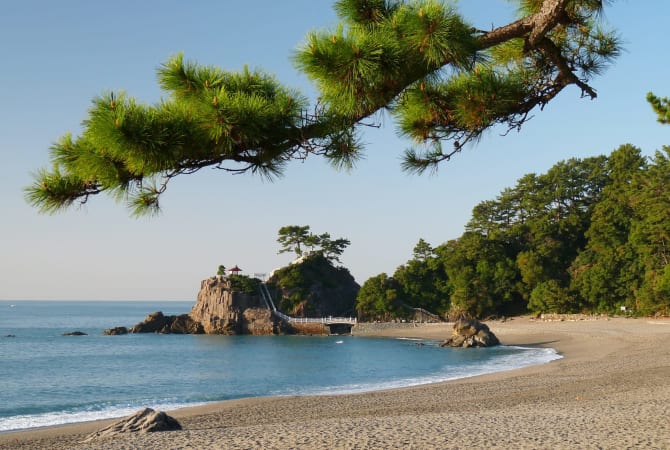
Travel Highlights
Popular places.
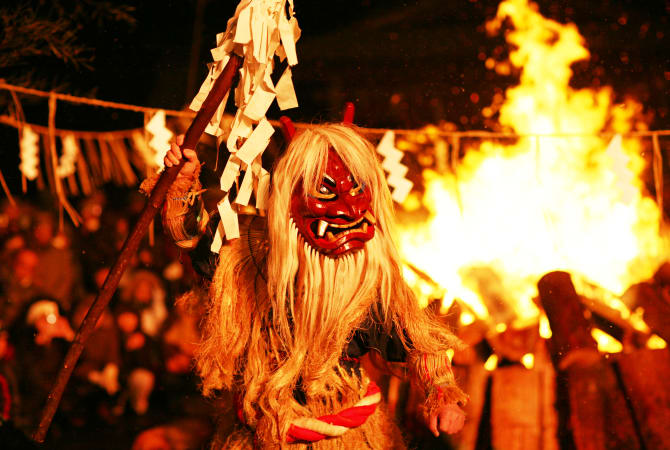
Explore by Interest

Important Notice
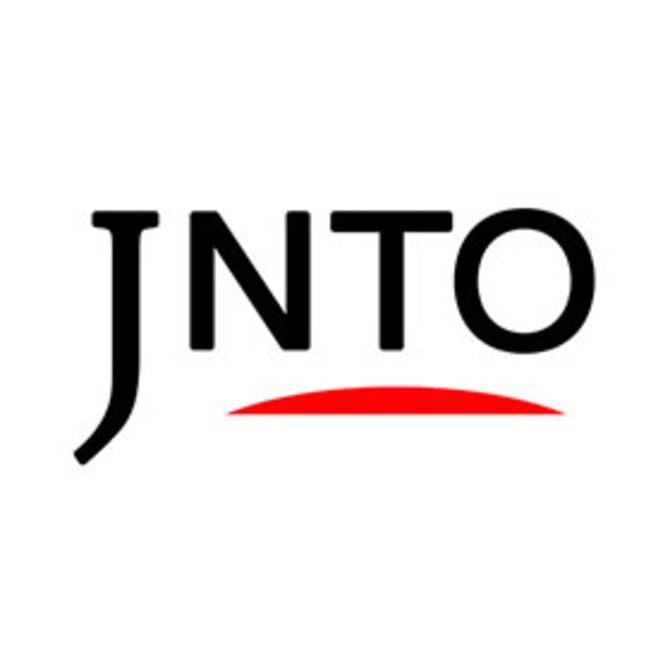
News from JNTO & Our Partners

Inspiring Articles
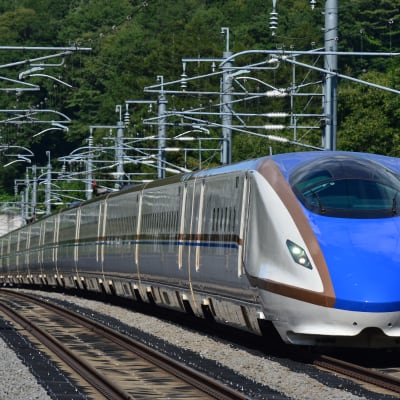
Food features
For First-Time Visitors
- Wi-Fi & Connectivity
- Weather & Geography
- IC Travel Cards
Where to Stay
- Luxury Stay
- Haneda Airport
- Narita Airport
- Osaka (KIX)
- Fukuoka Airport
Getting Around
- Shinkansen (Bullet Train)
- Luggage & Storage
Suggested Walks & Tours
- Tokyo 48 Hours
- Golden Route
- 2 Weeks in Japan
- Tour & Activities
Brochure Download
- Tours and Activities
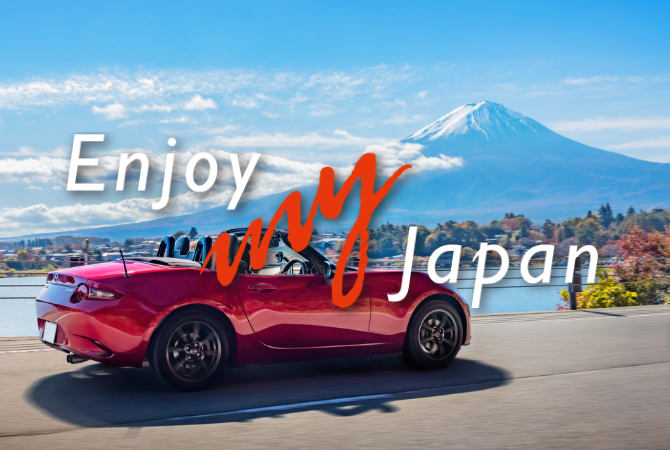
Japanese Government Information
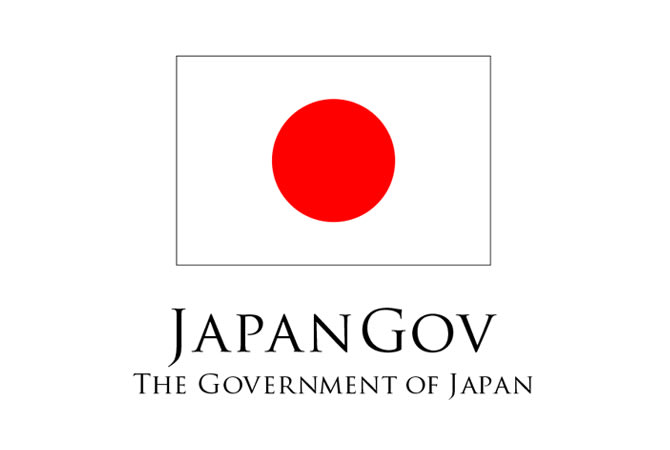
Please Choose Your Language
Browse the JNTO site in one of multiple languages

15 Essential Travel Hacks When Visiting Japan
A sk anybody what's on their travel bucket list, and their response is sure to include "Japan." Thanks to a combination of rich heritage, lush landscapes, and labyrinth cities packed with skyscrapers, temples, and tourist traps alike, the country has soared in popularity, with American Express claiming that the number of bookings has increased by 1,300% since 2019 (via Bloomberg ).
Part of what makes Japan so alluring is that its culture and customs are so distinct and unique to those of other countries. That's also what makes it an overwhelming travel destination, especially for first-time visitors. If you start your journey in a major city like Tokyo, Yokohama, or Osaka, you're instantly immersed in a world of neon lights, bustling crowds, loud noises, a million different smells, and sensory overload.
With so much to see, do, and eat, a trip to Japan really isn't the kind of vacation you can make up as you go along. The last thing you need is to run into an easily avoided stumbling block like a lack of internet or 30 minutes spent figuring out the route to your next destination — which is why you'll want to arrive armed with as much knowledge as possible.
Read more: 28 Bucket List Destinations That Everyone Needs To Experience At Least Once
Get Quick Meals At 7-Eleven
It's tough to walk for longer than 20 seconds without stumbling upon a convenience store in Japan. Also known as conbini, these stores are usually open 24 hours a day and are packed full of affordable tasty treats that will keep you going without the time (and money) it takes to eat at an actual restaurant.
For as cheap as 200 yen ($1.34), you can enjoy the likes of onigiri rice balls, chicken karaage, sandos, oden, and bento boxes. We also recommend picking up taiyaki for a quick sugar boost. Shaped like fish and made of pancake or waffle batter, they're usually filled with red bean paste, custard, and chocolate and make for an endlessly addictive snack.
The most common store is 7-Eleven, which has over 20,000 locations throughout Japan and is miles above its U.S. counterpart in the culinary department. There are also over 15,000 FamilyMarts scattered across the country, but they typically don't offer as much variety.
Get Pocket Wi-Fi
Public Wi-Fi is surprisingly scarce in Japan, which can put you in some tough spots if you get lost mid-metro commute. Fortunately, pocket Wi-Fi exists -- and it is a lifesaver. For as cheap as $5 a day, you can rent a portable device that will allow you to access the internet on the go, even on the train. The majority will allow you to connect multiple devices at the same time and come in a variety of different speeds and GB, with some even offering unlimited data throughout your stay.
If you rent in advance through a website like Ninja WiFi or Japan Wireless , you can pick up the device (also known by the much cuter name of a Wi-Fi Egg) at a designated counter once you've got through customs at airports including Haneda and Narita in Tokyo, Chubu Centrair, Kansai International, Fukuoka, and more. Once you're done, you can just pop it into the returns box at the airport on the way back. Easy.
Buy A JR Pass
Sadly, the JR (Japan Rail) Pass isn't as cheap as it once was. It surged in price by 70% in July 2023 as the yen continued to decline in value against other currencies around the world. However, if your itinerary includes extensive train travel, it's still worth the purchase.
The Japan Rail Pass will allow you to ride the rail to your heart's desire -- including the country's infamous, lightning-speed Shinkansen bullet trains (for a supplementary fee) and the Narita Express. It's more expensive to purchase once in Japan, so we recommend buying yours in advance on the JRailPass website where it costs $340.65 for seven days, $544.45 for 14 days, and $680.35 for 21 days.
If your visit is limited to just one or two cities, such as Tokyo and Osaka or Tokyo and Kyoto, then it probably isn't necessary. For example, a trip between Tokyo and Osaka typically costs $120 each way, which is considerably cheaper than forking out a few hundred dollars for a JR Pass.
Download Train Schedules And Maps
Japan has incredible public transportation. It also happens to be extremely overwhelming if it's your first (or second, or third) time in the country. Tokyo's metro can be especially confusing, with nine different train lines and 180 different stations to navigate. Its roads are even more complex with the majority not even having names, baffling even the city's own taxi drivers.
With that in mind, future-proofing for any situation where you may end up lost in an unknown place is always a good idea. Download or screenshot train schedules ahead of time through the JRailPass website, which offers both interactive and PDF versions of Tokyo, Osaka, and Kyoto's transportation systems. You can also download an offline version of the local area on Google Maps. This will also help if you face the aforementioned pesky issue of scarce public Wi-Fi, or if your portable Wi-Fi runs out of juice midday.
Use Citymapper
If you're visiting Tokyo, Citymapper is a must. Just like it does for multiple other cities across the globe, the award-winning app analyzes public transportation, congestion, and distance to figure out all the different ways you can reach your destination, and precisely how many minutes each option will take.
Whether it's walking, cycling, taxis, metro, or a combination of everything, all you need to do is select your chosen route and follow Citymapper's step-by-step instructions. When we say step-by-step, we mean it. The app's so smart that it will even tell you which exits and entrances to use at each station to make your journey as stress-free as possible. If you miss your stop or don't quite make your train, the app will also take that into account to restrategize your trip ASAP. You'll need to be online to request a new route, but if you check your journey ahead of time, you can save it to your homepage for offline use.
Visit Between January And March
There is no one "best" time to visit Japan, but there is a most convenient time. January to March tends to attract less crowds and will also usually bring the cheapest flights of the year. While it'll almost certainly be cold, you'll skip typhoon season and be in with a chance of seeing Japan in the snow.
If you do choose to visit at this time, just be sure to check the dates of the Lunar New Year (AKA Chinese New Year). This tends to be a public holiday across the region and will see cities across Japan packed with tourists. As it's such a popular time to travel, this will also be the exception to the "January to March is cheaper" rule with hotels and airlines driving up their prices over the holiday. The same is true of the end of March, which marks the beginning of cherry blossom season.
Make Advanced Reservations
There's a lot to enjoy in Japan. The problem is that everybody else wants to enjoy these things, too. Tourist attractions often book up months in advance, and a lot of them don't sell tickets at the gate, which doesn't leave much space for spontaneity for the average tourist visiting Japan .
If you plan on visiting the likes of the Warner Bros. Studio Tour Tokyo - The Making of Harry Potter, Tokyo Disney Resort, Ghibli Park, Shibuya Sky observation deck, Teamlab Planets, or the Studio Ghibli Museum, it's best to sort your tickets sooner rather than later. The Ghibli Museum is especially challenging, with tickets for the next month going on sale at 10 a.m. on the 10th of the month prior.
The same is true of the hotels at Tokyo Disney Resort . With one of the most impressive Disney hotel lineups in the world (including the MiraCosta, a hotel that is actually inside Tokyo DisneySea), rooms are in extremely high demand. These go on sale from 11 a.m. four months before the dates you hope to stay and are bookable through the Tokyo Disney Resort Online Reservations & Tickets website.
Download The Japan Connected-Free Wi-Fi App
If you don't want the responsibility of carrying around and charging pocket Wi-Fi, download the Japan Connected -free Wi-Fi app. Whether you need to double-check directions or just have a quick midday TikTok break, this handy tool will search over 170,000 internet hotspots to find the closest location to you. The majority of these will likely be at a 7-Eleven, where you'll almost always be able to go online.
As if that feature isn't useful enough, the app eliminates the need to fill in the registration forms that typically serve as a barrier before you can access public Wi-Fi. Fill out your name and email once and the app will complete each form on your behalf. While you used to need to be online to find the Internet (which kind of defeats the app's entire purpose), you can now download the offline map to ensure you can always find a connection. Just remember to be careful with what data you enter or share while using any public Wi-Fi network .
Japan has been a "cash is king" country for years, meaning paying with notes and coins is the default over ApplePay and credit cards. This attitude has slipped in recent years, but cash still has a strong grip on the country's residents with only 36% of people preferring cashless payments.
While you should be able to use your card in most major outlets and tourist locations -- such as department stores, malls, theme parks, supermarkets, and even taxis -- a lot of restaurants, cafes, and bars still prefer to be paid in cash. This number will be much higher outside of major cities, and many local restaurants, markets, or temples won't have the facilities to accept card payments even if they want to. Exchanging at least a chunk of your spending money into Japanese yen ahead of time will save you in sticky situations (plus it helps you control your spending, which is always a bonus).
Choose Taxis Over Ubers
Although Uber exists in Japan, it's not as widespread or commonplace as in countries like the United States, Canada, or the United Kingdom. Journeys tend to be more expensive than those taken with local cabs, making the latter the service of choice for locals and tourists alike.
The upside to Uber is, of course, the fact that it's so familiar for many tourists. It's easy to order your taxi and pay via card, and the entire process is in English. However, your cheapest option is to hail taxis on the street, as you won't need to pay a base fare for the pick-up service. It'll say on the front of a car in Japanese if it's occupied. It's also color-coded so tourists can understand. Red means it's taken. Green means it's available. If you do want to pre-book, most locals prefer to use the Go app for journeys anywhere within Japan's 47 prefectures. This works similarly to Uber, except it allows you to pay with both cash and card and will give you a flat rate for journeys to and from the airport.
Purchase A Suica Card
The question isn't so much what a Suica card can do ; what can't it do? This prepaid, contactless card can be repeatedly loaded up with more cash to pay for public transport, including the metro, trains, buses, and taxis. Beyond transportation, Suica is also accepted in many shops, restaurants, cafes, and even vending machines. Just look out for the Suica symbol to know if they do -- and if you can't spot it, it's at least worth asking.
You can purchase your card before arriving in Japan and return it at the end of your trip to recover your 500 yen ($12) deposit. Due to a manufacturing shortage, the sale of new Suica cards is temporarily on hold as of June 2023, but if you're on a temporary visa, you can still purchase a Welcome Suica card. This doesn't require a deposit, doesn't need to be returned, and is valid for 28 days. These can only be purchased inside Japan at locations such as Narita and Haneda airports and will come with a reference paper which you'll need to keep on your person at all times.
Utilize Storage Lockers
For security reasons, storage lockers are a rarity at train stations around the world. Japan is an exception. You'd be hard-pressed to find a major station without coin lockers (which, despite the name, can actually be used with a Suica card, too), and in Tokyo, most stations come equipped with storage facilities.
Baggage storage is one of those things you don't realize you'll need until you desperately need it. These lockers are useful if you only have a few hours before heading to your hotel or next destination and want to stow away your belongings so you can freely explore. They also happen to be extremely cheap, typically costing between $1 and $5. There's usually no problem finding a vacant locker, but if you are struggling, you can download the SPACER app , which will allow you to find and reserve a locker at major stations such as Shinjuku, Osaka, and Shibuya in advance. This is currently only available in Japanese, but there are plans for an English version in the near future.
Avoid National Holidays
Lunar New Year isn't the only holiday worth skipping if you want to avoid the crowds. National holidays bring in huge crowds anywhere, but especially Japan, where workers get little annual leave and want to take advantage of the break. If you do decide to brave big attractions like Shibuya Crossing, Senso-ji Temple, or Tokyo Skytree, you'll likely find yourself shoulder-to-shoulder with fellow tourists.
For a quieter vacation, April 29 to May 6 -- or, Golden Week -- is one of Japan's busiest holiday periods. This tends to be the most hectic season for the likes of Tokyo Disney Resort and Universal Studios Japan, where you can expect to wait in long lines for everything, from the park entrance to the restrooms. While Christmas isn't a national holiday in Japan, it is for many other countries, meaning the festive season can also bring an influx of tourists to both of these locations. Late September (Silver Week), New Year, and the Obon Week in August are typically also very busy.
Claim Your Tax Refund
From clothes to gadgets, Japan is one of the most unique places for retail therapy in the world. If you're a tourist, you can also shop with the peace of mind that you'll get at least some of your money back. Any non-resident visiting Japan for less than six months can enjoy tax-free shopping, meaning you can reclaim 10% of the value of your purchase.
There are a few catches. First, you'll need to check that the store is in fact a "tax-free shop" by checking for a logo stating as such at the entrance. They're extremely common and can be found in the likes of Namba City, Echika Ikebukuro, and Seibu Shibuya. You'll also need to have spent more than 5,000 yen ($33) in the same store on the same day. Some stores will let you pay tax-free from the offset if you present your passport, while others will require you to present your receipt at a tax exemption counter on the same day to get your money back.
Download A Good Translation App
If you know Japanese, you're good to go. For those of us who aren't bilingual, Japan can be tough to navigate at times. While most signs in major cities will have translations, less than 30% of people living in Japan speak English, which means it's inevitable you'll hit the language barrier at some point during your stay.
A good translation app is a must, especially one that's able to translate pictures. Google Translate is always a go-to, but one of the best choices is iTranslate Translator . Not only can it tackle text, but you can also use it to scan and translate menus, signs, labels ... you name it. Best of all, it can work offline if you download the Japanese pack ahead of time. It's free to download but will cost you $5.99 a month to unlock its full potential. Considering how useful it is, it's better to spend $5.99 than find yourself stranded in a restaurant blind-ordering a dish because you can't read the menu.
Read the original article on Explore .
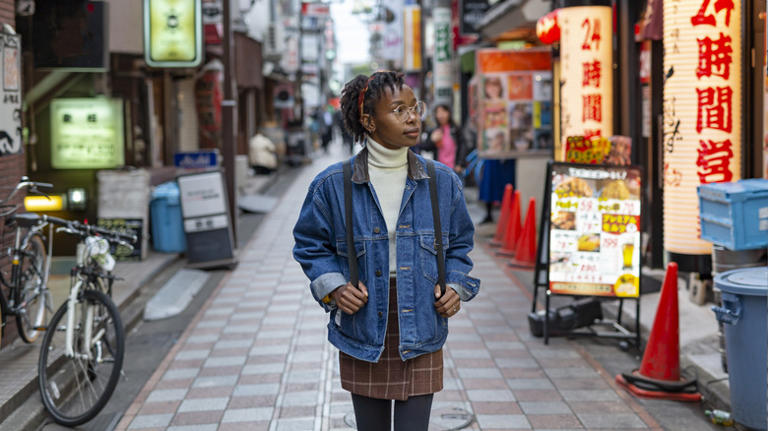
We've detected unusual activity from your computer network
To continue, please click the box below to let us know you're not a robot.
Why did this happen?
Please make sure your browser supports JavaScript and cookies and that you are not blocking them from loading. For more information you can review our Terms of Service and Cookie Policy .
For inquiries related to this message please contact our support team and provide the reference ID below.
Please view the main text area of the page by skipping the main menu.
The page may not be displayed properly if the JavaScript is deactivated on your browser.
- Entertainment
Japan eyes cashless tax refunds to stem illicit resale by tourists
April 24, 2024 (Mainichi Japan)

TOKYO (Kyodo) -- Japan is considering introducing cashless tax refunds for inbound travelers, as part of efforts to prevent them from illicitly earning money by reselling tax-free items before departure, sources close to the matter said Tuesday.
Under the envisaged system, the government would have foreign travelers pay for products that include the consumption tax, which would be later refunded through a credit card or other cashless format, the sources said.
Cash refunds at airports will remain available, but the government will encourage visitors to receive cashless refunds to avoid congestion at airports, said the sources. It aims to include the details of the system in tax reform plans for fiscal 2025.
In Japan, foreign tourists are exempted from paying consumption tax when purchasing goods totaling 5,000 yen ($32) or more as long as they intend to use the items in their home countries.
To prevent them from consuming or reselling tax-free items while traveling in Japan, the products are packed and sealed in bags or boxes before leaving the country.
If customs officials find that the travelers are not carrying the tax-free items they have bought, they are asked to pay the consumption tax.
But there have been a number of cases where travelers purchase massive amounts of tax-free items and resell them for profit at tax-inclusive prices before departing Japan, according to the sources.
Under the planned system, passports would be scanned at airports to allow customs officials to check a traveler's purchase history. Duty-free shops will then be notified if they are carrying the purchased products with them at the time of departure, the sources said. After receiving the notification, the shops would complete the refund.
Related Articles
- Huge resale scheme suspected as visitors to Japan evade tax on duty-free deals
- Int'l departure area of west Japan's Kansai airport caters to travelers after renovations
- Packages from China are surging into US. Some say $800 duty-free limit was mistake
Also in The Mainichi
Latest articles.

More Articles
- Go to Page Top

IMAGES
VIDEO
COMMENTS
Cheapest Way To Fly To Japan. Filter for tailored results. Book your flight easily. KAYAK flight search. Comparing flights since 2004. Trusted by 1m+ travelers.
Cheap Airfare To Japan. Cheap Travel Deals. Search Cheapest, Quickest & Best Flights. Find Cheap Flights from 1000s of Airlines and Travel Agents. Cheap flights. Made simple.
4. Go camping in the summer months. If you really want to do Japan on the cheap, you can rely on its network of well-maintained campsites in rural or resort areas; prices range from ¥500 to ¥1,000 per person or tent. Note that many sites are only open in the summer. 5. Swap a night in a hotel for an overnight bus ride.
The Seishun 18 is a 5-day ticket, costing 2,370 yen per day - a total of 11,850 yen. A fraction of the price of the Japan Rail Pass, this is a great option if you want to do lots of little trips or one or two big journeys during the 5 day period. Interestingly, the ticket can also be shared between up to 5 people.
The Cheapest Accommodation Options in Japan. Like practically every country in the world, prices in Japan have increased post-pandemic. In 2024, you'll be paying a little more for everything than you would have done a few years ago — in fact, prices almost doubled between my first trip in 2017 and today! — however costs are still on a par with most Western countries.
From the United States, a round-trip flight to Japan can be anywhere from $800 USD to $1500 USD. This cost will fluctuate depending on the time of year you choose to travel and where you're traveling from, so keep an eye on prices and see if you can score yourself a deal.
A regular JR pass that allows travel across the whole country costs 29,100 yen. This is incredibly reasonable. If you take a train from Tokyo to Kyoto, throw in a day trip to Nara and you've started saving money. Our plan was as follows: 3 days - Hiroshima and Miyajima. 2 days - Osaka. 1 day - Himeji. 1 day - Nara.
7. Hit up $1/plate conveyor belt sushi. Sushi-go-round, conveyor belt sushi, or "sushi kaiten" is a great way to dine affordably in Japan. Plates are colour-coded by price, but ¥100 (~$1USD) per plate conveyor belt sushi can be found throughout the country.
The price chart on this page is designed to give an idea of what you can expect to pay for a variety of everyday and travel-related items in Japan. Food, Drink and Sundries Price; drink: about 130 yen: cup of coffee: 100-600 yen: can of beer: about 250 yen: pint of beer: from about 500 yen: 1/2 liter of mineral water:
You can save money in Japan by living like a local. If you're staying in a hostel, buying a rail pass, eating relatively cheap food, and visiting a few attractions, budget around 10,000-16,000 JPY per day. However, by utilizing the tips above, I think you can travel Japan for 7,000-10,000 JPY per day.
6. Book your accommodation ahead of time. Budget-friendly places fill up first. Unfortunately, Japan is one of those countries where planning ahead is going to save you lots of money. Our guesthouses and hostels were all booked on Booking.com and Hostelworld.com for anywhere from $7.50-$23 per person.
From the creators of Tokyo Cheapo, Japan Cheapo is a site dedicated to helping you get the most from your yen while travelling around Japan. More than 100,000 people visit Japan Cheapo each month for help in planning their trip to Japan. Combined with Tokyo Cheapo, total reach exceeds 850,000.
Japan can be a cheap country to travel, but it still requires some careful budgeting to balance having a good time with not going broke. Thankfully, there are plenty of services for travelers to take advantage of to save money in Japan and travel cheaply. This includes train passes, discount tickets, limited-time sales, cheap restaurants, capsule hotels, and more. But to travel Japan cheaply ...
The fast train from Tokyo will cost around $120. This is where the Japan Rail Pass really comes in handy. If you plan to do even a small amount of traveling between cities, it will pay off quickly. You'll get unlimited rail travel with the seven-day pass for $294.
This sounds pretty expensive, but it is "only" 30 us$ a day and you can ride unlimited. Here is why a prepaid Japan Rail Pass will save you money: A train ticket between for instance Tokyo and Kyoto cost about 120 us$ one way, and the ticket between Kyoto and Hiroshima cost about 100 us$ one way.
Alternatively, Bookaway is another great site to find cheap bus tickets in Japan. 4. Get a Rail Pass for Long-Distance Travel. Alternatively, if you're planning on taking frequent, long-distance trips, then getting a Rail Pass might be a better option in the long run. As mentioned, traveling by bullet train, otherwise known as "shinkansen ...
A trip on a local train from Kyoto to Tokyo costs around 8,360 JPY instead of 13,320 JPY for the bullet train. However, the local train journey takes 9 hours instead of 3 hours and requires several transfers, making it a less than an ideal choice for most travelers.
6. Shop cheap. Tax-free. 100 yen shop. Japan Wonder Travel Tours. Read more Japan tips. 1. Travel season. Peak seasons for Japanese travelers (which means peak hotel rates) are usually cherry blossom season from late March to early April, and autumn foliage season from mid-November to early December.
Japan is NOT expensive. Find out how to travel Japan on a budget in the first part of our Japan travel guide series and discover where you can find the cheap...
One of the cheapest times to visit Japan is during the off-season, which runs from late October to early April. During this time, airfare and hotel rates are typically lower than they are during peak travel periods. Additionally, many attractions offer discounted admission during the off-season.
Most people who have travelled in Japan will recommend getting a JR Pass and for good reason. These 7/14/21 day tickets give you unlimited transfers across the majority of Japan's transport networks including trains, buses and ferries. However they are by no means cheap and would have cost us over $1,000 for 3 weeks of travel.
Travel To Japan for Cheap (Really!) How to find an inexpensive way to Japan and then save money while you're there! January 5, 2012 • words written by Hashi • Art by Aya Francisco. Last year, I wrote about a plan by the Japanese government to give away 10,000 free airplane tickets to Japan to boost its slumping tourism industry.
When it comes to a specific plane ticket to Japan cost, it's difficult to name an exact figure, but you should expect to pay no less than $1,000 round-trip (in economy) from most cities in the US and Europe, and at least $500 return from points within Asia, sometimes even including neighboring countries like China and South Korea. Business class flights are several times more expensive—it ...
Cheapest round-trip prices found by our users on KAYAK in the last 72 hours. One-way Round-trip. Tokyo nonstop $595. Osaka 1 stop $785. Okinawa 1 stop $664. Fukuoka nonstop $649. Hiroshima 1 stop $1,087. Nagasaki 3 stops $1,146. Kagoshima 2 stops $1,178.
Completing the scene are the serene reflecting pool and traditional Japanese gardens that contain lush foliage, manicured trees, and scenic walking paths. 1 Kinkakuji-cho, Kita-ku, Kyoto-shi, Kyoto, +81 075-461-0013, shokoku-ji.jp. Open daily 9am-5pm. Admission is 500 JPY. Admire Ryoan-ji Temple.
The official site of Japan National Tourism Organization is your ultimate Japan guide with tourist information for Tokyo, Kyoto, Osaka, Hiroshima, Hokkaido and other top Japan holiday destinations. We offer travel information to make your Japan travel more comfortable and enjoyable.
5D4N Tokyo Travel Itinerary: Best Things to Eat, See, & Do for First-Time Travellers There's a reason why Tokyo is Japan's most popular travel destinations. Read our itinerary guide on the best things to eat, see, and do in Tokyo, from cultural sights to the best restaurants, must-visit attractions, and day trips suggestions!
Public Wi-Fi is surprisingly scarce in Japan, which can put you in some tough spots if you get lost mid-metro commute. Fortunately, pocket Wi-Fi exists -- and it is a lifesaver. For as cheap as $5 ...
Going on vacation in a country where the dollar is strong is like getting a built-in discount. The Japanese yen is 35% cheaper against the dollar than it was in April 2019. Japan's delicious food ...
1:23. Japan hosted a record number of tourists in March as the country's early start to cherry blossom season and a weakening yen drew in holidaymakers. Visitors totaled 3.1 million in March, up ...
Source: Japan National Tourism Organization. For the first quarter of this year (January-March), Japan welcomed over 8.5 million tourists. During this period, international travelers collectively ...
In Japan, foreign tourists are exempted from paying consumption tax when purchasing goods totaling 5,000 yen ($32) or more as long as they intend to use the items in their home countries.